Marcu Taylor's Blog, page 6
September 8, 2020
The Best Social CRMs [10 Apps Compared]
You need a social CRM to build better customer relationships and convert more business, but when you think about labouring through another “best of” article you’d rather have a heated conversation with politically-divided family members.
We get it, but here’s the thing: You will never be able to make a final decision on a social CRM solely from reading articles. Reading guides like this one is the first step of the process. The second (and final) step is creating a shortlist of potential tools to try.
So the bad news is that this is another “best of” article. But, the good news is that this isn’t another watered-down fluffy piece on some tools we randomly chose. We hand-picked these social CRMs and varied our choices to suit different business types. After reading this guide, you should be able to create a shortlist of tools and start some free trials.
By the time you finish reading this guide, you will:
Know which social CRM will fit your budgetUnderstand which social CRM will help you meet your business goalsBe able to create a shortlist of tools to try out based on the features you need most
We also included a simple comparison chart to help you review the best social CRMs at a glance (for those of you who like the bottom line).
Let’s quickly cover what a social CRM is and why you need it (this is important). We will then discuss our chart and give you a rundown of our 10 best social CRM tools.
What is a Social CRM and Do You Even Need One?
If you just started your business journey and have five connections on LinkedIn and no customers, you may not need a social CRM. But, if you are already using a CRM and/or you realize you need an automated way to connect with prospects and customers on social media sites, it may be time to give one a try.
If you are new to the world of CRMs, they organise and manage your customer data, from sales pipelines and deals, contacts, internal and external content, and more. CRMs provide you with the ease to market better and close more deals and sales.
Social CRMs bring customer relationship management to the next level by offering social integration or social media management functionality. This functionality could be built into the tool or available with the integration of a third-party app.
Social CRMs extend beyond simple customer organisation and management by integrating social media data and conversations. This allows businesses to incorporate customer engagement into their marketing strategy to better capture social conversations and data to increase conversions. It’s kind of like a CRM on steroids. Social CRMs focus on customer interests instead of just demographic data. Without social features, your CRM is a one-way conversation.
The term “social CRM” is not easily defined, however. Many tools call themselves social CRMs, but they may not offer built-in social integrations. As a result, the lines between traditional CRMs and social CRMs may be blurred, which will make it harder for you to figure out which tool is best for your business.
For the sake of simplicity, we’ve defined social CRMs as tools that have one or more of these three types of functionality.
1. Social integration (built-in)
When a tool has social integration, it can communicate with external social platforms and share data. For example, you can transfer customer data from LinkedIn and add it to one of your existing CRM contacts. Some tools offer these integrations natively (they are built into the platform). This provides a more seamless experience and less time tinkering to get your desired outcome. Note that when we talk about “social integration” this doesn’t include social media management where you can post to your social profiles or manage your social content directly from within the platform.
2. Social integration (third-party apps)
Some tools will require the use of third-party apps such as Zapier and Automate.io to integrate with social platforms. Using third-party apps will require additional money and time to set up, so keep that in mind as you review the social CRM tools. We included two of these CRMs in this article (Pipedrive and Keap) because built-in social integration may not be as important to some as it is to others. It depends on your business goals and your current setup. Note that this functionality does not give you the ability to post to your social profiles or manage its content.
3. Social media management
These tools offer complete social media management, which includes the ability to post and schedule content to multiple social profiles, and engage with your community directly within the platform. This functionality may also include social listening (monitoring your industry for key insights and brand mentions), social analytics, influencer insights, and more depending on the platform’s offerings.
Below is a comparison chart for the 10 social CRM tools we discuss in this article, along with the criteria above. When you see “All-in-one traditional CRM,” we refer to a traditional system that allows you to import, manage, and organise your contacts directly in the tool and automate marketing tasks (some may also offer customer support features). These all-in-one CRM tools have social features integrated or available as an add-on.

The 10 Best Social CRM Tools
Without further adieu, here are our picks for the 10 best social CRMs. If you use one that is not on this list, please let us know in the comments, and we will review it in more detail.
Agorapulse – Best social CRM with social media management and a full-featured starter package Hubspot – Best social CRM with an intuitive all-in-one CRM and social media management Pipedrive – Best sales pipeline management with social integration via 3rd-party apps Keap – Best all-in-one traditional CRM with social integration via 3rd-party apps Nimble – Best social CRM with pipeline management and built-in social integration Sprout Social – Best social CRM for social media management and powerful automation Zoho Social – Best social CRM with all-in-one CRM and social media management Salesforce – Best social CRM with an all-in-one traditional and social media management for small to enterprise-level companies eClincher – Best social CRM with social media management and a larger number of social channel integrations Crystal – Best social CRM with Personality AI and built-in social integration
#1 Agorapulse
Best social CRM with social media management and a full-featured starter package
Agorapulse was created strictly for social media management and is known for its feature-rich platform that extends far beyond basic social media management. If you are not looking for an all-in-one CRM, but you want robust social media management features, Agorapulse is one to try.
In addition to social media management and reporting, Agorapulse also has a feature that automatically profiles specific people on social media sites who may be influential to your marketing campaigns. Label and categorise these social profiles to run more targeted campaigns.
With Agorapulse, you can post and schedule content simultaneously. Create content once and publish to multiple social networks. Also, schedule content weeks and months in advance by queuing up posts for future publishing with expiration dates. All of the content lives on a shared calendar for easy access and management.

Manage all social posts, comments (from ads as well), direct and private messages directly in the platform. Segmenting is also available with the ability to add custom labels to your highest engagers and categorise them by adding each to a custom segment (ex: customer, ambassador, qualified lead, etc.)
Inbox assistant is an organising system for your messages so you can easily keep track of your activity with features such as saved replies, one-click translations, filters, and more.
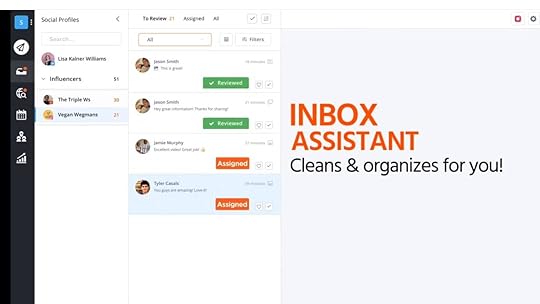
Run competitive analyses with its Facebook Competitors visual report. Agorapulse also just introduced its Power Reports add-on which enables you to create custom social reports and automatically send them to team members at designated dates and times.
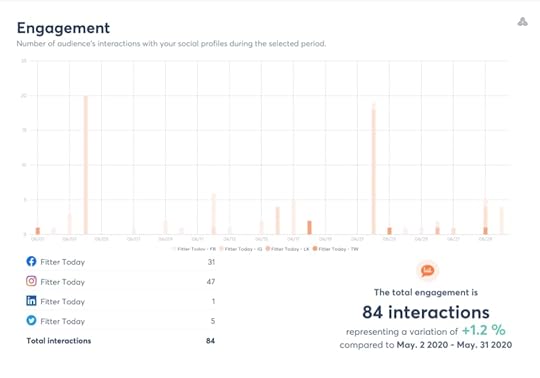
Agorapulse features:
Custom segments and audience labelsRoles and permissionsSocial posting and schedulingShared calendar view with clientsSocial comments managementAutomated Inbox assistantBulk uploadPublishing insightsAdvanced reporting and analyticsCompetition analyticsMobile application
Pricing:
28-day free trial offered
The Medium plan (lowest plan) starts at $79/month billed annually for 10 social profiles and two users. Additional profiles and users cost $15/month and $30/month, respectively. The plan offers features such as inbox assistant, ad comments monitoring, unified calendar, unlimited scheduled and queue posts, permissions, bulk scheduling, custom labels and internal and competitor reporting.
Premium plans start at $159/month, which includes 25 social profiles and four users. Premium packages add on priority support and training, as well as a higher number of active ads allowance and increased time to retain your data on the platform.
We like Agorapulse’s full-featured starter package (Medium). It includes all of the features of premium packages except onboarding training, a dedicated account manager and a few other smaller features.
Check out Agorapulse to learn more.
#2 Hubspot
Best social CRM with an intuitive all-in-one CRM and social media management
Hubspot is an all-in-one CRM that enables you to manage all of your contacts as well as your marketing and customer service. Hubspot has been a top-rated CRM for years and continues to garner stellar reviews for its feature stack, robust free plan and intuitive platform. With its social media lead intelligence, sync your social profiles to your existing leads to empower salespeople with more prospect information (a feature offered in Hubspot’s traditional CRM).
Hubspot offers social media management features in its add-on product, Marketing Hub. Publish and schedule content to all of your social networks, share content, reply to messages, and more. Hubspot also offers suggestions for the best times to post.
Connect the following social accounts directly to Hubspot:
TwitterFacebookInstagramLinkedInYouTube
Track significant interactions by creating keyword monitoring streams so your team can search and access these interactions at any time.
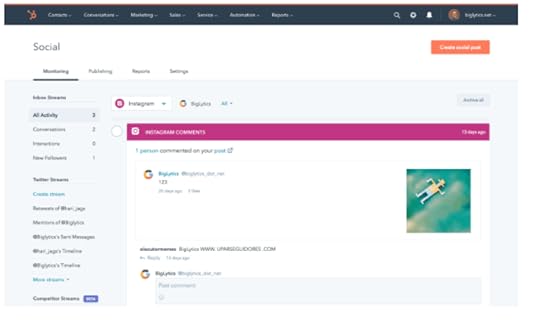
Consult Hubspot’s social reports to assess your social engagement successes and areas of improvement. Compare the performance of all of your campaigns and publishing times and access all reporting from one central interface.

Hubspot Social CRM features:
Social posting and schedulingSocial comments managementCustom segmentsBulk uploadPublishing insightsAdvanced reporting and analyticsMobile application
Pricing:
Free plan available
Find Hubspot’s social media management features in its Marketing Hub product. The Free plan is limited but offers enough features to try out the platform such as management of Facebook, LinkedIn, Instagram and Google ads, contact management, email marketing, forms, live chat and traffic and conversion analytics.
The Starter plan for Hubspot’s Marketing Hub starts at $50/month and includes features such as conversations inbox, team email, live chat, email marketing, list segmentation, landing pages, and ad retargeting. Note that social media publishing and scheduling is only available on the Professional plan starting at $800/month billed annually.
The Professional plan includes additional features such as company scoring, record customisation, phone support, content strategy, social media tools, marketing automation, A/B testing, custom reporting. Social permissions and YouTube integrations are only available in the Enterprise package, starting at $3,200/month.
We think Hubspot is one of the best CRMs on the market because of its easy-to-use interface and feature-rich free plan. But, Hubspot may be overkill if you don’t want all of the marketing features available in Marketing Hub or an all-in-one CRM.
Check out Hubspot to learn more.
#3 Pipedrive
Best sales pipeline management with social integration via 3rd-party apps
Pipedrive is the first of two CRMs in this guide that uses 3rd party applications to connect its database with social network information. We included Pipedrive because we are big fans of the tool over here at Venture Harbour, and you can still enjoy the benefits of social CRMs even though the integration is not built-in.
Pipedrive is a simple and affordable CRM perfect for generating and managing your leads, sales and pipelines for activity-based selling.
It’s not an all-in-one tool like Hubspot or Zoho, but it was created by salespeople, for salespeople, and known for its quick and easy pipeline management functionality.
Pipedrive’s drag-and-drop interface includes multiple features such as deal probability, customisable pipelines, leads inbox, chatbot and more.
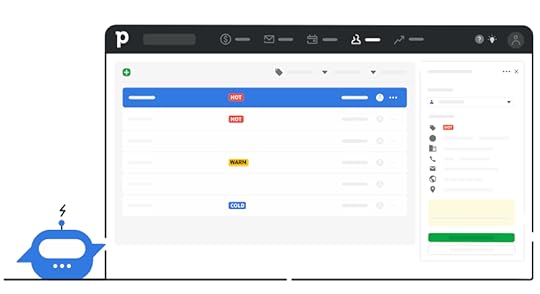
To connect Pipedrive with your social networks, use third-party applications such as Zapier or Automate.io. Set up triggers and actions for each social network and tell the application how to integrate with Pipedrive.
The first step is to set up a trigger. Here are a few suggestions from Zapier:
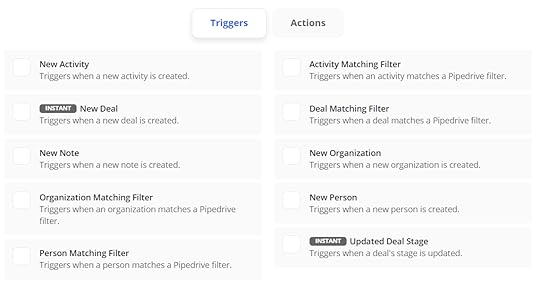
Then, match the trigger with an action:
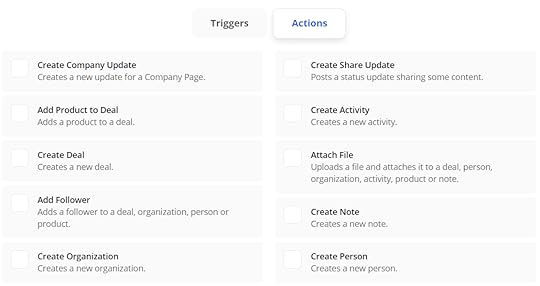
[image error] The first of many Zapier actions available when connecting LinkedIn to Pipedrive
For example, set up actions to automatically create a new deal on Pipedrive (action) whenever someone submits a form via your LinkedIn Lead Gen Form (trigger).

With apps like Zapier, set up hundreds of possible automated workflows and customise social integrations to work for you. Zapier also offers automated integrations with 2,000+ apps.
Pipedrive features:
Contact managementCustomisable sales pipelinesCustomisable reportingOutbound calls, logging and reportingAI-powered sales assistantLead management and scoringSales forecastingDeal probability and rottingMobile apps and integrationSocial integration with 3rd-party apps
Pricing:
14-day free trial offered
Pricing starts at $12.50 per user/month billed annually. The Essentials plan includes features such as contact and deal management, customisable pipelines, deal rotting, activity management, web forms, email inbox, basic meeting scheduler, sales assistant, deal reporting and more.
Premium plans start at $24.90 per user/month billed annually. They include additional features such as a products catalogue, group emailing, customisable email templates and signatures, workflow automation, leads reports, custom fields, team management, and more.
To use the social integration features, you also need to purchase a 3rd-party app. Zapier offers a free plan that includes five single-step zaps (automations) for 100 tasks a month. The premium Zapier plans start at 20 zaps and 750 tasks a month and include multi-step Zaps, three premium apps, filters, formatters, and connections via webhooks.
Check out Pipedrive to learn more.
#4 Keap
Best all-in-one CRM with social integration via 3rd-party apps
Keap (formerly Infusionsoft) is a robust all-in-one CRM with sales and marketing automation, and customisable campaigns.
Reviewers have labelled Infusionsoft as a hard-to-use tool that requires a learning curve and some coaching to adapt and use. For this reason, the company re-branded Infusionsoft and created a simpler solution for businesses (Keap) that did not have as many bells and whistles and consequently, fewer headaches.
Both Keap and Infusonsoft help businesses track contacts and create conversions with powerful automation, but Keap offers fewer features and a simpler user experience. The original Infusionsoft CRM is still available under the name “Infusionsoft by Keap.”
Similar to other CRMs, Keap allows for easy messaging and follow-ups with the organisation to help you track messages and retain and win new business.
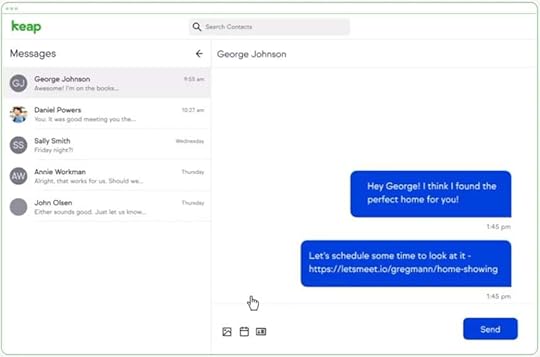
The upgraded version of Keap (Keap Pro) offers email and marketing automation with a landing page builder and customisable web forms.

Similar to Pipedrive, adding social CRM features requires third-party apps such as Zapier or Automate.io.
Keap features:
Contact managementMarketing automationEmail automationAppointment schedulingQuotes, invoices & paymentsReporting & insightsMultichannel messagingPipeline managementMobile application
Pricing:
14-day free trial offered
Keap’s starter plan is Keap Grow and pricing starts at $79/month for 500 contacts and one user. The Keap Grow plan includes contact management and segmentation, quotes and invoicing, appointment scheduling, email marketing, email sync, and simple automations.
Keap Pro is an upgrade to Keap Grow, and pricing starts at $149/month for 500 contacts and one user. Keap Pro adds on features such as landing pages, sales pipeline, A/B email testing, recurring payment invoicing, campaign builder and pipeline automation.
If you want to try Infusionsoft for Keap, the more robust form of the platform, pricing starts at $199/month for 500 contacts and one user. Infusionsoft includes most of Keap’s features plus a customisable dashboard, lead scoring, advanced reporting, shopping cart, checkout pages, order forms, and affiliate management.
If you want the features of a social CRM where you can connect Keap with your social contacts and import information along with other automations, you will also need to factor in the price of third-party apps such as Zapier and Automate.io.
#5 Nimble
Best social CRM with pipeline management and built-in social integration
Nimble is sales pipeline management software with built-in tools to help you leverage the power of social media with a traditional sales pipeline-focused CRM. Nimble isn’t a social management tool like Agorapulse. If you are looking for a social media management tool with monitoring and scheduling, this is not the tool for you. Nimble is a sales CRM that powers your sales pipelines with added social functionality to power up your sales prospecting and deal management.
You can see that here with Pipedrive’s visual sales pipeline interface, which includes drag-and-drop functionality that integrates all of your collected data into prospect records.
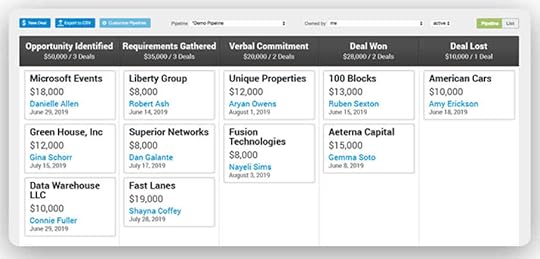
Nimble is best known for its powerful browser extension, Nimble Prospector, that enables fast, automatic updating of social contact data outside of the Nimble platform. Prospector works on websites such as Twitter, LinkedIn, Facebook, Outlook inbox (integrates directly with Microsoft Outlook), Gmail inbox or any 3rd-party cloud-based application.
If you highlight a name on the web, Prospector brings up a current contact record or allows you to create a new one. View interaction history, emails, calendar events, social conversations and more, all from any platform of your choice. Perform multiple tasks with this extension, such as scheduling events, calls, logging activity, and more.
 Nimble Prospector’s interface (right) inside a 3rd-party platform
Nimble Prospector’s interface (right) inside a 3rd-party platform[image error]Nimble’s dashboard is rich with pertinent data that you want at a glance. Things like your calendar, sales pipeline, sales tasks, upcoming appointments, analytics, email tracking, reminders, social signals and more, live on your main dashboard for easy review and management.

Similar to other social CRMs, Nimble enables you to segment contacts into groups for tagging and easy follow-up and maintenance.
Nimble features:
Sales pipeline managementSales analyticsContact segmentationBrowser extensionData integrated from social networksSales forecasting & analyticsGroup messagingUnified dashboard and calendarOffice 365 and GSuite integrationMobile application
Pricing:
14-day free trial offered
The Nimble Business plan starts at $19 per user /month billed annually and offers all of Nimble’s features including 25,000 contacts, contact management, unified message inbox, calendar and email sync, social media signals and profile match, email tracking, pipeline management, and 2GB of storage. As you grow, you do not upgrade to a higher plan but simply pay for more contacts, users, storage, messages and custom fields as needed.
Check out Nimble to learn more.
#6 Sprout Social
Best Social CRM for social media management and powerful automation
Sprout Social is a powerful social media automation tool that offers a lot of features. The social CRM offers six different arms of functionality: collaboration, automation, listening, publishing, engagement, and analytics.
Sprout Social integrates with the following social platforms:
FacebookInstagramTwitterLinkedInPinterestGoogle My Business reviewsTripAdvisor
Sprout Social’s Unified Smart inbox makes it easy to filter, tag, and customise your messages from every social platform, all in one interface. Streamline your team collaboration by organising your incoming messages with keyword and hashtag monitoring or client priorities.

Similar to other social CRM tools, Sprout Social also offers a shared calendar to view and manage all of your activity across networks and marketing campaigns.
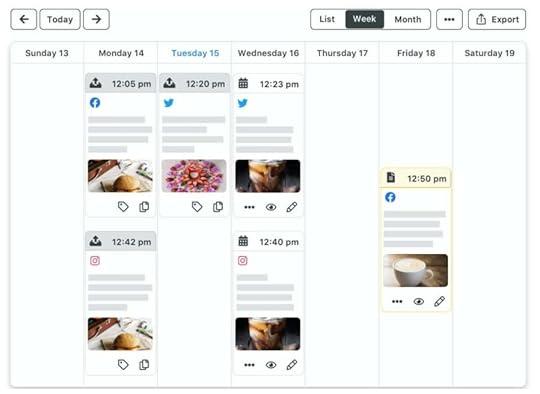
Sprout Social’s Suggested Replies feature automatically suggests replies for incoming Twitter messages to reduce the time it takes to create new answers. Additional features include sending automated surveys after customer conversations and measuring NPS® and CSAT scores.
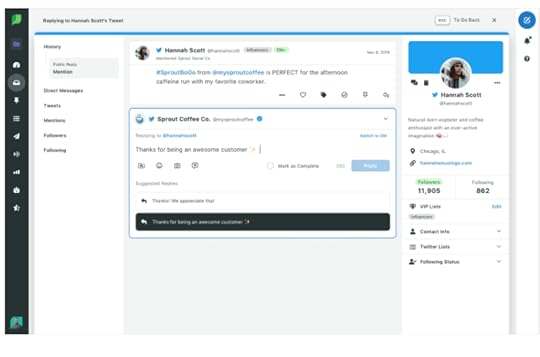
Sprout Social also integrates with Zendesk or Hubspot Service Hub to capture incoming customer-service messages from social media.
Sprout Social features:
Post publishing and schedulingSocial QueuingSocial comments managementAdvanced reportingUnified or shared calendarSmart insightsCompetitive analysis and reportingRoles and permissionsSocial listeningCustomised workflow automationAutomated surveysBot builderUnified smart inboxMobile application
Pricing:
30-day free trial offered
The Standard plan starts at $99 per user/month for five social profiles. The Standard plan includes features such as all-in-one inbox, publishing and scheduling posts, social calendar, social review management, CRM tools, and paid promotion tools.
Premium plans start at $149 per user/month for 10 social profiles. They include additional features such as competitive reporting, message tagging, custom workflows, paid social reporting, helpdesk integration, chatbots, automated link tracking, twitter surveys and more.
Check out Sprout Social to learn more.
#7 Zoho Social
Best Social CRM with all-in-one CRM and social media management
Similar to Hubspot, Zoho offers social integrations that integrate with its CRM (a separate product). When you find prospects on the web, sync your leads with Zoho CRM by importing their data into the CRM to beef up their records.
Zoho has a separate add-on product called Zoho Social. Zoho Social offers all of the features you would expect from a social management tool: the ability to monitor, publish, schedule and measure content success. The tool also provides additional features such as SmartQ which analyses past data and enables you to send posts at the time your audience is most likely to engage with them.
Zoho Social integrates with the following platforms:
FacebookTwitterLinkedInInstagramGoogle My Business
Zoho Social offers a drag-and-drop calendar for easy content management, with the ability to move content around, reschedule, bulk upload and publish right from within the calendar. Filter your view and easily spot content gaps.
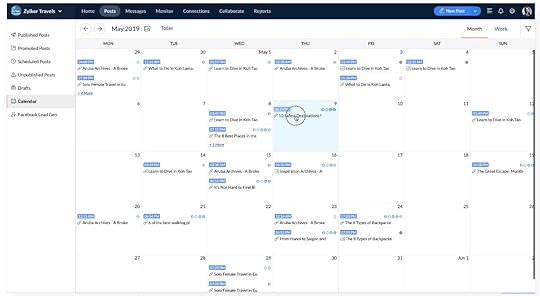
We like Zoho Social’s collaboration features allowing teams to discuss content and performance directly in the platforms.
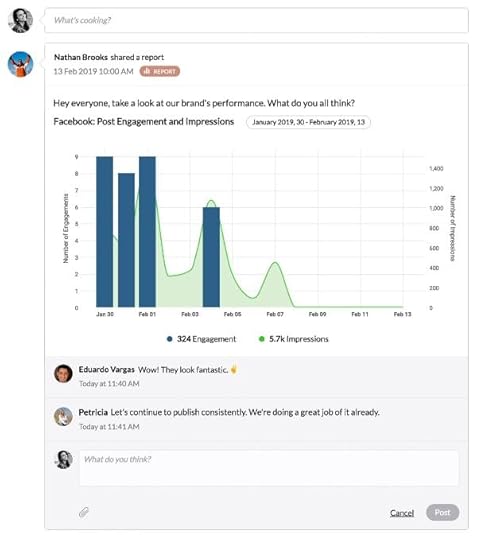
Zoho Social also has a browser extension called zShare, which allows you to curate the best content while you are browsing the web. Pull the content into Zoho Social for immediate sharing or scheduling.
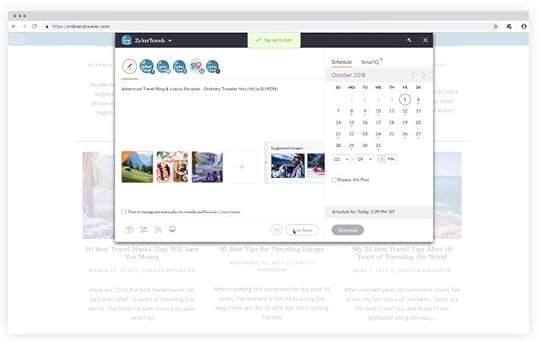
Zoho Social features:
Social publishing and schedulingSmartQSocial analyticsSocial monitoringSocial comments managementzShare browser extensionBulk schedulingCustom audience targetingShared calendarRoles and permissionsMobile application
Pricing:
14-day free trial of the Professional plan
The Standard plan starts at $10/month billed annually for one brand (seven channels) and two team members. This plan includes social publishing and scheduling, SmartQ, pause/resume scheduling, analytics, social monitoring, Zoho Desk and Zoho CRM integrations, and the zShare browser extension. You can add on more brands and/or team members for $8.33/brand/month and $8.33/member/month billed annually.
Premium plans start at $25/month billed annually for one brand (seven channels), three team members and 10 custom reports/brand (Professional plan). Additional features include publishing calendar, CustomQ, scheduled reports, Facebook lead ads and forms, and more. You can add on more brands and/or team members for $16.66/brand/month and $8.33/member/month billed annually.
Zoho Social does have a limited free plan available that you are automatically grafted into once your free trial ends. The free plan only uses the “Publish now” feature, without scheduling.
Check out Zoho Social to learn more.
#8 Salesforce
Best social CRM with an all-in-one CRM and social media management for small to enterprise-level companies
Arguably one of the most extensive CRMs in the galaxy, Salesforce is known for its customisation potential for businesses to create a solution that works for their needs. Though Salesforce is best suited for large and enterprise-level companies with big enough budgets to handle the customisation and features, it offers a small business track for businesses with lower budgets who still want to try the tool.
With its primary CRM offering, Salesforce offers built-in social integration so you can import your contact’s social profile information directly into the CRM. Salesforce also provides Social Studio, its social media management tool that schedules, queues and manages social posts, monitors social activity, runs analytics reports, and provides an all-in-one dashboard to manage all of your social activities. Social Studio is a component of Salesforce’s marketing product, Marketing Cloud, an add-on to its CRM with additional costs and setup.
Similar to other social media management tools, Social Studio offers an all-In-one interface so users can respond to external social posts, manage customer service and content in one location.
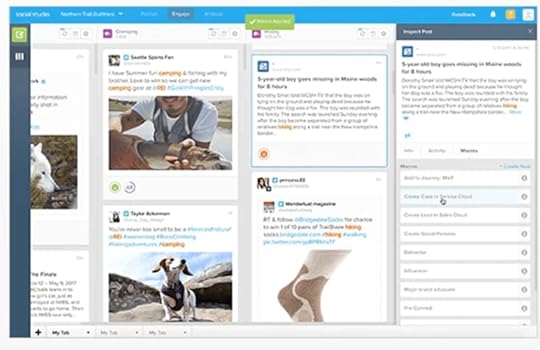
Collaboration is also strong with the ability to review and approve content before it goes live. Create workspaces for teams with role-based access for security.
Salesforce calls its customer engagement interface the Command Center where you can review live displays of your audience engagement, real-time customer feedback and conversations, and other marketing and sales activity. Filter to see the most pertinent information, and monitor in real time.
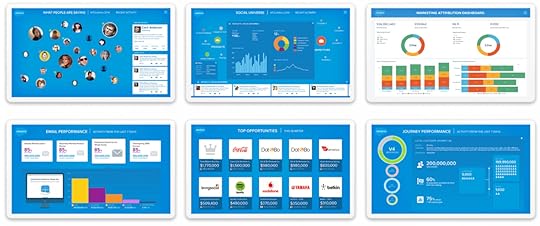
Salesforce Social Studio features:
Social publishing and schedulingSocial listeningSocial comments managementSocial analytics and reportingContent managementRoles and permissionsSocial advertisingCommand Centerinfluencer scoresMobile application
Pricing:
No free trial. Contact the vendor for specific pricing.
Salesforce Social Studio’s Basic plan starts at $1,000/month billed annually for 20K monthly mentions and two users. It includes Salesforce CRM integration, brand listening and community engagement, monthly mentions, influencer scores, custom filtering and more. Post publishing is available on the Basic plan for an additional $500/month.
Premium plans start at $4,000/month billed annually for 250K monthly mentions and 10 users with additional feature upgrades such as content publishing, post automation and third-party app partner access.
Salesforce Command Center and Premier Success cost an additional fee on all plans.
Check out Salesforce to learn more.
#9 eClincher
Best social CRM with social media management and a larger number of social channel integrations
eClincher is a social CRM tool similar to Agorapulse and Sprout Social in that its primary offering is social media management. Though reviewers mentioned it is not as “pretty” as other tools in its class, it packs a punch for a reasonable price. The tool offers the standard social management features as the previous tools we discussed, such as scheduled posting, unified inbox, social monitoring, analytics, auto-publishing and more.
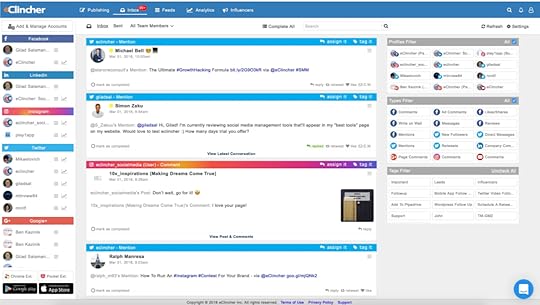 eClincher’s unified inbox (
Source
)
eClincher’s unified inbox (
Source
)[image error]One of the standouts with eClincher is the number of social media sites it integrates with:
Facebook (ads, pages and profiles)Instagram (personal and business)TwitterYouTubeLinkedInGoogle My BusinessYelpTikTokPinterestGoogle AdwordsGoogle Analytics
Additional features offer the ability to find content to post with eClincher’s real-time live social feeds, or take advantage of the suggested content feed, a curation of content based on your hashtags and keywords.
eClincher’s features:
Post publishing and schedulingCalendarSocial queuingUnified Social InboxIntegrated RSS FeedsSocial MonitoringCompetitor AnalysisCampaign TrackingContent managementMobile application
Pricing:
14-day free trial offered
The Basic plan starts at $50 /month billed annually for 10 social profiles and one user. It includes the social inbox/CRM, unlimited scheduling and content management, scheduler, suggested hashtags, autopost, suggested content feeds and more.
The Premium plans (Premier and Agency) start at $102 /month billed annually and add on features such as external users and post approvals, shared calendars, competitor benchmarking, media library, team collaboration, and upgrades to the Basic features (10 suggested content feeds instead of three).
Check out eClincher to learn more.
#10 Crystal
Best social CRM with Personality AI and built-in social integration
Crystal isn’t as well-known as some of the other social CRMs we discussed here. Still, we thought it was worth a mention because of its innovation in sales, marketing, recruiting and leadership using Personality AI.
Crystal relies on the DISC and other popular personality assessments to power communication and prospecting. It offers a Chrome extension that showcases a prospect’s personality as you browse their profiles on LinkedIn. It’s like having a personal coach giving you personality-based advice for all communication so you can more easily close deals by building stronger connections with prospects.

Take your personality-driven social CRM one step further and create team playbooks so your sales representatives have more confidence and can quickly build rapport with clients during meetings.
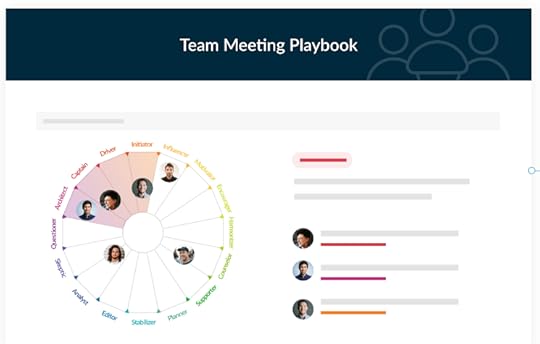
Also, use Crystal for more effective hiring and interviewing and to help your clients if you are a coach.
Crystal is also valuable for marketing departments creating customer personas for specific targeting to fuel their marketing with personality-based insights.
Crystal features:
Personality-based AI predictions and insightsPersonality-driven Chrome extensionHiring and coaching insightsCustomer personasPlaybook creation
Pricing:
Crystal allows you to sign up for free but pricing is not available until you contact them.
Check out Crystal to learn more.
How to Choose the Best Social CRM: The Selection Process
It can be daunting to figure out which social CRM is best for your business. As a first step, we recommend you whittle down your choices by asking yourself the following questions:
Do you want an all-in-one CRM? (If you want to eventually grow into an adopting an all-in-one CRM solution for your business, this may be the best option)If yes, do you want the social integrations to be built-in, or are you OK with using third-party apps? If you want built-in, go with Hubspot, Salesforce or Zoho. If you are OK with using third-party apps, Keap is one to try.Do you also want social media management features? Go with Hubspot, Salesforce, or Zoho.If you don’t want an all-in-one CRM, do you need sales pipeline management?If yes, do you want the social integrations to be built-in, or are you OK with using third-party apps? If you want built-in, go with Nimble. If you are OK with using third-party apps, Pipedrive is a great option.If you don’t want an all-in-one CRM and prefer just social features… Do you want the social integrations to be built-in, or are you OK with using third-party apps? If you want built-in, go with Agorapulse, Nimble, Sprout Social, eClincher or Crystal (Crystal works primarily with LinkedIn).Do you want social media management features? Go with Agorapulse, Sprout Social, or eClincher.
Here’s the comparison chart again to help you evaluate your answers and review pricing for each solution:

After you select a few social CRMs based on the answers to your questions, check pricing and then take a few for a test drive. That’s the best way to evaluate the best social CRM tools. You may also find that even though you don’t want an all-in-one CRM, it may be the most cost-effective. Weigh cost vs benefit and test drive as many as you can.
Here are links to the tools again:
Agorapulse Hubspot Pipedrive Keap Nimble Sprout Social Zoho Social Salesforce eClincher Crystal
When you test drive each social CRM, take note of the following as you evaluate:
Cost vs. potential return on investmentAlignment with your business goalsEase of useAbility to scale (if this aligns with your goals)Integration with your current profiles and accountsOrganisation potential and efficiency
A social CRM will level up your marketing and help you capture the conversations and engagement that is happening outside of your brand. Whichever solution you choose, expect to increase your reach and conversions as you better understand the people you serve. Happy choosing!
The post The Best Social CRMs [10 Apps Compared] appeared first on Venture Harbour.
The Best Sales Enablement Tools Compared [20+ Apps]
There are countless ways to build and grow a thriving business. Some startups offer services, while others ship products. For every company that aims at enterprise clients, there are dozens more that concentrate on consumers.
But when you filter out the noise, you soon see a universal trend. Behind every success story is a great sales effort.
Most founders and managers recognise this fundamental truth, but sales isn’t an easy nut to crack. Cultivating leads, engaging with potential clients, and closing deals takes a considerable amount of time and effort.
For this reason, most successful startups use dedicated tools in order to create a highly efficient sales workflow.
The results are remarkable. Over 75% of companies using sales enablement tools see increased sales over a 12-month period. Almost 40% of these businesses report 25% growth or better.
To help you follow suit, we have tried and tested the best sales enablement tools currently available. Keep reading to see a breakdown of our top picks, along with some key advice on choosing the right tool for your needs.
What Is a Sales Enablement Tool, Exactly?
The main purpose of any sales enablement tool is to improve your sales workflow. It’s a broad definition that can include everything from customer relationship management to chatbots and training platforms.
Some of the most common features in sales enablement software include:
Sales content managementTraining and support for repsGamification / motivationConversation analysisDocument sharingProcess buildersAutomationEmail tracking
Many apps in this category are aimed at businesses that have a team of reps or multiple teams, with pricing to match.
Solutions that cater for smaller outfits tend to focus on automating time-consuming tasks, such as sourcing contact information for prospects and sending out contracts.
Best Sales Enablement Tools to Empower Your Sales Team
There are literally thousands of sales enablement tools available today, covering every possible use-case and budget.
To help narrow down the search, we hunted down the best apps for startups and entrepreneurs. Here’s our top ten:
Reply – Best sales enablement tool for startups and entrepreneurs Process Street – Best for workflow management PandaDoc – Best for sending professional proposals and contracts Yesware – Best for email tracking Membrain – Best for B2B sales management LevelEleven – Best for boosting sales performance Seismic – Best for large startups Whatfix – Best for painless onboarding Highspot — Best for sales content management Chorus — Best for sales intelligence
(Note: Unless specified, all prices reflect annual billing)
#1 Reply
Best sales enablement tool for startups and entrepreneurs
Before you can even think about making calls and closing sales, you need to identify some prospects. At Venture Harbour, we like using Reply to speed up the process.
While this sales enablement tool can handle workflows and outreach, the best feature is undoubtedly email search.
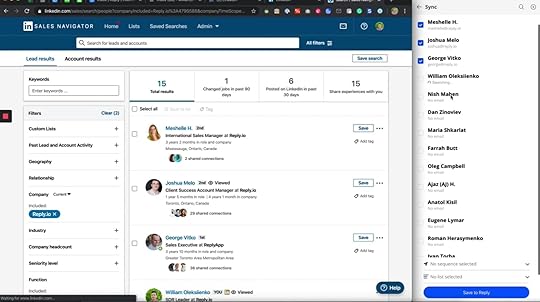
Install the browser extension, and you can quickly scoop up potential clients on LinkedIn. Reply then hunts down their contact details and adds them to your pipeline.
Once you have captured your prospects, you can create an outreach sequence inside Reply. You can make it a manual process involving calls and emails, or automate the entire thing.
If you choose the former option, Reply generates a task list based on your outreach schedule. You are then able to call people right inside the app. With one click, you can open the built-in dialler and view relevant contact information.
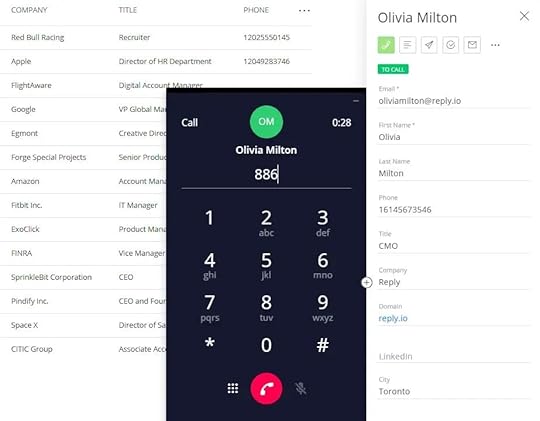
For companies that prefer an automated approach, Reply has a range of useful tools for honing your process. As you compose emails, the app analyses your prose and provides suggestions.
After you hit send, the platform tracks a range of metrics, which you can view in a clean stats dashboard.
Overall, it’s an impressive suite.
Key features:
Unlimited email searches via LinkedInCreate workflows and schedules for outreach campaignsBuilt-in dialler for calling contacts inside the appAutomatically builds checklistsPowerful stats to help you analyse performance
Pricing: You can try Reply free for 14 days, and then choose between Individual and Business plans:
Individual – $55/user/month to contact 1,000 prospects, with unlimited follow-ups and A/B copy testing$70/user/month to contact 3,000 prospects$90/user/month for unlimited prospects and follow-upsBusiness – unlimited emails, with a discounted per-user price as you scale:$70/user/month for up to three users$60/user/month for five users$50/user/month for ten users
Check out Reply to learn more.
#2 Process Street
Best for workflow management
To hit your sales targets every month, you need to have a consistent workflow. This means following up with leads, sending out welcome packs to new clients, and scheduling meetings. Process Street is our favourite tool for keeping track of such tasks.
We would describe this app as deceptively powerful. Through a simple interface, you can create template checklists with drag-and-drop controls and assign them to colleagues. [image error]
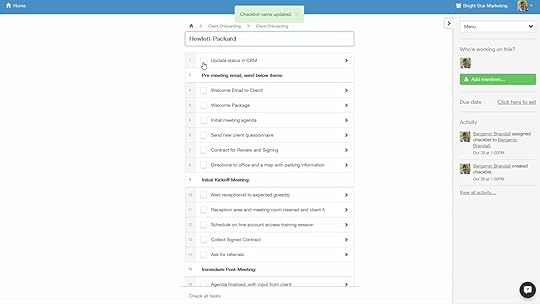
Every time a task is marked as complete, the progress bar for that project fills a little more on your dashboard. You can also choose to receive task-by-task notifications.
But Process Street has much more to offer. Conditional logic allows you to create dynamic checklists that adapt to different projects, and you can build forms for direct data entry.
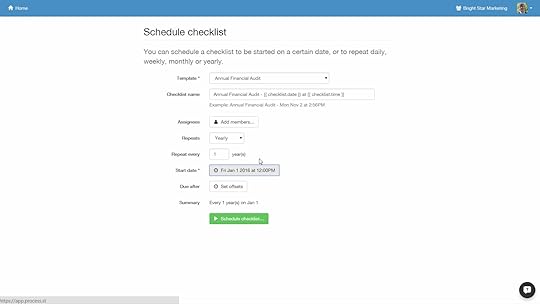
If you prefer, you can pull in content from other apps. Process Street has deep integration with Zapier, which connects to over 1,000 third-party platforms. This means you can easily sync your checklists with your CRM, and automate sending emails for given tasks.
Add an approval system and support for rich media, and you have a tool that can handle almost any sales workflow.
Key features:
Build checklist templates with conditional logicCollaborate with colleagues and track progressForm builder for data inputAutomation via Zapier integrationAssignment and approval system for managers
Pricing: Process Street is free to try for 14 days. There are two regular paid plans:
Basic – $12.50/user/month for unlimited checklists, plus reportingStandard – $25/user/month for dynamic due dates, conditional logic, permissions, and approvals
Check out Process Street to learn more.
#3 PandaDoc
Best for sending professional proposals and contracts
Sending out proposals and contracts takes time, but these documents need to make a good impression. If you’re looking for a shortcut that doesn’t compromise on quality, we highly recommend PandaDoc.
Used by the likes of Drift and Hilton, this app focuses entirely on the admin side of sales. Rather than spending hours every week in Word, you can use PandaDoc to create and send out professionally-designed documents in minutes.
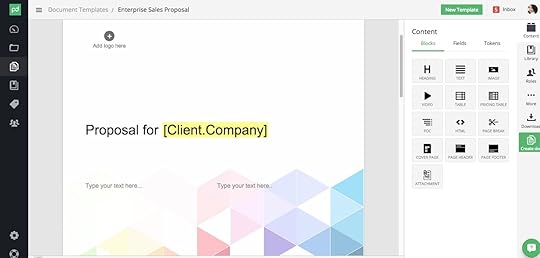
The standout feature here is a library of over 450 templates, covering most industries. Along with proposals and contracts, the selection includes quotes, invoices, and forms. The designs are aesthetically appealing, with crisp modern fonts, high-quality images, and sophisticated colours.
Once you have found a template that suits your needs and branding, you can make some adjustments.
PandaDoc has a drag-and-drop editor, which allows you to add pricing tables, order forms, e-signature boxes, and other important details. The same controls are available for any existing documents that you upload to your account.
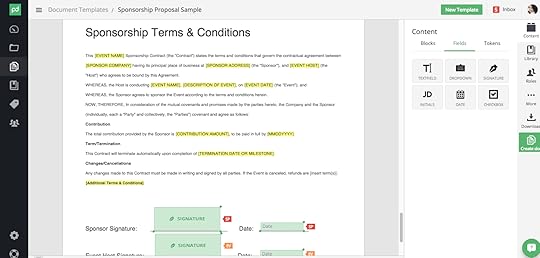
After sending your document, you can keep track of views and interactions with PandaDoc’s document analytics. But this sales enablement tool doesn’t try to be an all-in-one solution.
Instead, PandaDoc integrates with other popular apps. This means you can easily pull data from HubSpot, Salesforce, Zendesk, Zoho, and Pipedrive. It also works with many payment processors, communication platforms, and cloud backup apps.
Key features:
Create and send polished documents in minutesLibrary of 450+ professionally-designed templatesHandle proposals, quotes, contracts, invoices, and moreEasy-to-use editing toolsIntegrates with popular CRMs and many other apps
Pricing: You can use PandaDoc free to upload documents and collect e-signatures and payments. After that, you can choose between:
Essentials – $19/user/month for templates, editing, and document analyticsPremium – $49/user/month for CRM integrations, custom branding, approval workflows, and more
Check out PandaDoc to learn more.
#4 Yesware
Best for email tracking
For any sales team, there is a fine balance between necessary persistence and alienating potential clients. For making informed decisions, Yesware can be a great help.
Designed to work with Gmail and Outlook365, this sales enablement app tracks when your emails are opened, when links are clicked, and when attachments are opened. This data is particularly useful during the outreach stage of sales. It also comes into play as you move through the onboarding process; being able to see when a potential client has seen your message is a valuable insight.
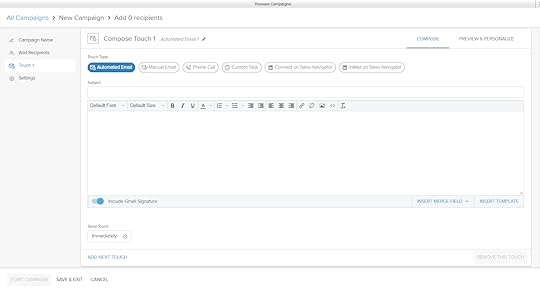
Yesware offers a Chrome browser extension, which gives you access to most of the main features within your inbox. A small icon shows the status of each sent message, much like the ticks you get in Messenger and WhatsApp.
When you open a thread, you can view more details in a pop-up sidebar. Yesware syncs with Salesforce, so you can see all your CRM data for each contact.
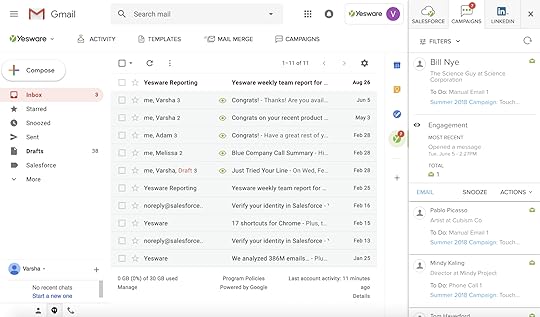
For the full range of stats, you can visit the Yesware web app. Here you have the opportunity to create email templates, which are made available via the compose window in your email app.
For advanced outreach, you can use Yesware to build personalised campaigns for groups of contacts and run A/B testing to find your best copy.
Key features:
Works with Gmail and Outlook (O365)Tracks email opens, links, and attachmentsCreate email templatesRun campaigns and A/B testingIntegrates with Salesforce to sync contacts
Pricing: Yesware offers a 14-day free trial. After that, there are three paid plans:
Pro – $12/user/month for tracking, templates, scheduling, dynamic meeting invitesPremium – $25/user/month for campaigns, template sharing, permissionsEnterprise – $55/user/month for Salesforce, CRM, and calendar syncing
Check out Yesware to learn more.
#5 Membrain
Best for B2B sales management
While individual tools can make life easier, you still need a home for your sales efforts. Membrain is a sales CRM that a lot of people seem to like, including us.
Aimed primarily at the B2B market, this platform was specifically designed for sales teams that have to handle complex deals. Rather than simply offering basic task lists, the app actively guides your staff through the entire process.

Membrain has its own CRM database which can store contacts and retrieve additional information such as email and website addresses. Custom fields allow you to add extra data, and you can see all your pipelines in a single view.
To help turn prospects into contracts, Membrain allows managers to codify the entire sales process. You can include a variety of steps and milestones, along with shared language and those all-important KPIs.

The platform then takes the role of a coach, channelling your staff down the path of least resistance. If they deviate too far from the script, the app displays helpful insights and points out areas for improvement. To speed things up, Membrain has an integrated inbox.
You can see the results through detailed reports, available to view on desktop and mobile devices.
Key features:
Codify your sales process with milestones and KPIsGuide staff with visual insightsBuilt-in CRM with automatic data enrichmentIn-depth reporting featuresIntegrated inbox with scheduling and shared templates
Pricing: Available on request; full accounts are priced at €89/user/month after an initial fee.
Check out Membrain to learn more.
#6 LevelEleven
Best for boosting sales performance
While data and process are important, business is ultimately about people. LevelEleven is a tool that helps you motivate and coach your reps, with the aim of boosting sales.
This platform is designed to work alongside Salesforce, as a kind of performance-enhancing plugin. The app focuses on the psychological side of sales, combining two powerful forces: competition and support.
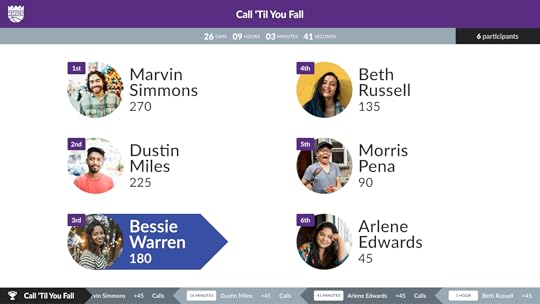
LevelEleven has a polished gamification system, where reps earn virtual points and climb the leaderboard as they make sales. The platform produces live TV broadcasts to enhance the fun, and managers can add prizes to enhance the healthy competition.
While the high flyers jostle for top spot, LevelEleven helps you support the reps who aren’t doing so well.
Managers can see a breakdown of stats for each individual, meaning they can provide targeted assistance. You can also set up automated coaching workflows, and see what behaviours are driving sales.
To help you gauge the results of such interventions, LevelEleven has Performance Scorecards.
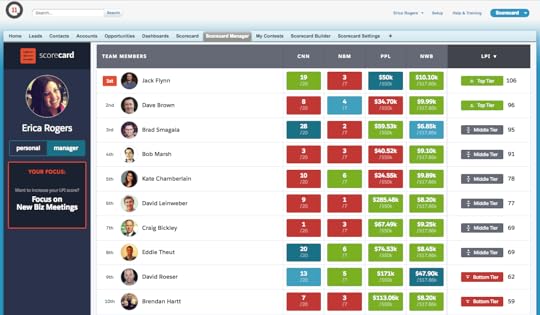
Rather than bombarding you with meaningless figures, the platform uses simple icons to show whether you are on track, ahead of pace, or falling behind on each metric.
Likewise, Executive Scorecards provide an overview of Salesforce and LevelEleven.
Key features:
Designed to work with SalesforceGamification system to motivate staffDetailed analytics for every sales repCoaching system that promotes targeted assistanceTracks progress towards goals through scorecards
Pricing: Available on request after a free demo.
Check out LevelEleven to learn more.
#7 Seismic
Best for large startups
Many companies experience growing pains. For sales teams, this often equates to a breakdown in effectiveness. Seismic can stop this happening.
Used by the likes of IMB and Allianz, this powerful sales enablement platform lets you handle admin, training, content, and other resources in one single workflow. In addition, your sales team can use Seismic to stay perfectly in sync with the marketing department.
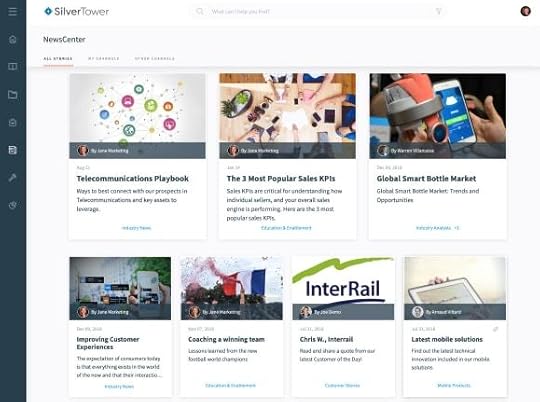
One example of this link is the content delivery feature. While a rep is working on making a sale, Seismic delivers relevant content in real time.
This means your reps have instant access to stats and facts that could secure a contract. To provide this service, the platform uses data from your CRM and marketing database.
Away from the front line, you can use Seismic to set up a training centre for your reps. Along with a searchable library for in-house guides, the platform uses the same content delivery engine to help staff keep up with the latest industry news.
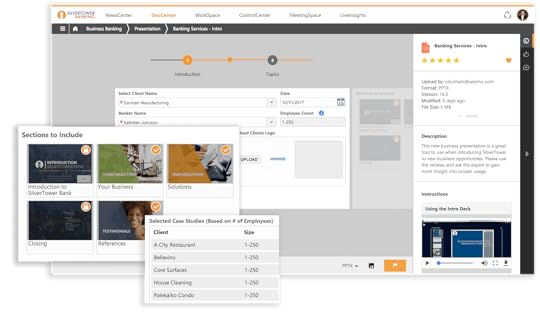
To keep things organised, you can set up separate sales teams on Seismic with custom permissions. This ensures that each member of staff will only see content that is relevant to them. At the same time, individuals have the option to personalise their feeds.
Seismic also offers detailed stats and strong collaboration tools.
Key features:
Smart content delivery to assist sales repsLive training centre with personalised contentCreate sales teams with full access controlSync your sales and marketing effortsIn-depth sales enablement stats
Pricing: Available on request only.
Check out Seismic to learn more.
#8 Whatfix
Best for painless onboarding
Whenever you bring new people into your sales workforce, it can take a while before you see a return on investment. To make onboarding less painful, we recommend Whatfix.
You know when you open a new app and you get a tour of the interface? This platform lets you create your own version, complete with steps that are relevant to your business. It works with Salesforce, Oracle CRM, Office 365, G-Suite, and many other platforms via a browser extension.
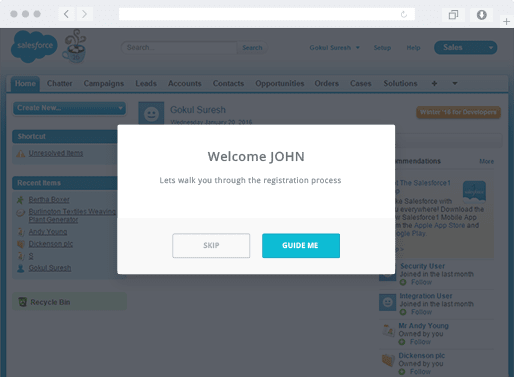
Building your guide is easy. Whatfix recognises every part of your chosen software, meaning you can point out even obscure features. Each new user gets a personalised welcome message, and you can integrate content such as video tutorials.
The training doesn’t stop there — you can set up continuous learning that triggers when your staff reach a certain level of software experience. Similarly, when your chosen app adds new features, you can push out an updated guide.
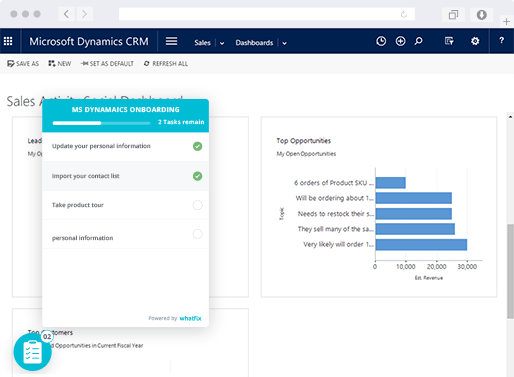
Along with innovative training, Whatfix can host a traditional support library. Smart search allows your staff to find answers quickly, and you can upload walkthroughs to illustrate any point.
Key features:
Create interactive onboarding guidesPersonalised training for new usersContinuous learning system that tracks experienceSupport library system with smart searchWorks with Salesforce, Oracle CRM, Office 365, G-Suite, and more
Pricing: By quote only; a free trial is available.
Check out Whatfix to learn more.
#9 Highspot
Best for sales content management
Sales reps waste hours every week looking for relevant information. Highspot acts as both an intuitive library for useful content, and a helpful librarian who makes suggestions.
Rather than navigating different folders and apps, reps can just search with Highspot. To help users drill down even further, the platform offers powerful filtering options, much like an e-commerce store.

When your staff are actually selling, Highspot delivers content on a plate.
The platform analyses the current client and conversation, and suggests content that has previously been used successfully in similar situations. These links appear in a sidebar alongside contact information, each with a rating for sales potential.
Along with sales content, Highspot can host all your training materials. A drag-and-drop page builder allows you to design custom support pages, complete with video tutorials. In addition, staff can upload their own content for feedback.
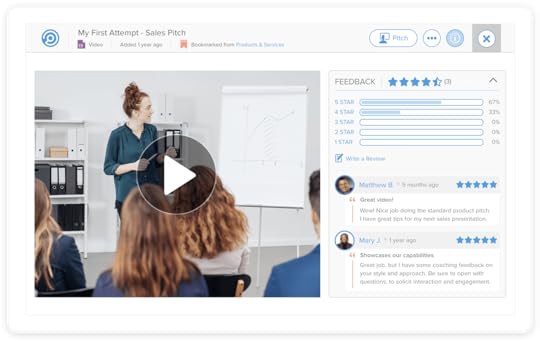
Highspot integrates with over 70 apps, including Salesforce, Outreach, and LinkedIn. This means your staff can access content without leaving their standard workflow.
The platform also offers impressive analytics, and you can hook up various marketing tools for a seamless pipeline.
Key features:
Content library with powerful searchAdvanced filters to narrow resultsPage builder for training and onboarding sitesPowerful analyticsIntegrates with 70 apps incl. Salesforce
Pricing: On request, demo available.
Check out Highspot to learn more.
#10 Chorus
Best for sales intelligence
Before you can sell to someone, you need to understand them. Chorus uses artificial intelligence to give your reps a head start.
Billed as a “conversation intelligence” platform, Chorus works a bit like a personal assistant.
Rather than writing down copious notes during a sales call, your reps just press record. The app then analyses the conversation in great detail to provide a complete transcript and telling insights.

For any call, Chorus can tell you the length of the longest monologue, how many filler words were used per minute, and what next steps were discussed. If a rep mentions following up, the platform automatically creates a reminder, complete with key information from the call.
You can view any previous sales call and use the commenting system to communicate with your team. This is really useful when preparing for future calls and providing feedback.
Chorus also lets you create a library of past calls for virtual shadowing, and you can build specific coaching programmes for each team.
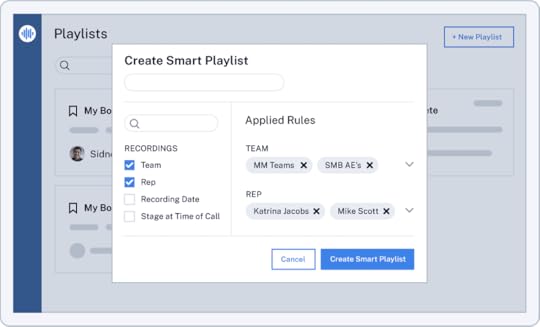
Once again, AI delivers relevant content to each user. Thanks to built-in analytics, you can see the positive impact of your efforts.
Key features:
Call recording and automatic transcriptionActionable insights from every callLibrary of past calls for prep and trainingFull training suite with team-specific programmes
Pricing: Available on request; demo available.
Check out Chorus to learn more.
#11 Showpad
Best for linking sales and marketing
By syncing with both your CRM and your CMS, Showpad is designed to keep your marketing and sales departments as one smooth operation.
On the sales enablement side, this platform assists reps by delivering relevant content and actionable buyer insights. You can also set up coaching, and track your progress; independent research has shown that Showpad inspires a 10% lift in sales productivity.
Key features:
Syphons relevant content from marketing to salesActionable insights for sales repsCoaching platform featuring resources libraryWorks with CRMs and CMSes
Pricing: On request, with four packages to choose from; demo available.
Check out Showpad to learn more.
#12 SalesLoft
Best for optimising communication
Well suited to larger sales teams, SalesLoft guides reps through every step of the sales process.
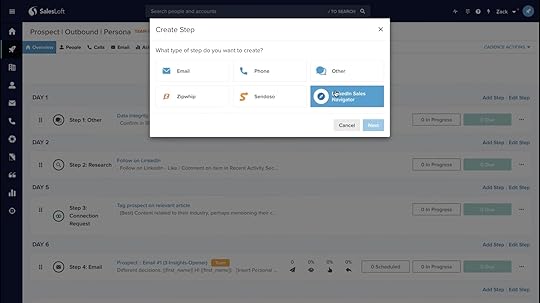
In particular, this sales enablement tool helps to optimise your communication with leads. This includes real-time engagement notifications, and personalised sales processes for every account.
Key features:
Process builder with personalisation for each accountConversation analysis of recorded callsSnippets and templates for consistent messagingSyncs with your CRM and communication apps
Pricing: On request, demo available.
Check out SalesLoft to learn more.
#13 Cirrus Insight
Best for syncing email with Salesforce
Designed to be used inside Gmail or Outlook, this email plugin helps you track when your messages and attachments are opened. It syncs seamlessly with Salesforce, and you can even set up automations based on recipient clicks.
On higher tiers, you can also set up Salesforce-synced drip campaigns and update attachments after you hit send.
Key features:
Works inside Gmail or OutlookSyncs with Salesforce, incl. contacts, calendar events, appsPowerful email and attachment trackingDrip campaigns and online scheduling options
Pricing: After a 14-day free trial, you can choose between Gmail and Outlook for the following plans:
Starter – $27/user/month for email and attachment tracking, meeting scheduling, full Salesforce integrationCloser – $45/user/month for online calendar, permissions, activity trackingRainmaker – $75/user/month for document updates after sending, customised drip campaigns, and analytics
Pricing for the Enterprise package, offering single sign-on and customised training, is available on request.
Check out Cirrus Insight to learn more.
#14 Ambition
Best for motivating remote teams
Much like LevelEleven, Ambition aims to motivate your sales teams using a combination of coaching and gamification.

The app lets you create training programs and schedule 1-to-1 sessions through a social media-style interface. You can also set up long-term contests, complete with live leaderboards, while the analytics dash provides insights in a very accessible format.
Key features:
Intuitive tools for training and 1-to-1 coachingGamification system that supports long-term contestsAnalytics dashboard with user-friendly graphicsSyncs with most CRMs incl. Salesforce
Pricing: Pricing on request, with five tiers available. Plans start from around $570 per month based on 30 seats.
Check out Ambition to learn more.
#15 Unboxed Advisor
Best for in-person sales
While many sales enablement tools focus on remote outreach, Unboxed Advisor helps your sales reps to engage with customers on the spot.
Designed for mobile devices, this app breaks down the sales process into easy steps. By asking questions and selecting suitable options on screen, reps can quickly find the best package for each customer. The app delivers important details in a polished interface, so the customer can be truly involved in the process.
Key features:
Designed for mobile devicesAssists reps during in-person salesQuick surveys help reps to identify the perfect packageEmbed videos and interactive sales content
Pricing: On request; demo available.
Check out Unboxed Advisor to learn more.
#16 Brainshark
Best for data-driven sales training
If you want to give your sales reps the best possible chance to succeed, we would recommend using Brainshark. This app makes it easy to create training and coaching programs for your staff, and you can capture shining examples to encourage peer learning.
Brainshark also measures the progress of each employee and presents the data in colour-coded “Readiness Scorecards”.
Key features:
Intuitive tools for creating training contentProgress tracking for individual usersScorecards show the preparedness of your whole teamIntegrates with Salesforce, Outlook, HubSpot, and more
Pricing: On request, demo available.
Check out Brainshark to learn more.
#17 Outreach
Best for improving engagement
Every feature of Outreach is aimed at making your sales sequence more engaging. The app uses AI to gather useful information on customers and analyse interactions.
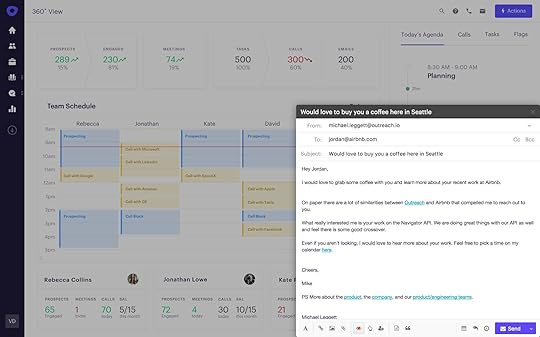
Reps can handle email, calls, messages, and more through the platform. Outreach guides them through every step, telling them when to reach out and what to say.
Key features:
Always-on assistant gathers important client informationAI technology to analyse interactionsSales sequences to guide repsIntegrates with multiple CRMs and email apps
Pricing: On request; demo available.
Check out Outreach to learn more.
#18 Guru
Best for knowledge bases
If you want to create an internal knowledge base for your sales department, Guru is worth your attention.

Used by the likes of Spotify and Slack, this software sources experts in your company to verify new entries. It also has a smart AI recommendation system.
Key features:
Capture useful information from dozens of appsSuggests expert in your company to verify informationEasy access to answers via browser extension or SlackAI recommendations
Pricing: Guru is free for up to 10 users. There are two standard paid plans:
Starter – $14/user/month for knowledge triggers, analytics, duplicate detectionExpert – $24/user/month for test suggestions, content tracking
Enterprise packages are also available on request.
#19 DocSend
Best for page-by-page deck analytics
When you send a sales deck to a prospect, wouldn’t you like to know what they are looking at? With DocSend, this information is at your fingertips.
This platform offers secure document sharing with full access control and page-by-page analytics. In addition, you can update shared documents at any time.
Key features:
Upload and share documents via your favourite appsLink analytics incl. viewing time for each pageLive updates and one-click NDAs
Pricing: After a free trial, you can choose from the following plans:
Individual – $10/user/month for basic document tracking up to 300 views per month and some integrationsStandard – $45/user/month for document bundles, tiered access controlAdvanced – $150/month (incl. three users) for document folders, one-click NDA
On the latter two plans, you can add Salesforce integration for an extra $20/user/month.
Check out DocSend to learn more.
#20 Intercom Business Messenger
Best for enhancing sales with live chat
While email is still important, live chat is quickly becoming the go-to channel for sales communication. Intercom enhances the sales experience with automated chatbots that drive better engagement with prospects.

What is even more impressive is that this platform integrates with over 250 apps, so everything is synced.
Key features:
Automated chatbots to engage with prospectsCollect information upfront and set customer expectationsWorks with over 250 apps incl. custom builds
Pricing: Intercom has four base plans, ranging from $39/month for one seat to $999/month for 10 seats with full features.
You can pay an extra $199/month to add product tours, $249/month for advanced support, and $499/month for advanced lead generation or smart custom engagement tools.
Check out Intercom Business Messenger to learn more.
#21 Hoopla
Best for running contests
Another platform focused on motivation is Hoopla. Along with the usual sales leaderboard, this platform offers a range of different contests to spark friendly rivalries.
Depending on what you want to achieve, you can create battles between teams, single-player tournaments, and face-offs that compare two reps on a single metric.
Key features:
Range of contests for sales staffDeal alerts and milestones to highlight successLive sales leaderboard
Pricing: Custom pricing, available on request.
Check out Hoopla to learn more.
#22 VoiceSage Interactive SMS
Best for mobile engagement
Although online channels are more fashionable, SMS offers 98% open rates. With VoiceSage, you can use this stat to your advantage.
The platform offers chatbots for automated engagement, while two-way SMS allows sales agents to reach prospects. Thanks to an open API, you can easily create your own automations, too.
Key features:
SMS campaign builderChatbots for automated interactionOpen API offers more automation options
Pricing: On request, demo available.
Check out VoiceSage Interactive SMS to learn more.
Choosing Sales Enablement Tools: Which Is Right for You?
Whereas you might only want one CRM and one accounting system, many businesses use multiple sales enablement tools. For instance, you might want to motivate your reps with gamification and help them access relevant content more easily.
When it comes to choosing the right options for your business, there are four key points you need to consider:
PriceFeaturesIntegrationsComplexity
The trade-off between price and complexity is particularly important. While large businesses might want one system to handle everything, such platforms can be overwhelming for smaller outfits.
To help you find the right solution for your business, here’s a visual comparison:
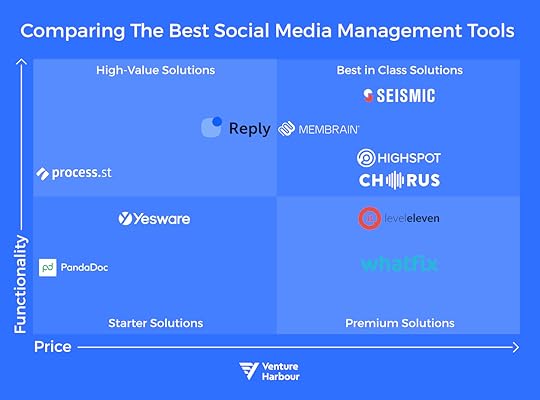
If you choose to adopt a new tool, give it time. Your staff might take a while to learn the system — but once they are up and running, you should see a return on investment.
We look forward to reading about your rocketing sales in the news!
The post The Best Sales Enablement Tools Compared [20+ Apps] appeared first on Venture Harbour.
August 18, 2020
The Best Social Media Management Tools [16 Apps Compared]
Maintaining a social media presence is essential for any business today. Platforms such as Twitter, Facebook, YouTube, TikTok, and Instagram give you the opportunity to build a relationship with existing customers and connect with new ones.
In fact, social media is the single biggest source of inspiration for purchasers, and 71% of consumers say they would recommend a brand based on positive social media interactions.
In other words, social media is anything but a waste of time.
That said, taking care of multiple social media profiles can be a time-consuming task. It’s easy to spend hours searching for content to post and replying to comments. Most smaller teams simply don’t have that kind of time for tweeting.
One way to make the process more efficient is by using specialist social media management tools.
There are literally hundreds of these apps to choose from, all offering something different. Some allow you to schedule posts in advance. Others respond to messages automatically and track important stats.
The trick is finding the option that best suits your needs and your budget.
At Venture Harbour, we don’t like to leave you hanging. To help you start reaping the rewards of social media marketing, we have put together a comprehensive guide to the best tools for every use-case and budget.
What Makes a Great Social Media Management Tool?
The main purpose of any social media management tool is to supplement the features of each network to save time or improve engagement.
In simple terms: these apps help you work smarter, not harder.
Social networks are diverse, and there are many ways for companies to utilise them for marketing. As a consequence, social media tools are equally diverse in terms of functionality.
Common tasks that these tools can assist with include:
Creating contentPublishing and scheduling postsPlanning content strategyMonitoring replies and commentsTracking live trendsMeasuring engagementManaging multiple profiles
Some tools are generalists, while others focus on specific tasks or networks. In both categories, the shining examples can help you build an audience, increase engagement, connect with potential customers, and drive traffic to your website.
The Best Social Media Management Tools
For every social media management tool available today, there are five more capable apps that can fill the same role.
To help you find the best option for your business, we have put together a list of our favourites:
Crowdfire – Best social media management tool for startups and entrepreneursIconosquare – Best for Instagram marketingBuffer – Best for easy post schedulingPost Planner – Best for curating engaging contentEdgar – Best for automationTailwind – Best for visual sharing Hootsuite – Best for keeping track of multiple networksRevive Old Posts – Best for posting blog contentCoSchedule — Best for building a content calendar Sked Social — Best for creating eye-catching posts
(Note: Unless specified, all prices reflect annual billing)
#1 Crowdfire
Best social media management tool for startups and entrepreneurs
In an ideal world, you don’t want to be hopping between different tools to manage different networks. That’s why we like Crowdfire.
Billed as “the only social media manager you’ll ever need,” this platform lets you handle Twitter, Facebook pages, LinkedIn, Instagram, and Pinterest in one workflow.

The main purpose of this tool is posting and scheduling. Crowdfire helps you find relevant content from around the web, with a curation feature that can filter content by topic.
Alternatively, you can convert existing content on your website into shareable posts. This is really useful for promoting blogs and new products.
The platform has a pop-up calendar to help you schedule posts in advance, or you can allow Crowdfire to suggest the best time to share. Before you publish, tailored previews provide a sneak peek of how your post will look on each platform.
To help you figure out your return on investment, Crowdfire offers detailed analytics reports. Along with views, likes, and other standard metrics, the app helps you track your competitors.
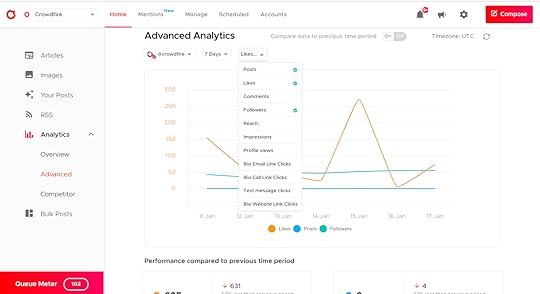
Crowdfire also allows you to manage incoming replies, comments, and messages. Through one inbox, you can reply to people on all your networks.
For startups and small businesses looking for a complete solution, Crowdfire is probably the best option around right now.
Key features:
Manage Twitter, Facebook, LinkedIn, Instagram, and PinterestPowerful curation and scheduling featuresShare content directly from your website, blog, or online storeDetailed analytics reports incl. competitor analysisHandle comments and messages in one workflow
Pricing: Crowdfire is free for three social accounts and 10 scheduled posts a month. There are three paid-for plans.
Plus – $7.48/month for five accounts and 100 posts per account each monthPremium – $37.48/month for 10 accounts, bulk scheduling, and calendar view VIP – $74.98/month for 25 accounts, 800 posts per account, all features
Check out Crowdfire to learn more.
#2 Iconosquare
Best for Instagram marketing
If your social media marketing efforts focus on visual content, we would recommend Iconosquare.
This premium tool only works with Instagram business accounts and Facebook pages, but it has features you won’t find anywhere else.
In particular, Iconosquare excels at stats. The platform collects an impressive array of metrics, from average engagement to organic reach. Tracking posts and stories, demographic data provides valuable information about your audience.
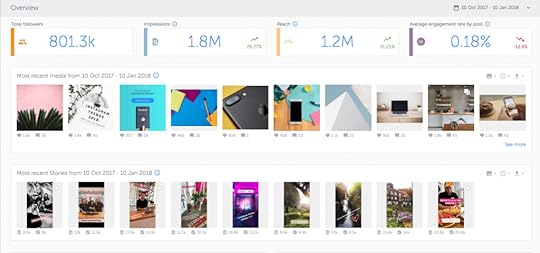
Use promoted posts? You will get a before-and-after comparison. You can even see how your posts are performing against the big names in your niche, with 100 industries to choose from.
Iconosquare has good scheduling options, too. You can upload images in bulk and share posts, Stories, and Facebook updates across multiple accounts.
We particularly like the calendar view. Here you see a preview of the images scheduled for each timeslot, meaning you can plan out your posts visually.

Hashtags play an important role on Instagram, and Iconosquare lets you track them. This makes it easier to run promotions and curate user-generated content. In addition, the platform tracks every mention and every time you are tagged.
Used by brands such as L’Oréal and National Geographic, this platform is the real deal when it comes to Instagram marketing.
Key features:
Works with Instagram and FacebookIn-depth stats incl. promoted postsCompare your performance with leaders in 100 industriesSchedule in bulk for multiple accountsTrack hashtags and mentions
Pricing: After a 14-day free trial, pricing for Iconosquare starts with a Pro account at £29/month (~$38). Teams wishing to collaborate will need the Advanced plan at £59/month (~$77) or a custom Agency plan.
Check out Iconosquare to learn more.
#3 Buffer
Best for easy post scheduling
At Venture Harbour, we like tools that are simple yet effective. Buffer definitely falls into this category.
Whereas many social media platforms ask you to schedule posts individually, Buffer acts like a queue. You simply create a schedule for the week and load your content. The app does the rest, pushing posts out of the door at every designated time slot.
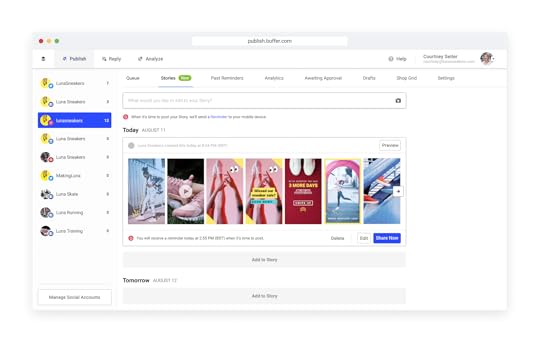
This system works well for solopreneurs and small teams with limited time. Install the Buffer Chrome extension or mobile app, and you can share whatever you are reading with a couple of taps.
It’s a great way to maintain an active social media presence with minimal effort.
With Buffer, you can schedule for Twitter, Facebook, Instagram, Pinterest, and LinkedIn. The interface is clean, and you won’t need to spend hours learning how to use this app.
For businesses that want to spend more time on social media marketing, the Pro and Premium plans unlock some more powerful features.

This list includes visual post planning, user-friendly analytics, custom reports, and collaboration features — all delivered with a sense of style.
We are not alone in our admiration for Buffer; notable companies that use this platform include Spotify and Shopify.
Key features:
Scheduling for Twitter, Facebook, Instagram, Pinterest, and LinkedIn“Set it and forget it” queuing system for contentClean interface and easy to usePowerful analytics for larger businessesCollaboration features for teams
Pricing: Buffer is free for three accounts and 10 scheduled posts a month. There are three premium “Publish” plans.
Pro – $12/month for eight social accounts and 100 postsPremium – $56/month for two users and 2,000 postsBusiness – $85/month for 25 social accounts and six users
To unlock analytics, you will need the Analyze Pro ($35/month) or Premium ($50/month) plan.
Check out Buffer to learn more.
#4 Post Planner
Best for curating engaging content
Most small businesses have to rely on curation to drive social engagement. We think Post Planner is the best tool for this job.
Aimed mainly at startups and freelancers on a tight budget, this platform helps you line up like-worthy posts in three easy steps.
To help you find content that will interest your audience, Post Planner has an intelligent discovery engine. You just type a subject, and the app will offer a selection of links that are drawing clicks online.

The Pinterest-like masonry interface allows you to scan quickly. In addition, Post Planner has a 5-star rating system that predicts the likely impact of posting any given link.
Having collected some content, you can set up a posting schedule. One nice feature is the option to specify what kind of content (article, image, video, etc.) to share in each timeslot.
When it comes to posting, Post Planner optimises content for each network and collects key performance stats. This tool currently works with Facebook groups and pages, and Twitter; others are coming shortly.
For individuals and small businesses, the impact of this app is impressive. A huge study conducted by Buzzsumo and Buffer found that Post Planner delivered 510% better engagement on Facebook pages than its nearest competitor.
Key features:
Works with Facebook groups and pages, and TwitterPowerful discovery engine for finding content to post5-star rating system predicts popularitySimple scheduling with option to sort by content typeVery affordable
Pricing: Post Planner is one of the most affordable tools on this list, with three standard plans on offer.
Starter – $3/month for three social accounts and 30 posts per dayLove – $9/month for 10 accounts and 100 posts per dayGuru – $19/month gives you 25 accounts, 500 posts, and five users
For larger businesses, there are Enterprise plans ranging from $49 to $199 per month.
Check out Post Planner to learn more.
#5 Edgar
Best for automation
As the owner of a small business, you probably won’t have the budget to hire a full-time social media manager. Instead, you might want to try Edgar.
Instead of merely publishing your tweets, Edgar actually helps to write them. The platform utilises machine learning technology to extract key quotes from your existing content, which you can share or schedule with a click. It’s pretty obvious how this will save time.

Edgar can pull wise words from pages, blog posts, and even audio-visual content such as podcasts and YouTube videos. Your library can save anything you don’t use initially for later use.
To maximise the impact of your posts, Edgar runs automatic A/B split testing. For anyone still figuring out social media, this feature is mighty helpful.
Edgar posts to Twitter, Facebook, LinkedIn, and Instagram, and the platform supports a huge range of content sources.

The thing we like most about this platform is that you can set up rules for everything. For instance, you can ask Edgar to recycle content or post only once for a promotion. It’s a tool that maximises your impact and minimises effort.
Just as importantly, the team behind Edgar offers impressive live support.
Key features:
Schedule posts for Twitter, Facebook, Instagram, and LinkedInTurn existing content into shareable updatesContinual posting of new content and recycled updatesAutomated A/B testing Detailed rules for scheduled posting
Pricing: You get 30 days free, and then you can upgrade to one of two tiers.
$19/month for three accounts and 10 scheduled posts per week$49/month for unlimited accounts and posts, plus the full feature list
Edgar doesn’t offer annual discounts, so these prices come without a 12-month commitment.
Check out Edgar to learn more.
#6 Tailwind
Best for visual sharing
Pinterest has a fast-growing community of highly engaged users who are ready to buy. At Venture Harbour, we regard Tailwind as the best tool for sharing content on this visual discovery network.
Designed specifically for managing Pinterest and Instagram accounts, Tailwind lets you schedule pins and posts in bulk. Content is published when your audience is online, and evergreen posts are automatically recycled.
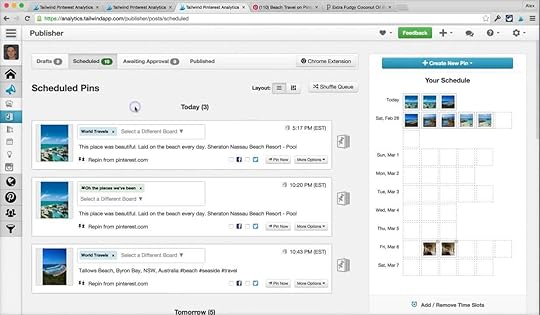
Tailwind also allows you to create groups of Pinterest boards. This means you can share pins on multiple boards with one click.
To boost your Pinterest marketing further, you can join Tailwind Tribes. These are small communities of users who share common interests and work together for their common benefit.
As an official partner of Pinterest, Tailwind provides guidance on best practices. Regular on-screen hints tell you whether you are doing just fine or overstepping the mark.
Tailwind is an official partner of Instagram, too. The platform provides an attractive visual calendar for planning posts in advance, with a layout that mimics the Instagram grid. This means you can preview how your profile will appear before you share.
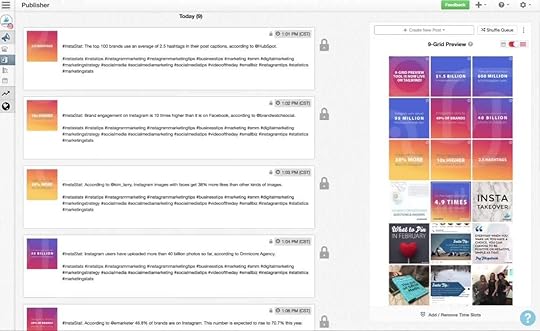
Other useful features include caption templates and formatting tools, relevant hashtag suggestions, and mental cues to get your creative juices flowing.
Key features:
Works with Pinterest and InstagramSmart scheduling for pins and postsShare pins to multiple boards at one timeGet social with 4,000+ niche communitiesVisual planner and caption templates for Instagram
Pricing: You can try Tailwind free for your first 100 pins and 30 Instagram posts. After that, it’s $9.99 per month for each Plus account (Pinterest or Instagram).
Pricing for SmartLoop (content recycling) and Tailwind Tribes starts at $4.99 per month.
Check out Tailwind to learn more.
#7 Hootsuite
Best for keeping track of multiple networks
You can’t really go wrong with Hootsuite. This social media management platform has been around forever, but it’s still a versatile and powerful tool.
Hootsuite was one of the first apps that allowed you to schedule content across multiple accounts. This feature still works well, with support for Facebook, Twitter, LinkedIn, Instagram, YouTube, and more than 30 other social media platforms.

However, the greatest strength of Hootsuite is monitoring. The app allows you to create feeds from all your social accounts, and view them in a single side-scrolling dashboard. This includes your timeline, mentions and replies, lists, specific topics, and even individual users.
This makes it very easy to see when people are talking about your company, so you can join in the conversation.
Another standout feature of Hootsuite is the way this platform works with other tools.
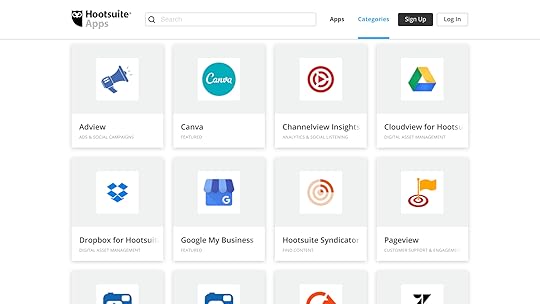
The official app directory includes 250 integrations, from Adobe Stock to Zendesk. This is really useful for automating replies, syncing social interactions with your CRM, and importing content.
To help teams work together, Hootsuite also has some really nice collaboration features. The app offers a range of team management options, such as the ability to assign tasks to colleagues.
It might not be the prettiest app, but Hootsuite is brimming with functionality.
Key features:
Works with Facebook, Twitter, Instagram, YouTube, and many more popular platformsScheduling for multiple accountsGreat layout for monitoring interactions and topicsIntegrates with 250 third-party apps Collaboration features for shared social media management
Pricing: Hootsuite is free for one user, three social profiles, and 30 scheduled messages. You then have two options.
Professional – $29/month for 10 profiles and unlimited schedulingTeam – $129/month for 20 profiles and three users.
For larger companies, the Business plan ($599/month) provides 35 profiles and five or more users.
Check out Hootsuite to learn more.
#8 Revive Old Posts
Best for posting blog content
Perfect for individuals and the smallest startups, Revive Old Posts reduces the amount of time you have to spend on promoting your blog.
This premium WordPress plugin automatically retrieves the featured image and title of existing posts on your website. The plugin shares this content on a rolling basis, according to a schedule you choose.
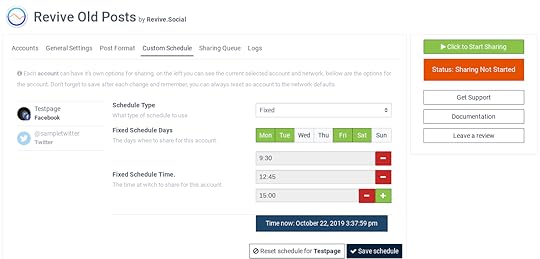
This ensures your social profiles are never quiet for long, even if you are occupied with other things. Just as importantly, people who follow you on social media are less likely to miss your best content.
Revive Old Posts works with Twitter, Facebook, LinkedIn, Instagram, Pinterest, Tumblr, Buffer, and Google My Business. You have complete control over what is shared, and the plugin can grab hashtags from WordPress tags or categories.
Along with blog posts, you can use the plugin to promote media, products, pages, and other content on your website.
Revive Old Posts supports most popular link shorteners, so it’s fairly easy to see what is earning clicks. Based on this data, you can then choose whether to repeat sharing content.
It’s a very useful little tool.
Key features:
Plugin for WordPressConnects with Twitter, Facebook, Instagram, LinkedIn, Pinterest, Tumblr, Buffer, and Google My BusinessAutomatically retrieves and shares content from your siteCustom posting schedule and tagsCompatible with popular link shorteners
Pricing: The plugin is free to install and use. To unlock most of the social integrations, you can pay $75 for a Personal licence.
A Business licence ($149) covers three sites with custom scheduling, while the Marketer licence ($299) supports unlimited sites. All three tiers include one year of support and updates.
Check out Revive Old Posts to learn more.
#9 CoSchedule
Best for building a content calendar
It would be fairer to describe CoSchedule as a full marketing suite rather than just another social media tool.
This platform focuses on planning ahead, with an interface that is dominated by calendar views. In one view, you can see all your content for the month.
As your strategy takes shape, you can schedule content within the app. CoSchedule lets you share to all the big social platforms, and there is a WordPress plugin for publishing blogs.
To speed up the process, you can create reusable schedules known as social templates.
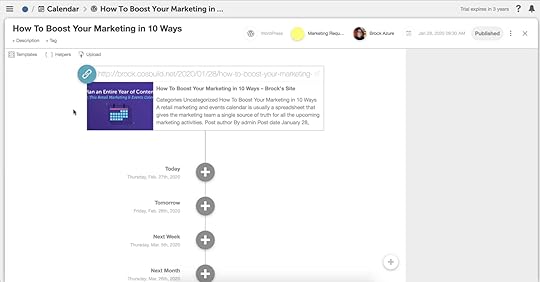
Suppose you want to promote a blog post. You might wish to schedule multiple tweets, pins, and status updates in the days after the post is published.
Rather than doing this manually for every post, you can create a social template and use it over and over again. This is a huge time saver, particularly for startups that produce a lot of content.
Another thing we particularly like about CoSchedule is the intuitive interface. Once you add content to your calendar, you can drag and drop it wherever you please.
Best-time scheduling helps you reach your audience, and CoSchedule offers a range of powerful reporting options to track your performance on each social platform.
Key features:
Works with Facebook pages and groups, Twitter, Instagram, Pinterest, LinkedIn, and TumblrCalendar-based interface for content planningManual and best-time post schedulingOption to create template schedules for social promotionEasy-to-read reports
Pricing: Starting at $14/month for each user, CoSchedule is very affordable for small outfits.
For $29/month, the Marketing Calendar plan adds a social inbox, email marketing, advanced metrics, and other benefits.
Check out CoSchedule to learn more.
#10 Sked Social
Best for creating eye-catching posts
Most Instagram tools focus on hashtags and scheduling. Sked Social has both of these bases covered — but we like this app because it helps you create great content.
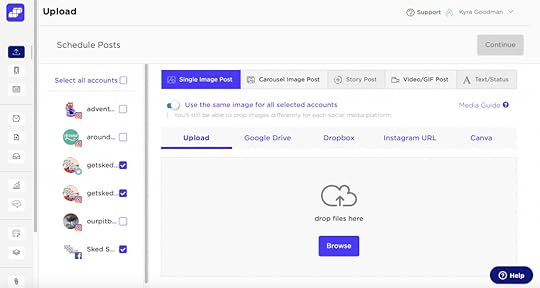
The built-in image editor lets you play with more than 60 filters. You can also crop photos to the perfect size, add text overlays, and slap on some stickers.
If you prefer to use Canva, you can import images and videos directly from your account there.
Once you are satisfied with your work, you can add content to your Sked Social queue. As with other apps, you can set a custom schedule and drag posts into your desired order.

This platform also offers a full calendar planner, with views for months, weeks, and days.
Sked Social helpfully populates the calendar with notable events — #nationaldonutday or #weinerdogweek, for example. This ensures your social profiles are always posting timely content.
To speed up the scheduling process, Sked Social allows you to create post templates. This means you no longer have to tag the same accounts and type out the same hashtags on every post.
For teams, Sked Social also offers some nice collaboration tools. Marketing managers can review posts created by colleagues before they go live, while the in-house commenting system encourages quick revisions.
Key features:
Works with Instagram, Facebook groups and pages, LinkedIn, and TwitterBuilt-in photo editor helps you create eye-catching postsImport directly from CanvaVisual planning calendar with notable eventsReview and comments system for teams
Pricing: There are three pricing tiers that suit small businesses.
Fundamentals – $21/month for one Instagram account and two other profilesEssentials – $63/month for three Instagram accounts and six other accounts, with unlimited users and most featuresProfessional – $113/month for five Instagram accounts and 10 other accounts
For a small fee, you can add extra profiles to each of these accounts. For big brands, Sked Social also offers a $219/month Enterprise tier.
Check out Sked Social to learn more.
#11 SharedCount
Best for tracking your most shared content
This super-simple tool reveals how many times any webpage has been shared and liked on two key platforms: Facebook and Pinterest.
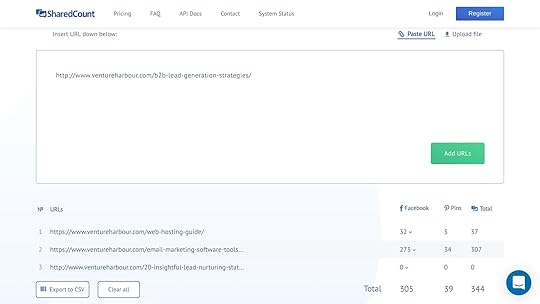
With the web version, you simply paste in URLs; SharedCount also has an API that is used by sites like Moz and SEMrush.
Key features:
Works with Facebook and PinterestFinds the number of shares, likes, comments, and reactions for any URLWeb interface for checking lists of linksAPI for bulk stats
Pricing: The web version is free to use for 500 queries per day. API plans range from $40 to $640 per month, providing huge quotas.
Check out SharedCount to learn more.
#12 Sprout Social
With a dazzling array of features, Sprout Social is probably overkill for small operations. However, this platform helps you manage every part of your social media strategy — from scheduling to monitoring replies. It’s particularly suited to marketing teams who need to collaborate on campaigns, and sales teams who want to connect with clients.
Key features:
Works with Twitter, Facebook, LinkedIn, Pinterest, Instagram, and YouTubeOption to create automations that promote engagementDeep analytics and monitoring tools with granular filteringScheduling and planning options including a visual calendarCollaboration tools for marketing and sales teams
Pricing: As you might expect with this level of functionality, Sprout Social isn’t cheap. After a 30-day free trial, there are three plans:
Standard – $99/user/month for five profilesProfessional – $149/user/month for 10 profiles + custom workflowsAdvanced – $249/user/month for digital asset management, chatbots, and more
There are no annual payment options, so you don’t have to commit.
Check out Sprout Social to learn more.
#13 Sendible
This stylish platform supports every major social network along with Google My Business — useful for enhancing your search visibility. Content suggestions from Google Alerts help you stay relevant, and a built-in editor helps you create content.

The only reason Sendible doesn’t rank higher on this list is that the platform is mostly targeted at agencies and larger companies.
Key features:
Supports Twitter, Facebook, LinkedIn, Instagram, Pinterest, and Google My BusinessCreate and schedule content through a stylish interfaceApproval system and collaborative workflows for teamsManage paid promotions via Google My BusinessExtensive monitoring and analytics tools
Pricing: Sendible offers four plans, although only the first will appeal to small businesses and individuals:
Starter – $24/month for 12 servicesTraction – $84/month for three users and 48 servicesGrowth – $169/month for seven users and 105 servicesLarge – $254/month for 12 users and 192 services
Check out Sendible to learn more.
#14 MavSocial
MavSocial is not unlike Hootsuite, with good scheduling features and a multi-column layout for monitoring. It also offers an array of analytics and support for more than the usual social media suspects.

Where this platform excels, however, is when you need to find some visual content to share. You can search for stock images and attach them to your posts without leaving the app.
Key features:
Works with Twitter, Facebook, Instagram, LinkedIn, YouTube, Google My Business, and moreStraightforward tools for scheduling and re-using contentSingle inbox allows you to reply on multiple platformsMulti-column layout helps you track specific topicsSearch stock images libraries inside the app
Pricing: After a 14-day free trial, there are two plans to choose from with MavSocial.
Advanced – $16/month for 10 profilesPro – $65/month for three users, 30 profiles, 1-on-1 training, sentiment analysis, and more
Check out MavSocial to learn more.
#15 Falcon.io
Although Falcon largely focuses on the fundamentals of social media management, this platform has more to offer.
Along with calendar-based scheduling, a unified social inbox, and a dazzling choice of data, Falcon can handle your social ads. The platform also creates a profile for every single person who interacts with your brand.
Key features:
Works with Facebook, Instagram, Twitter, LinkedIn, and TumblrCampaign planner featuring visual content calendarFull support for Facebook and Instagram adsAutomatically creates profile for every social media contactCollaboration tools for teams and landing page builder
Pricing: Pricing for Falcon suits medium-sized businesses and up, starting from $108/month for five channels.
The full suite is only available on custom packages, so you will need to contact the company for details.
Check out Falcon to learn more.
#16 e-clincher
Everything about e-clincher feels very clean and efficient. This platform is another multi-faceted service, handling all aspects of social media management.
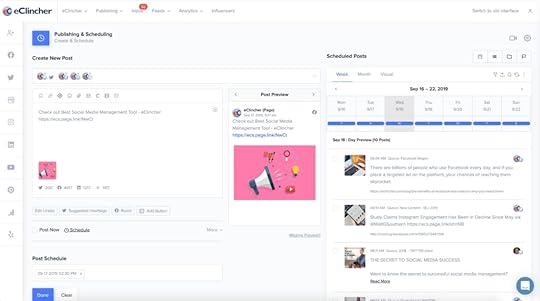
The highlights here are advanced image and video editing, and the option to recycle evergreen content at an appropriate rate. In addition, e-clincher integrates with Google Analytics to provide stats that mean something to your business.
Key features:
Works with Facebook, Twitter, Instagram, LinkedIn, YouTube, Pinterest, and moreCalendar for planning content and advanced scheduling optionsImage and video editors built inReal-time monitoring with unified inboxMeaningful stats via Google Analytics integration
Pricing: After a 14-day free trial, you have three plans to pick from (15% annual discounts are available after you join).
Basic – $59/month for 10 profiles Premier – $119/month for three users and 20 profilesAgency – $219/month for six users and 40 profiles
In addition to these prices, you can pay for the following add-ons
Influencer discovery and engagement – $20/monthFive more profiles – $20/monthExtra user – $20/month
Check out e-clincher to learn more.
Choosing Social Media Management Tools: Which Is Right for You?
As this guide proves, there are now many different social media management tools that can handle any given task.
When you come to choose between them, you will need to consider:
PriceFeaturesSupported networksIntegrationsComplexity
Weighing up all these factors is not necessarily straightforward. To make things a little easier, here is a visual comparison.
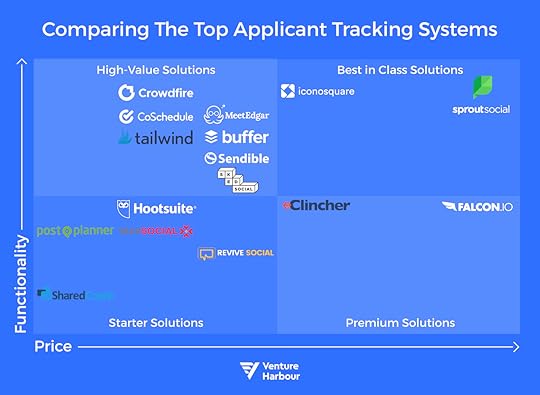
There is a good chance you will be using your chosen app every day. Before committing, we recommend creating a shortlist and then trialling the leading candidates.
Whichever solution you choose, expect to see a notable uptick in traffic and engagement with your brand.
We look forward to reading your tweets!
The post The Best Social Media Management Tools [16 Apps Compared] appeared first on Venture Harbour.
August 12, 2020
15 Best ATS for Startups, SMBs, & Beyond
Ask any startup founder who’s made it to the point of managing a growing team their biggest challenge and you’ll likely hear the same answer—hiring.
Most aren’t using an applicant tracking system, and many are operating without any formalized system for recruitment at all. Seriously; ask ten founders how they hired their most recent team member or where they find the best candidates and you’ll get ten different answers:
“We hired our lead QA engineer off of Toptal and eventually managed to convince her to accept a salary.”
“We found our digital content specialist on Instagram and literally offered him the job via DM.”
“We were at a happy hour at a bar when we met our COO. We talked more about beer and football that night, but that hiring was one of the best (and luckiest) things to happen at our company!”
Sound familiar?
Hiring is great when it works out, awful when it doesn’t, and if we’re being candid here, it’s not exactly the most popular activity among founders—hiring can be a pain in the ass.
An applicant tracking system (ATS) that’s perfectly moulded to your organisation’s processes, needs, and culture can be an absolute game-changer for a startup. The proper tool can add structure to a haphazard process, streamline HR workflows, and help you spend less time adding better-fit team members to your growing company.
At Venture Harbour, we’ve spent a good deal of time creating our recruitment process, including building out a lot of automation via our applicant tracking system, Breezy.
(We’ll dive into our specific workflows with Breezy at the end of this post.)
Now, however, we’re going to dive into the best applicant tracking systems that we’ve come across. Of course, any tool is only as effective as the plan you use to operate it and to that end, we think you’ll find it useful to read a quick bit of context around the purpose and definition of an applicant tracking system.
Let’s dive in!
What Is an Applicant Tracking System (ATS)?
An applicant tracking system is software that is designed to handle (and improve) the entire recruitment process for an organisation. By design, this will be a centralized database of all the applicants you come into contact with, as well as any contextual data generated during the screening process.
While the ATS feature set will vary greatly depending on which software solution you choose, most will provide much more capability than simply storing applicant names and details in a database. Some common features include:
Creating and distributing assessmentsCustomized data import and export Candidate comparisonsScheduling interviewsSearch and filteringJob postingsMessaging
Basically, an ATS is designed to help hiring managers and companies recruit, screen, shortlist, communicate, and hire talent with an all-in-one system designed to increase efficiency, reduce time spent on manual recruitment tasks, and increase the value an organisation receives from their recruiting efforts.
Top Applicant Tracking Software
One important thing to note about ATS software is that you’re not limited to choosing from a small group of providers—there are lots of solutions to choose from, each with different feature sets, price points, and the niche it’s designed for.
We’ve chosen some of our favourites for specific mention:
Breezy HR – Best ATS for small- and medium-sized companies hiring quicklyGoHire – Best ATS for small companies and startupsBambooHR – Best end-to-end HR solution for startupsRecruitee – Best ATS for building in-house systemsFreshteam – Best free ATS and HR suiteGreenhouse – Best ATS for tech companiesWorkable – Best ATS with build-in sourcing toolsViVAHR – Best ATS for home service businessesJobvite – Best ATS for inbound hiring workflowsBullhorn – Best ATS for recruiting agencies
Now, let’s dive into the full list of best applicant tracking systems in 2020.
#1 Breezy HR
Best ATS for small to medium-sized companies hiring quickly.
Our personal pick for hiring at Venture Harbour is BreezyHR.
This is the system we use for finding and hiring qualified candidates internally and it lines up (nearly) perfectly with our needs as an organisation.
We especially like that Breezy has a familiar interface. It feels similar to a CRM or Trello board, where you’re able to define clear steps in your hiring process. Then you can apply automation for each of the stages, saving time and creating a consistent workflow for all of your hiring decisions.
Breezy offers “stage actions” that automatically trigger events like sending emails or questionnaires as you move candidates from one stage to the next.
For example, when someone applies for a job at Venture Harbour, we automatically send them a screening questionnaire to ensure they’re a good fit. This automatically rules out about 15-20% of candidates who we can identify early-on aren’t a good fit.
This platform also offers several essential integrations and makes it nearly effortless to add automated assessments, background checks, aptitude tests, and more.
It also has a one-click functionality for posting listings to job boards that matter to us.
One of the few quibbles we have with Breezy internally is that some of the advanced features—like creating interview guides—aren’t all that intuitive at first blush.
Nevertheless, it’s been a solid solution for our team and helped us grow our team with relative ease.
Key features:
Visual hiring pipeline and candidate trackingNotes, comments, and @-mentions for collaborative hiring workflowsAutomated job postingsIn-app communication via email and SMS
Pricing: Breezy offers a free tier to get started, but the Startup tier—which unlocks unlimited positions—is $171/month or $143/mo if you pay annually.
Unlike many other ATS solutions, Breezy doesn’t charge by the seat. But, if you need more advanced features, they offer a Business tier with extra team management tools and other features for $399/month annually.
Check out Breezy HR to learn more.
#2 GoHire
Best ATS for small companies and startups.
GoHire finds a sweet spot in the ATS space by offering the most popular features of other tools at a very competitive price point.
At Venture Harbour, we’ve considered making the jump to GoHire because it’s such a powerful tool in an easy-to-use package. It offers much of the same functionality as our current solution.
GoHire allows you to build a branded careers page and post job descriptions to your company socials as well as 15+ third-party job boards.
That’s, of course, a relatively small number of job board integrations compared to some other ATS options. But, it’s indicative of GoHire’s focus on startups and special emphasis on hiring for software companies.
GoHire offers a familiar, multi-step hiring workflow with defined stages and a snapshot of all candidates at each stage. It’s a bit more complex than the simplified view in a solution like Breezy, but also allows your team to rate and score candidates.
You can also automate messages and tasks within each stage and create templates for consistent messaging and workflows.
It’s important to note that GoHire is specifically geared towards startups and small to medium-sized companies. If you’re looking for a full-blown enterprise suite, this probably won’t fit the bill.
But, for our money, it’s a solid balance between price, functionality, and familiar UI.
Key features:
Visual pipeline and candidate managementCandidate reviews and ratingsBranded hiring pagesSocial and job board integration
Pricing: The Starter package costs just £49/mo (~$65). But it is limited to just 3 active jobs.
The GoHire Growth plan unlocks unlimited postings at £99/mo (~$130).
Check out GoHire to learn more.
#3 BambooHR
Best end-to-end HR solution for startups.
One more application tracking system that’s near and dear to our hearts is BambooHR.
For startups and small businesses that are looking to really button up their hiring and onboarding process—perhaps in one fell swoop—BambooHR is likely to check all of the boxes for your team.
The functionality extends beyond the common ATS and borders on an all-in-one HR suite, but in a much more accessible package (and price range) than many of the enterprise solutions out there.
On the hiring front, BambooHR offers a strong set of tools to build branded jobs pages, create listings, collect applications, and then build a candidate funnel to fill each role.
The features here are roughly equivalent to what you’ll get with solutions like Breezy HR or GoHire. But, Bamboo does offer some extended functionality that dips into the realm of employee experience, HR, and performance management.
This platform covers the most obvious next step in the hiring journey—employee onboarding.
From sending and storing offer letters to building customizing onboarding workflows, BambooHR packs a powerful suite of tools that can help you not just find and hire talent but bring them into the fold with less stress and headache.
This is important for startups because establishing a consistent onboarding flow is just as important as filling empty seats. And when you’re growing fast, you need a system in place to make sure that each new hire is ready to kick arse right away.
BambooHR extends even further, offering time tracking, paid time off, benefits administration tools, employee satisfaction surveys, and more.
It’s the Swiss Army knife of hiring and managing employees.
One thing to consider here is that, in some cases, when platforms attempt to do it all, it comes at the expense of doing any one function particularly well. For what it’s worth, BambooHR boasts an average review of 4.5/5 on Capterra and they have hundreds of glowing reviews. But, some users have noted that the nitty-gritty HR features like benefits management are not as intuitive as you might expect.
Key features:
Branded jobs pages and listingsCandidate funnels and applicant trackingAutomated employee onboardingEmployee records, benefits administration, time tracking, and morePerformance management tools and employee satisfaction surveys
Pricing: BambooHR does not list public pricing. But, customer reviews peg the cost as starting at $4.95/employee/month.
Get a price quote from BambooHR.
#4 Recruitee
Best ATS for building in-house tools on top of the platform.
Recruitee offers a tiered pricing alternative that offers different functionality for its multiple packages.
This could be an attractive option for startups who need an immediate solution to their most pressing applicant collection and tracking needs and may want to grow into a more advanced solution as they scale.
The “Launch” package packs a similar feature set to other ATS solutions, including branded job listings and career sites, an application inbox, and a KanBan-style candidate tracking interface for moving folks through the hiring process.
It also has integrated email sync and other third-party integrations that allow you to connect with HR systems like assessments and background checks.
If you opt for the “Scale” package, you’ll unlock more advanced features—most notably, automation.
You’ll be able to perform or schedule automated tasks based on candidate triggers, like sending pre-configured emails as you move an applicant into the screening phase. You can also create reminders and prompts for your team to make sure they’re staying on top of the candidate pipeline.
At this level, you’ll also be able to create standardized questionnaires and evaluation forms to solidify your hiring workflow.
Lastly, they offer a premium tier called “Lead” that unlocks API access and a host of other customisation options that aren’t available at the lower tiers.
All-in-all, this could be a good solution if you’re looking for something that can grow with your company and possibly plan to roll your internal systems or connect multiple platforms together to build an in-house solution.
Key features:
Branded job listings and career siteCollaborative candidate reviewsBuilt-in video chatAutomated workflows and reporting
Pricing: The Launch package offers 5 open jobs at $109/mo when paid monthly. Their most popular package, Scale, is $399/mo and offers 10 “or more” job slots and the automation features mentioned above.
Check out Recruitee to learn more.
#5 Freshteam
Best free ATS and HR suite.
Freshteam is an all-in-one HR suite that offers a similar set of features to BambooHR.
But, it offers a free tier for up to 50 employees and the package options that stratify specific functionality based on your company’s needs.
This ATS offers job listings and branded career pages. It also syncs with an email inbox to create a unified candidate pool from any inbound application, submitted either via the listings or sent directly to an email inbox.
One of the most unique features of Freshteam is that their platform parses applications to create a detailed candidate profile based on the information that’s been provided.
This could be a helpful feature for quickly screening resumes and identifying best-fit candidates at a glance.
It also offers a robust set of features for onboarding and managing employees once the hiring decision is made.
Lastly, it integrates with third-party assessments and screening tools, Skype and Google for setting up video interviews, and free job boards and social profiles.
Users who have left reviews remark about the intuitive nature of the UI and the ease of the platform. But, some have also mentioned that the customer support is less than stellar. So, it may be best to take the tool for what it is out of the box and avoid trying to use Freshteam to power an edge case or bend it to fit a more complex workflow.
This makes Freshteam a great option for companies who need a quick solution but are still considering their forever-ATS or HR suite.
Key features:
Consolidated application inboxDetailed candidate profilesIntegrated candidate communicationFull-featured HR suite with onboarding and employee management
Pricing: Free for up to 50 employees with limited functionality.
Tiered pricing, billed annually:
Blossom – $50/month/50 usersGarden – $100/month/50 usersEstate – $200/month/50 users
Check out Freshteam to learn more.
#6 Greenhouse
Best ATS for tech companies.
The goal of this ATS is twofold—allow you to scale your recruitment processes during times of growth, and empower you to refine them during off-peak times.
Greenhouse has quickly become a recruitment and hiring platform du jour for tech companies and startups. In part, because it offers all of the core features you’ll need to rapidly scale your team in a well-designed and intuitive package. But, it’s also especially well-suited for industries that prioritize candidate experience and compete to hire top talent.
The UI and UX for both applicants and internal teams are truly second to none.
Greenhouse also offers best-in-class features for creating and managing diversity, equity, and inclusion (DE&I) initiatives. They offer specific tools designed to combat hiring bias like in-app prompts for hiring teams, anonymous candidate reviews, and pre-defined decision criteria.
Key features:
Best-in-class user interface and candidate experience scoresStandardized interview scorecardsDiversity, equity, and inclusion featuresOnboarding workflows with personalized welcome sequences
Pricing: You’ll have to contact Greenhouse to get their exact pricing for their three tiers (Core, Pro, and Enterprise), but expect to pay upwards of $6,000/year for the Core tier.
Request a demo with Greenhouse.
#7 Workable
Best ATS with built-in sourcing tools.
Boasting, “Enterprise-grade hiring, for everyone,” Workable offers a robust solution in a pretty low-cost package and with flexible options for scaling up your recruiting efforts.
They break down their features into 3 main categories:
FindEvaluateAutomate
Their platform offers many of the features you’d expect, allowing you to build branded career portals and job listings, sync with job boards, and share listings via social media.
But, what makes Workable really stand out is their built-in database of over 400 million candidates, which is searchable by employment history, roles, and specific skills.
This gives your team the ability to proactively source candidates and build automated outreach campaigns to drive applications. Workable also makes AI-powered candidate recommendations based on your job listings. (Note: Access to the candidate database appears to only be available for annual plans and not pay-as-you-go solutions).
In addition to these powerful tools, Workable has built-in features to drive internal referrals, including gamification, rewards, and leaderboards.
They have collaborative evaluation tools so your hiring team can score and discuss specific candidates.
And, one more unique feature, is what Workable calls “one-way video interviews”, which allow candidates to record video responses to specific prompts. They bill these as a replacement for a traditional phone screen. These require integration with third-party video tools.
Workable gets rave reviews for the ability to quickly build and deploy hiring workflows, including automation for candidates at various stages in the hiring process.
All told, Workable offers a pretty unique platform that offers features beyond many ATS solutions. Perhaps the only drawback is that they are only focused on sourcing and hiring, but don’t offer the same onboarding and employee management features of an HR suite like Greenhouse or BambooHR.
Key features:
Branded careers and job listings pagesSearchable database of more than 400 million candidatesGamified internal referral featuresOne-way video interviewsPowerful automation functionality
Pricing: Workable is the only ATS on this list that offers per-job pricing, which is $99/mo/job.
For companies who want a flexible option, this could be a great way to trial the software and see if Workable is the best solution.
They do not offer specific pricing details on their website for annual plans. But, customer reviews seem to indicate that these plans are priced at $2,500/year for up to 10 job slots and $4,000 per year for up to 20 job slots.
#8 ViVAHR
Best ATS for home service businesses
ViVAHR is a purpose-built application tracking system for companies in cleaning, landscaping, and HVAC industries.
It’s designed to meet the needs of home service businesses looking to hire at scale.
While it doesn’t offer some of the advanced features of other ATS systems, it’s a massive time-saver for companies who simply want to post their jobs to as many online job boards as possible. That’s really the heart of ViVAHR’s platform—it posts job listings to every major, free job board online and has integrations with premium job boards as well.
Key features:
Job listings and branded career websitesIntegration with free and premium job boardsCandidate review, screening, and evaluation tools
Pricing: ViVAHR offers 3 pricing tiers.
Starter – $65/mo (3 job listings)Grow – $115/mo (unlimited job listings)Pro – $199/mo (unlimited job listings)
All prices reflect annual billing.
#9 Recruiterbox
Recruiterbox offers a solid feature set and is a capable option for any size company looking for a true applicant tracking system.
From the basic job board and listing functionality to collaborative evaluation tools, it checks all of the boxes and offers a clean and intuitive UI. The only reason we wouldn’t consider Recruiterbox one of our top picks is because while it offers similar capabilities of the other ATS options we’ve evaluated, the pricing seems a bit steep and opaque. In particular, charging based on the number of employees at the company seems a bit arbitrary and could end up costing a pretty penny as your company grows.
Key features:
Branded job listings and career siteCollaborative candidate evaluation workflowsBuild-in reporting and metrics
Pricing: Varies based on the size of the company and plan.
Starter plan for 10 employees is $199/mo, Pro runs $279/mo, and Pro Plus is $309/mo.
All prices reflect annual billing.
Get customized pricing from Recruiterbox.
#10 ApplicantStack
ApplicantStack is an attractive option for companies looking for both an ATS and onboarding solution. Like some of the other tools on our list, they offer both.
But, what’s unique here is that ApplicantStack allows you to opt for just applicant tracking, just onboarding, or both.
So, it’s a more modular solution that can be customized to meet your needs, even if they change as your company grows.
On the feature and functionality front, we liked that it has pretty much every feature that we use in our current solution. Although, the ApplicantStack UI is a bit less polished than some of the leaders on our list.
Key features:
Unified job listing managementPrescreen and knock-out questionsTest communicationsOnboarding functionality and checklists
Pricing: $135/mo for both Recruit and Onboard functionality. Or, $95/mo for just one.
Learn more about ApplicantStack.
#11 JazzHR
Another interesting contender here is JazzHR.
With a host of critical features for creating and managing job postings, this is a perfectly capable tool for businesses of all types. It doesn’t offer any truly standout features, and some of the customer reviews indicate that the UI can be a bit confusing at times.
Nevertheless, for an entry-level ATS to create, manage, and share job listings—JazzHR is worth checking out.
Key features:
Branded job listings and candidate experienceIntegration with third-party job boardsVisual candidate pipeline
Pricing: $39/mo for up to 3 jobs or $219/mo for unlimited jobs, each with annual billing.
#12 Bullhorn
Best ATS for recruiting agencies.
With more than 8,000 recruitment agencies in its customer base, Bullhorn is specifically built for third-party recruiting agencies. The company spends more than $1 million per month on product development, mainly focusing on increasing the speed of its cloud-based application—a useful benefit for recruiters executing dozens of recruitment tasks every hour.
Key features:
Easily post to job sites from within the appCRM for tracking communication with candidatesAutomated, online onboarding for new candidatesFlexible, customisable contact recordsCentralized cloud database keeps records updated in real-time across devices
Pricing: Bullhorn offers four different pricing tiers to fit companies of all sizes—Team, Corporate, Enterprise, and Enterprise Plus. The pricing depends on how many users you need, and the company requires your contact info to obtain your quote. According to reviews on third-party websites, the Team pricing starts at $99/month.
#13 Jobvite
Best ATS for inbound hiring workflows.
Perhaps one of the more well-known ATS software companies, Jobvite boasts an impressive online review portfolio by being named a Leader in six different categories on G2 Crowd in 2020 alone.
Taking a cue from companies like HubSpot, Jobvite uses an inbound marketing approach to recruitment with an emphasis on tracking candidate actions and metrics that can be compiled into useful and actionable reports.
Key features:
Artificial intelligence powers their sourcing, targeting, screening, and messaging functionalityVideo calling is available within the app itself, providing a sleek interface that increases context with every candidate interviewAbility to build “career sites,” which are white-labelled microsite optimized for mobileDeep reporting and analytics to measure recruiting performance
Pricing: You must contact the company for a custom quote, but online reviews indicate pricing starts at $4,000/year and may cost more than $100,000/year for companies of 2,500+ employees.
#14 SmartRecruiters
This is an enterprise-focused ATS designed to increase the quality of new hires through recruitment workflow optimisation. The product features advanced technology, enabled with artificial intelligence to provide an engaging experience for candidates and valuable efficiencies for recruiters.
Key features:
Ability to post open positions to all job boards through their interfaceCommunity of 2,500+ recruitment professionals to share tips and adviceCreation of high-converting, mobile-optimized landing pages for candidatesOffer management tools including eSignature integration
Pricing: SmartRecruiters does offer a free version that organisations can use for their first 10 hires to get a feel for the system. You’ll have to contact the company to get a custom quote, but online reviews suggest an enterprise-level plan will run you upwards of $10,000/year.
Learn more about SmartRecruiters.
#15 iCIMS
A reputable player in the human resource and recruiting industry, iCIMS is a powerful tool that serves a wide range of industries and verticals. iCIMS has helped more than 4,000 companies find, recruit, and hire candidates in more than 200 countries. The company prides themselves on their ability to integrate seamlessly with dozens of other applications.
Key features:
Provides candidates with ‘text-to-apply’ functionalityCreate one job posting internally and send out to various job sitesCustomize and automate workflows to cut down on manual tasksAdvanced scheduling features allow for hassle-free calendar coordination
Pricing: Their pricing is not publicly listed, however past customers mention that the cost is based on the number of employees at your company and generally starts around $6,000/year for small businesses.
Choosing the Best Applicant Tracking Systems for Startups and SMBs
When it comes to choosing the right ATS for your company, several factors will come into play.
To break it down, you’ll want to consider:
Pricing FeaturesExtendabilityIntegrationsComplexityHiring stack
The most fundamental question to ask when evaluating solutions is which type of hiring software you truly need for your current and future hiring needs.
Most of the applicant tracking systems here can be divided into 2 main camps:
Purpose-built ATS designed to simply create job postings and track candidates in the pipelineAll-in-one HR solutions with ATS functionality plus onboarding, employee management, compliance, and more
If you’re looking for option 1, then a solution like BreezyHR or GoHire are likely to be best suited for your needs.
Under option 2, we love the full suite of features offered by Workable, BambooHR, and Greenhouse.
Comparing Applicant Tracking Systems: Price vs Functionality
Finally, there’s the question of bang for the buck.
Based on our evaluation of dozens of options—and our 15 favourite picks listed here—we’ve broken down the full range of options by their relative pricing and feature set to give you an idea of where each of these options might fall.
Here’s how the comparisons shake out.
You’ll notice that no matter your budget or the complexity of the solution you’re looking for, one of these tools is almost certainly right for your needs.
Based on the above criteria, you can safely decide whether you’re looking for a high-end solution with more end-to-end HR features, or a simpler solution that might come at a more affordable price. Or, most likely, you’ll want to look for something in the middle—an affordable solution with all of the features you need, but nothing more.
Again, our top picks here include:
GoHireBreezyHRWorkableBambooHRGreenhouse
Each of these solutions seems to hit a sweet spot in terms of pricing and functionality, with the more comprehensive HR suites demanding a higher price but also including a fuller range of features for talent management.
No matter which ATS you choose, you’ll likely be grateful to have a system in place to make hiring faster, easier, and more organized.
Take a few options for a test drive, figure out which one meets your needs, and then forge ahead.
Happy hiring!
The post 15 Best ATS for Startups, SMBs, & Beyond appeared first on Venture Harbour.
August 6, 2020
Best Applicant Tracking Systems: 15 Top ATS for Startups, SMBs, & Beyond
Ask any startup founder who’s made it to the point of managing a growing team their biggest challenge and you’ll likely hear the same answer—hiring.
Most aren’t using an applicant tracking system, and many are operating without any formalized system for recruitment at all. Seriously; ask ten founders how they hired their most recent team member or where they find the best candidates and you’ll get ten different answers:
“We hired our lead QA engineer off of Toptal and eventually managed to convince her to accept a salary.”
“We found our digital content specialist on Instagram and literally offered him the job via DM.”
“We were at a happy hour at a bar when we met our COO. We talked more about beer and football that night, but that hiring was one of the best (and luckiest) things to happen at our company!”
Sound familiar?
Hiring is great when it works out, awful when it doesn’t, and if we’re being candid here, it’s not exactly the most popular activity among founders—hiring can be a pain in the ass.
An applicant tracking system (ATS) that’s perfectly moulded to your organisation’s processes, needs, and culture can be an absolute game-changer for a startup. The proper tool can add structure to a haphazard process, streamline HR workflows, and help you spend less time adding better-fit team members to your growing company.
At Venture Harbour, we’ve spent a good deal of time creating our recruitment process, including building out a lot of automation via our applicant tracking system, Breezy.
(We’ll dive into our specific workflows with Breezy at the end of this post.)
Now, however, we’re going to dive into the best applicant tracking systems that we’ve come across. Of course, any tool is only as effective as the plan you use to operate it and to that end, we think you’ll find it useful to read a quick bit of context around the purpose and definition of an applicant tracking system.
Let’s dive in!
What Is an Applicant Tracking System (ATS)?
An applicant tracking system is software that is designed to handle (and improve) the entire recruitment process for an organisation. By design, this will be a centralized database of all the applicants you come into contact with, as well as any contextual data generated during the screening process.
While the ATS feature set will vary greatly depending on which software solution you choose, most will provide much more capability than simply storing applicant names and details in a database. Some common features include:
Creating and distributing assessmentsCustomized data import and export Candidate comparisonsScheduling interviewsSearch and filteringJob postingsMessaging
Basically, an ATS is designed to help hiring managers and companies recruit, screen, shortlist, communicate, and hire talent with an all-in-one system designed to increase efficiency, reduce time spent on manual recruitment tasks, and increase the value an organisation receives from their recruiting efforts.
Top Applicant Tracking Software
One important thing to note about ATS software is that you’re not limited to choosing from a small group of providers—there are lots of solutions to choose from, each with different feature sets, price points, and the niche it’s designed for.
We’ve chosen some of our favourites for specific mention:
Breezy HR – Best ATS for small- and medium-sized companies hiring quicklyGoHire – Best ATS for small companies and startupsBambooHR – Best end-to-end HR solution for startupsRecruitee – Best ATS for building in-house systemsFreshteam – Best free ATS and HR suiteGreenhouse – Best ATS for tech companiesWorkable – Best ATS with build-in sourcing toolsViVAHR – Best ATS for home service businessesJobvite – Best ATS for inbound hiring workflowsBullhorn – Best ATS for recruiting agencies
Now, let’s dive into the full list of best applicant tracking systems in 2020.
#1 Breezy HR
Best ATS for small to medium-sized companies hiring quickly.
Our personal pick for hiring at Venture Harbour is BreezyHR.
This is the system we use for finding and hiring qualified candidates internally and it lines up (nearly) perfectly with our needs as an organisation.
We especially like that Breezy has a familiar interface. It feels similar to a CRM or Trello board, where you’re able to define clear steps in your hiring process. Then you can apply automation for each of the stages, saving time and creating a consistent workflow for all of your hiring decisions.

Breezy offers “stage actions” that automatically trigger events like sending emails or questionnaires as you move candidates from one stage to the next.
For example, when someone applies for a job at Venture Harbour, we automatically send them a screening questionnaire to ensure they’re a good fit. This automatically rules out about 15-20% of candidates who we can identify early-on aren’t a good fit.

This platform also offers several essential integrations and makes it nearly effortless to add automated assessments, background checks, aptitude tests, and more.
It also has a one-click functionality for posting listings to job boards that matter to us.

One of the few quibbles we have with Breezy internally is that some of the advanced features—like creating interview guides—aren’t all that intuitive at first blush.
Nevertheless, it’s been a solid solution for our team and helped us grow our team with relative ease.
Key features:
Visual hiring pipeline and candidate trackingNotes, comments, and @-mentions for collaborative hiring workflowsAutomated job postingsIn-app communication via email and SMS
Pricing: Breezy offers a free tier to get started, but the Startup tier—which unlocks unlimited positions—is $171/month or $143/mo if you pay annually.
Unlike many other ATS solutions, Breezy doesn’t charge by the seat. But, if you need more advanced features, they offer a Business tier with extra team management tools and other features for $399/month annually.
Check out Breezy HR to learn more.
#2 GoHire
Best ATS for small companies and startups.
GoHire finds a sweet spot in the ATS space by offering the most popular features of other tools at a very competitive price point.
At Venture Harbour, we’ve considered making the jump to GoHire because it’s such a powerful tool in an easy-to-use package. It offers much of the same functionality as our current solution.
GoHire allows you to build a branded careers page and post job descriptions to your company socials as well as 15+ third-party job boards.

That’s, of course, a relatively small number of job board integrations compared to some other ATS options. But, it’s indicative of GoHire’s focus on startups and special emphasis on hiring for software companies.
GoHire offers a familiar, multi-step hiring workflow with defined stages and a snapshot of all candidates at each stage. It’s a bit more complex than the simplified view in a solution like Breezy, but also allows your team to rate and score candidates.
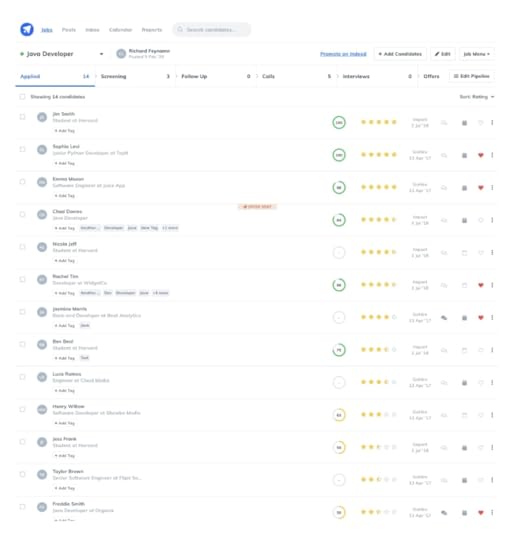
You can also automate messages and tasks within each stage and create templates for consistent messaging and workflows.
It’s important to note that GoHire is specifically geared towards startups and small to medium-sized companies. If you’re looking for a full-blown enterprise suite, this probably won’t fit the bill.
But, for our money, it’s a solid balance between price, functionality, and familiar UI.
Key features:
Visual pipeline and candidate managementCandidate reviews and ratingsBranded hiring pagesSocial and job board integration
Pricing: The Starter package costs just £49/mo (~$65). But it is limited to just 3 active jobs.
The GoHire Growth plan unlocks unlimited postings at £99/mo (~$130).
Check out GoHire to learn more.
#3 BambooHR
Best end-to-end HR solution for startups.
One more application tracking system that’s near and dear to our hearts is BambooHR.
For startups and small businesses that are looking to really button up their hiring and onboarding process—perhaps in one fell swoop—BambooHR is likely to check all of the boxes for your team.
The functionality extends beyond the common ATS and borders on an all-in-one HR suite, but in a much more accessible package (and price range) than many of the enterprise solutions out there.
On the hiring front, BambooHR offers a strong set of tools to build branded jobs pages, create listings, collect applications, and then build a candidate funnel to fill each role.

The features here are roughly equivalent to what you’ll get with solutions like Breezy HR or GoHire. But, Bamboo does offer some extended functionality that dips into the realm of employee experience, HR, and performance management.
This platform covers the most obvious next step in the hiring journey—employee onboarding.
From sending and storing offer letters to building customizing onboarding workflows, BambooHR packs a powerful suite of tools that can help you not just find and hire talent but bring them into the fold with less stress and headache.

This is important for startups because establishing a consistent onboarding flow is just as important as filling empty seats. And when you’re growing fast, you need a system in place to make sure that each new hire is ready to kick arse right away.
BambooHR extends even further, offering time tracking, paid time off, benefits administration tools, employee satisfaction surveys, and more.
It’s the Swiss Army knife of hiring and managing employees.
One thing to consider here is that, in some cases, when platforms attempt to do it all, it comes at the expense of doing any one function particularly well. For what it’s worth, BambooHR boasts an average review of 4.5/5 on Capterra and they have hundreds of glowing reviews. But, some users have noted that the nitty-gritty HR features like benefits management are not as intuitive as you might expect.
Key features:
Branded jobs pages and listingsCandidate funnels and applicant trackingAutomated employee onboardingEmployee records, benefits administration, time tracking, and morePerformance management tools and employee satisfaction surveys
Pricing: BambooHR does not list public pricing. But, customer reviews peg the cost as starting at $4.95/employee/month.
Get a price quote from BambooHR.
#4 Recruitee
Best ATS for building in-house tools on top of the platform.
Recruitee offers a tiered pricing alternative that offers different functionality for its multiple packages.
This could be an attractive option for startups who need an immediate solution to their most pressing applicant collection and tracking needs and may want to grow into a more advanced solution as they scale.
The “Launch” package packs a similar feature set to other ATS solutions, including branded job listings and career sites, an application inbox, and a KanBan-style candidate tracking interface for moving folks through the hiring process.
It also has integrated email sync and other third-party integrations that allow you to connect with HR systems like assessments and background checks.

If you opt for the “Scale” package, you’ll unlock more advanced features—most notably, automation.
You’ll be able to perform or schedule automated tasks based on candidate triggers, like sending pre-configured emails as you move an applicant into the screening phase. You can also create reminders and prompts for your team to make sure they’re staying on top of the candidate pipeline.
At this level, you’ll also be able to create standardized questionnaires and evaluation forms to solidify your hiring workflow.
Lastly, they offer a premium tier called “Lead” that unlocks API access and a host of other customisation options that aren’t available at the lower tiers.
All-in-all, this could be a good solution if you’re looking for something that can grow with your company and possibly plan to roll your internal systems or connect multiple platforms together to build an in-house solution.
Key features:
Branded job listings and career siteCollaborative candidate reviewsBuilt-in video chatAutomated workflows and reporting
Pricing: The Launch package offers 5 open jobs at $109/mo when paid monthly. Their most popular package, Scale, is $399/mo and offers 10 “or more” job slots and the automation features mentioned above.
Check out Recruitee to learn more.
#5 Freshteam
Best free ATS and HR suite.
Freshteam is an all-in-one HR suite that offers a similar set of features to BambooHR.
But, it offers a free tier for up to 50 employees and the package options that stratify specific functionality based on your company’s needs.
This ATS offers job listings and branded career pages. It also syncs with an email inbox to create a unified candidate pool from any inbound application, submitted either via the listings or sent directly to an email inbox.
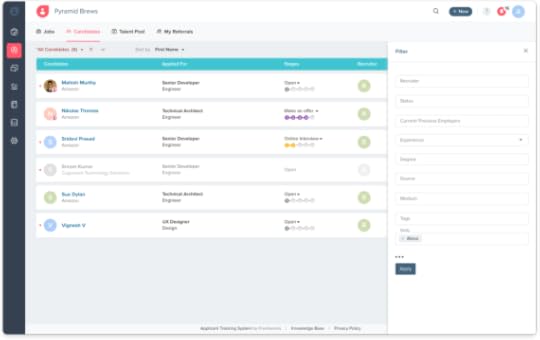
One of the most unique features of Freshteam is that their platform parses applications to create a detailed candidate profile based on the information that’s been provided.
This could be a helpful feature for quickly screening resumes and identifying best-fit candidates at a glance.
It also offers a robust set of features for onboarding and managing employees once the hiring decision is made.

Lastly, it integrates with third-party assessments and screening tools, Skype and Google for setting up video interviews, and free job boards and social profiles.
Users who have left reviews remark about the intuitive nature of the UI and the ease of the platform. But, some have also mentioned that the customer support is less than stellar. So, it may be best to take the tool for what it is out of the box and avoid trying to use Freshteam to power an edge case or bend it to fit a more complex workflow.
This makes Freshteam a great option for companies who need a quick solution but are still considering their forever-ATS or HR suite.
Key features:
Consolidated application inboxDetailed candidate profilesIntegrated candidate communicationFull-featured HR suite with onboarding and employee management
Pricing: Free for up to 50 employees with limited functionality.
Tiered pricing, billed annually:
Blossom – $50/month/50 usersGarden – $100/month/50 usersEstate – $200/month/50 users
Check out Freshteam to learn more.
#6 Greenhouse
Best ATS for tech companies.
The goal of this ATS is twofold—allow you to scale your recruitment processes during times of growth, and empower you to refine them during off-peak times.
Greenhouse has quickly become a recruitment and hiring platform du jour for tech companies and startups. In part, because it offers all of the core features you’ll need to rapidly scale your team in a well-designed and intuitive package. But, it’s also especially well-suited for industries that prioritize candidate experience and compete to hire top talent.
 SoftwareAdvice.com
SoftwareAdvice.comThe UI and UX for both applicants and internal teams are truly second to none.
 GetApp.com
GetApp.comGreenhouse also offers best-in-class features for creating and managing diversity, equity, and inclusion (DE&I) initiatives. They offer specific tools designed to combat hiring bias like in-app prompts for hiring teams, anonymous candidate reviews, and pre-defined decision criteria.
Key features:
Best-in-class user interface and candidate experience scoresStandardized interview scorecardsDiversity, equity, and inclusion featuresOnboarding workflows with personalized welcome sequences
Pricing: You’ll have to contact Greenhouse to get their exact pricing for their three tiers (Core, Pro, and Enterprise), but expect to pay upwards of $6,000/year for the Core tier.
Request a demo with Greenhouse.
#7 Workable
Best ATS with built-in sourcing tools.
Boasting, “Enterprise-grade hiring, for everyone,” Workable offers a robust solution in a pretty low-cost package and with flexible options for scaling up your recruiting efforts.
They break down their features into 3 main categories:
FindEvaluateAutomate
Their platform offers many of the features you’d expect, allowing you to build branded career portals and job listings, sync with job boards, and share listings via social media.
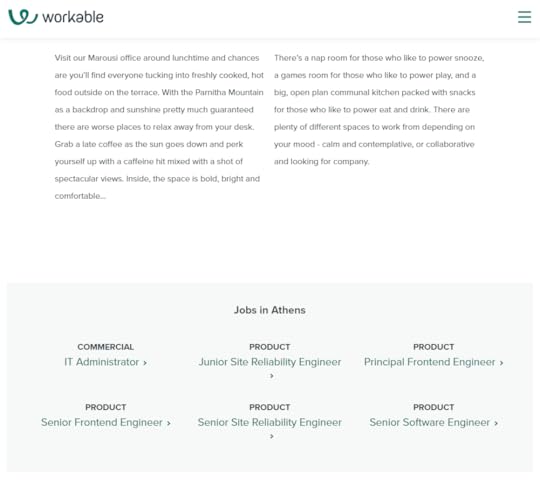
But, what makes Workable really stand out is their built-in database of over 400 million candidates, which is searchable by employment history, roles, and specific skills.

This gives your team the ability to proactively source candidates and build automated outreach campaigns to drive applications. Workable also makes AI-powered candidate recommendations based on your job listings. (Note: Access to the candidate database appears to only be available for annual plans and not pay-as-you-go solutions).
In addition to these powerful tools, Workable has built-in features to drive internal referrals, including gamification, rewards, and leaderboards.
They have collaborative evaluation tools so your hiring team can score and discuss specific candidates.

And, one more unique feature, is what Workable calls “one-way video interviews”, which allow candidates to record video responses to specific prompts. They bill these as a replacement for a traditional phone screen. These require integration with third-party video tools.

Workable gets rave reviews for the ability to quickly build and deploy hiring workflows, including automation for candidates at various stages in the hiring process.
All told, Workable offers a pretty unique platform that offers features beyond many ATS solutions. Perhaps the only drawback is that they are only focused on sourcing and hiring, but don’t offer the same onboarding and employee management features of an HR suite like Greenhouse or BambooHR.
Key features:
Branded careers and job listings pagesSearchable database of more than 400 million candidatesGamified internal referral featuresOne-way video interviewsPowerful automation functionality
Pricing: Workable is the only ATS on this list that offers per-job pricing, which is $99/mo/job.
For companies who want a flexible option, this could be a great way to trial the software and see if Workable is the best solution.
They do not offer specific pricing details on their website for annual plans. But, customer reviews seem to indicate that these plans are priced at $2,500/year for up to 10 job slots and $4,000 per year for up to 20 job slots.
#8 ViVAHR
Best ATS for home service businesses
ViVAHR is a purpose-built application tracking system for companies in cleaning, landscaping, and HVAC industries.

It’s designed to meet the needs of home service businesses looking to hire at scale.
While it doesn’t offer some of the advanced features of other ATS systems, it’s a massive time-saver for companies who simply want to post their jobs to as many online job boards as possible. That’s really the heart of ViVAHR’s platform—it posts job listings to every major, free job board online and has integrations with premium job boards as well.
Key features:
Job listings and branded career websitesIntegration with free and premium job boardsCandidate review, screening, and evaluation tools
Pricing: ViVAHR offers 3 pricing tiers.
Starter – $65/mo (3 job listings)Grow – $115/mo (unlimited job listings)Pro – $199/mo (unlimited job listings)
All prices reflect annual billing.
#9 Recruiterbox
Recruiterbox offers a solid feature set and is a capable option for any size company looking for a true applicant tracking system.

From the basic job board and listing functionality to collaborative evaluation tools, it checks all of the boxes and offers a clean and intuitive UI. The only reason we wouldn’t consider Recruiterbox one of our top picks is because while it offers similar capabilities of the other ATS options we’ve evaluated, the pricing seems a bit steep and opaque. In particular, charging based on the number of employees at the company seems a bit arbitrary and could end up costing a pretty penny as your company grows.
Key features:
Branded job listings and career siteCollaborative candidate evaluation workflowsBuild-in reporting and metrics
Pricing: Varies based on the size of the company and plan.
Starter plan for 10 employees is $199/mo, Pro runs $279/mo, and Pro Plus is $309/mo.
All prices reflect annual billing.
Get customized pricing from Recruiterbox.
#10 ApplicantStack
ApplicantStack is an attractive option for companies looking for both an ATS and onboarding solution. Like some of the other tools on our list, they offer both.
But, what’s unique here is that ApplicantStack allows you to opt for just applicant tracking, just onboarding, or both.
So, it’s a more modular solution that can be customized to meet your needs, even if they change as your company grows.
On the feature and functionality front, we liked that it has pretty much every feature that we use in our current solution. Although, the ApplicantStack UI is a bit less polished than some of the leaders on our list.
Key features:
Unified job listing managementPrescreen and knock-out questionsTest communicationsOnboarding functionality and checklists
Pricing: $135/mo for both Recruit and Onboard functionality. Or, $95/mo for just one.
Learn more about ApplicantStack.
#11 JazzHR
Another interesting contender here is JazzHR.
With a host of critical features for creating and managing job postings, this is a perfectly capable tool for businesses of all types. It doesn’t offer any truly standout features, and some of the customer reviews indicate that the UI can be a bit confusing at times.

Nevertheless, for an entry-level ATS to create, manage, and share job listings—JazzHR is worth checking out.
Key features:
Branded job listings and candidate experienceIntegration with third-party job boardsVisual candidate pipeline
Pricing: $39/mo for up to 3 jobs or $219/mo for unlimited jobs, each with annual billing.
#12 Bullhorn
Best ATS for recruiting agencies.
With more than 8,000 recruitment agencies in its customer base, Bullhorn is specifically built for third-party recruiting agencies. The company spends more than $1 million per month on product development, mainly focusing on increasing the speed of its cloud-based application—a useful benefit for recruiters executing dozens of recruitment tasks every hour.
Key features:
Easily post to job sites from within the appCRM for tracking communication with candidatesAutomated, online onboarding for new candidatesFlexible, customisable contact recordsCentralized cloud database keeps records updated in real-time across devices
Pricing: Bullhorn offers four different pricing tiers to fit companies of all sizes—Team, Corporate, Enterprise, and Enterprise Plus. The pricing depends on how many users you need, and the company requires your contact info to obtain your quote. According to reviews on third-party websites, the Team pricing starts at $99/month.
#13 Jobvite
Best ATS for inbound hiring workflows.
Perhaps one of the more well-known ATS software companies, Jobvite boasts an impressive online review portfolio by being named a Leader in six different categories on G2 Crowd in 2020 alone.
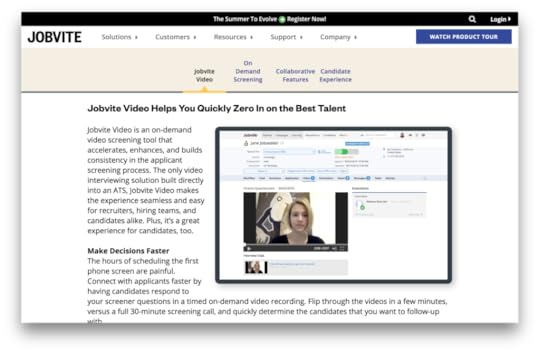
Taking a cue from companies like HubSpot, Jobvite uses an inbound marketing approach to recruitment with an emphasis on tracking candidate actions and metrics that can be compiled into useful and actionable reports.
Key features:
Artificial intelligence powers their sourcing, targeting, screening, and messaging functionalityVideo calling is available within the app itself, providing a sleek interface that increases context with every candidate interviewAbility to build “career sites,” which are white-labelled microsite optimized for mobileDeep reporting and analytics to measure recruiting performance
Pricing: You must contact the company for a custom quote, but online reviews indicate pricing starts at $4,000/year and may cost more than $100,000/year for companies of 2,500+ employees.
#14 SmartRecruiters
This is an enterprise-focused ATS designed to increase the quality of new hires through recruitment workflow optimisation. The product features advanced technology, enabled with artificial intelligence to provide an engaging experience for candidates and valuable efficiencies for recruiters.
Key features:
Ability to post open positions to all job boards through their interfaceCommunity of 2,500+ recruitment professionals to share tips and adviceCreation of high-converting, mobile-optimized landing pages for candidatesOffer management tools including eSignature integration
Pricing: SmartRecruiters does offer a free version that organisations can use for their first 10 hires to get a feel for the system. You’ll have to contact the company to get a custom quote, but online reviews suggest an enterprise-level plan will run you upwards of $10,000/year.
Learn more about SmartRecruiters.
#15 iCIMS
A reputable player in the human resource and recruiting industry, iCIMS is a powerful tool that serves a wide range of industries and verticals. iCIMS has helped more than 4,000 companies find, recruit, and hire candidates in more than 200 countries. The company prides themselves on their ability to integrate seamlessly with dozens of other applications.
Key features:
Provides candidates with ‘text-to-apply’ functionalityCreate one job posting internally and send out to various job sitesCustomize and automate workflows to cut down on manual tasksAdvanced scheduling features allow for hassle-free calendar coordination
Pricing: Their pricing is not publicly listed, however past customers mention that the cost is based on the number of employees at your company and generally starts around $6,000/year for small businesses.
Choosing the Best Applicant Tracking Systems for Startups and SMBs
When it comes to choosing the right ATS for your company, several factors will come into play.
To break it down, you’ll want to consider:
Pricing FeaturesExtendabilityIntegrationsComplexityHiring stack
The most fundamental question to ask when evaluating solutions is which type of hiring software you truly need for your current and future hiring needs.
Most of the applicant tracking systems here can be divided into 2 main camps:
Purpose-built ATS designed to simply create job postings and track candidates in the pipelineAll-in-one HR solutions with ATS functionality plus onboarding, employee management, compliance, and more
If you’re looking for option 1, then a solution like BreezyHR or GoHire are likely to be best suited for your needs.
Under option 2, we love the full suite of features offered by Workable, BambooHR, and Greenhouse.
Comparing Applicant Tracking Systems: Price vs Functionality
Finally, there’s the question of bang for the buck.
Based on our evaluation of dozens of options—and our 15 favourite picks listed here—we’ve broken down the full range of options by their relative pricing and feature set to give you an idea of where each of these options might fall.
Here’s how the comparisons shake out.

You’ll notice that no matter your budget or the complexity of the solution you’re looking for, one of these tools is almost certainly right for your needs.
Based on the above criteria, you can safely decide whether you’re looking for a high-end solution with more end-to-end HR features, or a simpler solution that might come at a more affordable price. Or, most likely, you’ll want to look for something in the middle—an affordable solution with all of the features you need, but nothing more.
Again, our top picks here include:
GoHireBreezyHRWorkableBambooHRGreenhouse
Each of these solutions seems to hit a sweet spot in terms of pricing and functionality, with the more comprehensive HR suites demanding a higher price but also including a fuller range of features for talent management.
No matter which ATS you choose, you’ll likely be grateful to have a system in place to make hiring faster, easier, and more organized.
Take a few options for a test drive, figure out which one meets your needs, and then forge ahead.
Happy hiring!
The post Best Applicant Tracking Systems: 15 Top ATS for Startups, SMBs, & Beyond appeared first on Venture Harbour.
August 3, 2020
10 Account-Based Marketing Tools to Improve Your ABM Performance
According to TOPO’s 2019 Account Based Benchmark Report, 86% of marketers say their account-based strategies win more clients than traditional methods while 80% say ABM improves customer lifetime value and 76% report higher ROIs.
Given the stats associated with account-based marketing, it’s no surprise that interest in this B2B strategy has steadily increased over the past five years. For a while, ABM was in danger of hitting buzzword status and losing all meaning beyond its own hype but interest has remained steady and the strategy continues to deliver results.
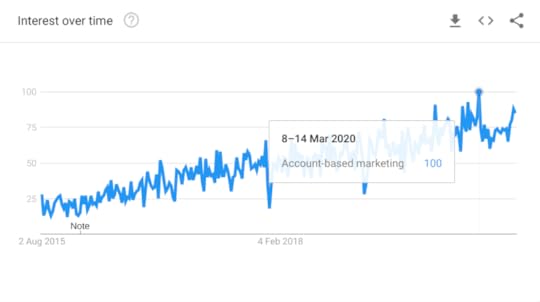
I’m not here to tell you about the wonders of ABM or how it’s going to solve all your problems, though. Instead, this article aims to help you choose the best account-based marketing software for your needs so you can implement your own strategy and find out what ABM has to offer for yourself.
First up, we’ve got a brief explanation of what account-based marketing is – just to make sure we’re all on the same page. And, then, we’re looking at some of the best account-based marketing tools on the market for every budget and business size.
What is account-based marketing?
Account-based marketing is a strategy that revolves around prospecting target companies (accounts) and creating campaigns designed specifically to capture them as leads and, ultimately, turn them into customers.
So, instead of casting a wide net with traditional inbound marketing campaigns, you’re drawing up a list of high-value target customers and focusing your efforts on winning them.
Don’t take my word for it, though. Here’s how HubSpot describes account-based marketing and some of its key benefits:
“Account-based marketing (ABM) is a focused growth strategy in which marketing and sales collaborate to create personalized buying experiences for a mutually-identified set of high-value accounts.
“[ABM] allows you to weed out less-valuable companies early on and ensure marketing and sales are in complete alignment — in return, your team can leap into the critical processes of engaging and delighting those accounts much faster…
“…By doing this — along with personalizing the buyer’s journey and tailoring all communications, content, and campaigns to those specific accounts — you’ll see greater ROI and a boost in customer loyalty.”
The Ultimate Guide to Account-Based Marketing (ABM) – HubSpot
There are a number of characteristics that define account-based marketing, which you need to implement if you’re going to successfully identify, capture and convert target prospects into paying customers:
Accurate customer profiling, typically using your existing customer data and available third-party data.Data-driven prospecting to ensure you identify valuable and relevant accounts for your campaigns.Prioritising high-value accounts in order to maximise ROI.Personalising campaigns and content to address the unique needs of each target account.Aligning sales and marketing activities to ensure prospects navigate the entire sales funnel.Automating marketing and sales processes so you can handle more leads while both teams focus their efforts on tasks that can’t be automated.Integration with traditional inbound marketing to capture leads that your ABM strategy misses – and vice versa.
To implement any of the steps above, you’re going to need specialist tools – for example, the necessary data sources to profile target accounts or the ability to create and deliver personalised content/campaigns.
Account-based marketing software should provide the majority of these tools and integrate with anything else you need to manage a successful ABM strategy. Some software options provide more built-in tools than others while some focus more on integration.
At the same time, the native tools provided by ABM software can vary widely and this isn’t always reflected in the price. So, in this article, we’re looking at the very best account-based marketing software tools available, as well as a few more budget-friendly options that offer good value.
Which tools are we looking at in this article?
For this article, we’ve picked 10 of the best account-based marketing tools that will help you implement your own ABM strategy. While all of these platforms broadly aim to achieve the same thing, there’s a lot of variation in terms of features and pricing.
Some are comprehensive ABM platforms that you can use to manage your entire strategy while others are simply prospecting tools that help you pinpoint target companies.
Here’s a quick summary of the tools featured in this article and why they make our list of recommendations:
DiscoverOrg: Enterprise B2B intelligence to power your ABM strategy.Terminus: A complete ABM marketing platform for prospecting and delivering multichannel campaigns.Triblio: A flexible ABM platform for medium-sized businesses.Vainu: Powerful, easy-to-use prospecting tool for SMEs.Leadiro: Affordable, scalable B2B data platform for smaller businesses using ABM as a growth strategy.AdDaptive Intelligence: Simple, powerful ABM list building software.RollWorks: Cost-effective prospecting and targeting for your ABM advertising campaigns.Madison Logic: Award-winning ABM software for powering your multichannel campaigns.Leadfeeder: Budget tool for identifying which companies visit your website.HubSpot: The all-in-one marketing, sales & ABM solution.
All of these tools are quality software solutions in their own right and it all comes down to what you need from an ABM tool and how much you’re willing to pay.
#1: DiscoverOrg: The enterprise B2B intelligence platform
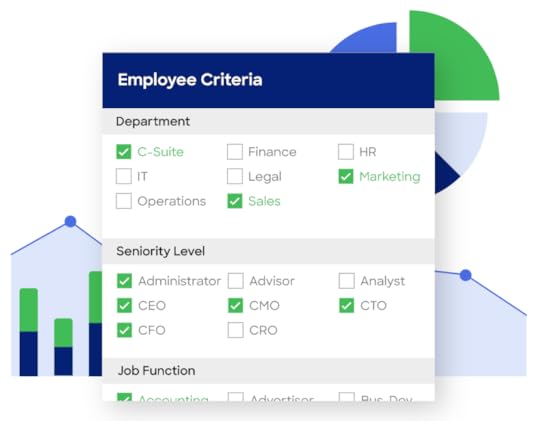
Key features:
Prospect identification: Identify, connect, and convert key buyer personas at the accounts you care about most.Profiling: Define your Ideal Customer Profile (ICP) by leveraging advanced insights about your existing customer base.Behavioural targeting: Use behavioural activity at targeted accounts that are consuming relevant content from both across the internet and internal web properties.Real-time insights: Beat other recruiters to the punch with automatic alerts about major personnel changes like promotions, layoffs, rounds of hiring, and other company events.Data cleansing: Append and update existing and incoming prospect data in real-time to ensure information stored within your applications is always current and accurate.
DiscoverOrg is an enterprise B2B intelligence platform used by some of the world’s biggest brands, including LG, Fujitsu, Citi and Panasonic. The software connects you with extensive third-party data and provides all the tools you need to turn insights into data-driven B2B campaigns.
This makes DiscoverOrg one of the most comprehensive ABM platforms on the market. Its vast contact database helps you identify prospects and you have an extensive set of filters available to refine your audience. This allows you to pinpoint high-value companies and decision-makers that are worth prioritising in your ABM strategy.
Aside from prospecting, DiscoverOrg provides real-time insights and buyer signals so you can react as new opportunities emerge. I have heard some reports of contact data being out-of-date, though. For example, some customers have found prospects working at specific companies on DiscoverOrg but discover they’ve already moved to another company when they check their LinkedIn profile.
All B2B prospecting tools suffer from this problem, to some extent, and you may experience it more on platforms that use large datasets. Data quality is a key factor when choosing ABM software but none of them can deliver 100% accurate data in real-time, all the time.
All things considered, DiscoverOrg performs well in terms of data quality and it’s one of the most respected platforms in the industry.
Keep in mind that DiscoverOrg is an enterprise solution and this is reflected in the pricing. The company doesn’t disclose pricing on its website but annual fees start in the lower tens of thousands while its largest customers are paying millions per year.
#2: Terminus: The complete, multichannel ABM platform
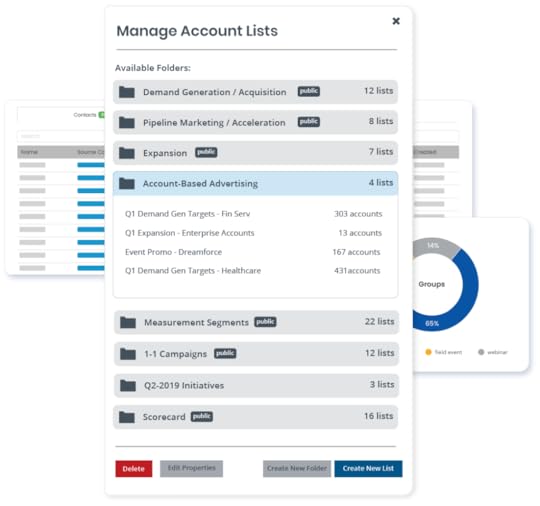
Key features:
Prospecting: Find the right prospects accounts through firmographic, intent, engagement, and relationship data.Multichannel campaigns: Run campaigns across display advertising, LinkedIn, retargeting, employee email, personalized web pages, and chat.Sales & marketing alignment: Tools to help your sales and marketing teams work in harmony.Alerts: Automatically alert sales to meaningful engagements, centralize account information, and deliver better pipeline prediction to accelerate opportunities.Attribute & measure: Measure success at every stage of the prospecting, marketing and sales journey.
Terminus wants to be the centre of your entire account-based marketing strategy by providing all the tools you need to identify prospects and deliver multichannel campaigns.
The company pushes the acronym T.E.A.M as its framework for ABM success, which basically describes the four components of its software:
Target: Define your audiences and pinpoint prospects using Terminus’ third-party data and your existing customer data.Engage: Manage campaigns to engage your prospects across the web, social, email, web personalisation and web chat.Activate: Align your sales and marketing teams and automate processes to turn more prospects into customers.Measure: Analytics, attribution and reporting tools to measure the success of your ABM strategy.
While a lot of ABM platforms focus on paid advertising, Terminus makes it easy to turn prospect data into multichannel campaigns. This setup also makes it easier to integrate your ABM strategy with traditional outbound marketing and manage everything from the same place.
Terminus’ software is simple to use, once you’ve got the platform set up, and the company provides extensive online documentation to help you get the best out of the platform.
On the other hand, you may have to work a little harder with Terminus to turn your ABM prospects into leads and customers. Whether it’s the third-party data being used or the targeting methods, Terminus doesn’t seem as reliable at matching you with the most relevant prospects as some of the other tools we’re looking at today.
Don’t get me wrong, this is an award-winning piece of software with a host of awards from summer 2020. You’re getting ease-of-use, multichannel convenience and solid support, even if the data/targeting mix isn’t quite as reliable as the industry leaders.
For an easy entrance into ABM as a multichannel strategy, Terminus is worth checking out.
#3: Triblio: A flexible ABM system for medium-sized businesses

Key features:
AI prospecting: Leverage AI for account identification, purchase intent, and orchestration.Sales & marketing alignment: Operationally unify the marketing funnel and sales pipeline.Multichannel campaigns: Create multichannel campaigns triggered by account activities, purchase intent, campaign results and priority accounts.Audience management: Create audiences from known and unknown prospects for targeting campaigns.Purchase intent: Identify purchase intent via account scoring algorithms that measure behaviour, 3rd-party data trends and campaign results.Web personalisation: Engage web visitors with relevant messaging and convert them with dynamic CTAs.Sales activation: Activate sales outbounding that aligns with marketing campaigns and buyer interest.
Triblio is a flexible account-based marketing platform that helps you deliver ABM campaigns across every channel. It also packs some impressive features for web personalisation, customising CTA offers and dynamic email campaigns.
The platform’s prospecting tools help you discover new prospects and identify decision-makers at your target businesses, as you would expect from any ABM platform. However, Triblio goes the extra distance with the tools it provides for turning prospect data into meaningful campaigns – mainly through personalisation.
You can personalise web content for identified visitors, add dynamic CTAs to blog posts and automate personalised emails to deliver relevant messages. Of course, you could do all this with specialist personalisation and email marketing software but Triblio allows you to do all of this from the same piece of software.
Admittedly, Triblio’s personalisation technology isn’t as advanced as industry leaders like Adobe and its email automation doesn’t compare to something like ActiveCampaign. In fact, Triblio isn’t the tool for businesses with a mature ABM strategy already in the works. It’s more suitable for medium-sized businesses looking to get started with account-based marketing, looking for a tool that can a lot, quite well, for a reasonable fee.
Speaking of which, like many of the providers we’re looking at today, Triblio doesn’t list any pricing on its website and your annual fees will depend on a range of account limitations, such as the number of users and data volume. Either way, this is a platform aimed at medium-sized businesses and up, so keep that in mind.
Let’s just say, annual fees start in the lower five-figure region, which is what you would expect for a platform at this level.
#4: Vainu: Powerful prospecting for SMEs
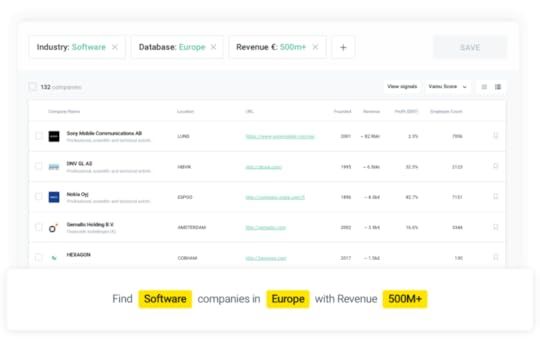
Key features:
Prospecting: Find your ideal customers, the right time to reach out, and pinpoint the right message.Quick lists: Build lists within a few clicks from 100+ filters and CRM data.Buying signals: Make informed sales and marketing decisions by tracking buying signals of each prospect.Triggers: Implement sales actions automatically, triggered by CRM data and buying signals.CRM: A customer relationship management system for housing prospect and customer data.Marketing automation: Boost marketing impact by understanding more about who you’re interacting with, through accurate company information.
Vainu is a powerful, easy-to-use prospecting tool for SMEs that helps you identify prospects and integrate business data with your CRM. While a lot of the tools we’ve looked at so far aim to be comprehensive ABM marketing platforms, Vainu is a specialist prospecting tool and it doesn’t try to be anything else.
That being said, the company does offer a separate automation solution, which could be ideal if your CRM doesn’t have this functionality.
Getting back to the prosecuting, Vainu has business databases for Finland, Sweden, Norway, Demark and the Netherlands while databases for France, the US and the UK are currently in beta (at the time of writing).
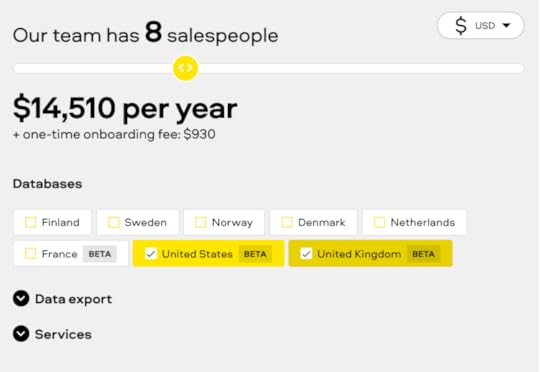
Pricing starts at $7,250 per year for one database and five users, gradually increasing as you add data from more countries and sales team members. So you’re already targeting prospects in specific target nations, before you even get started. It’s also worth noting that a lot of platforms’ databases will be US-centric and Vainu’s Scandinavian roots bring some valuable data to the table for businesses with an interest in northern Europe.
You also have 100+ filters to work with, allowing you to target relevant companies and business decision-makers. One particularly interesting filter is the “Website keywords” field that allows you to target businesses based on the key terms of their web pages.
Vainu’s software is designed very well, too. Although it’s somewhat subjective, I’m confident enough to say this is the best user experience provided by any of the platform’s we’re looking at in this list.
The company has clearly put a lot of resources into building a quality prospecting tool without forcing other features into the software. My only real gripe is that the list of integrations is very short and you’re limited to using HubSpot, Microsoft Dynamics, Pipedrive or Salesforce as your CRM.
#5: Leadiro: An affordable B2B data platform for smaller businesses
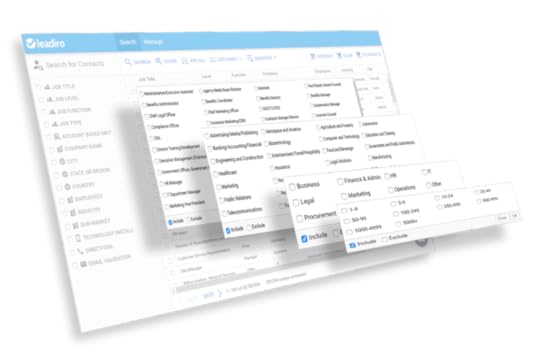
Key features:
Prospecting: Access +59 million business contacts to identify, reach & engage with your ideal B2B prospect audience in minutes.Validated data: Leadiro uses its own unique Contact Validity Score (CVS) algorithm to ensure all contacts meet a 95% score or higher.Advanced data selection: Filter using advanced firmographic and demographic profiling to uncover ideal prospects.Geographical targeting: Reach B2B buyers in 108 countries from America to Zambia and everything in-between.ABM campaigns: Leadiro’s audience insights give you the data you need to identify prospects and reach them through targeted campaigns.Technographics: Understand the hardware, software and technology solutions your prospects are using to guide your ABM campaigns.
Account-based marketing is generally associated with larger B2B enterprises, which means there aren’t many ABM software options for smaller businesses – and there are even fewer worth recommending.
Leadiro is one of the few software providers that makes a genuine effort to satisfy smaller businesses.
The company offers an affordable, scalable B2B intelligence platform designed for smaller businesses that want to use ABM as a growth strategy. It’s an impressive platform, too, especially when paid plans start at just $99/month.
There’s also a free version you can try out, which gives you unlimited access to the platform’s data without being able to download any contact data.
Leadiro’s data isn’t always the most up-to-date but, as mentioned earlier, this is a problem all ABM platforms suffer from to some extent. At this price point, though, Leadiro holds up surprisingly well but you are going to find the occasional piece of data missing from company profiles and contacts who are no longer at the company stated.
Leadiro certainly isn’t the most comprehensive ABM platform on the market but it does provide a valuable entry-point into account-based marketing for smaller businesses.
#6: AdDaptive Intelligence: Simple, powerful ABM list building
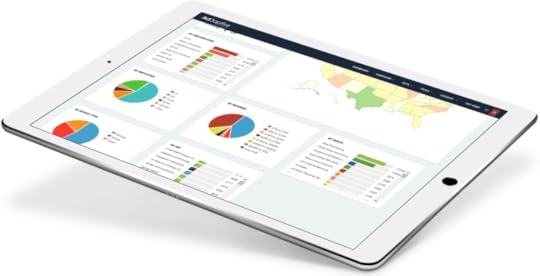
Key features:
B2B Targeting: Build a list of business targets in AdDaptive’s platform or bring your own pipeline using precise firmographics, such as company names, employee size, revenue and industry.Verified data: AdDaptive partners with industry-leading data providers to deliver accurate, verified data for B2B marketers.Segment Builder: Create custom audiences using advanced intelligence and filters to deliver your message to the most relevant prospects.Audience analytics: Analyze your audience data to discover new insights, improve advertising campaigns, experiment with new targeting strategies, and make smarter marketing decisions.Advertising automation: Eliminate repetitive tasks such as trafficking orders, uploading creatives and optimizing campaigns.
AdDaptive Intelligence is another platform that specialises in doing one task very well: prospecting. Essentially, this is an advanced ABM list building tool that helps major brands such as HP, Intel, Deloitte and ExxonMobil find new target customers.
The company partners with leading data providers to compile one of the most robust archives of B2B information. Crucially, AdDaptive’s verification technology helps keep this info up-to-date, which means you should experience fewer issues with data accuracy.
The platform’s Segment Builder is an excellent tool, too, allowing you to create highly-focused target audiences with an extensive range of filters and custom attributes – from industry code, employee size, revenue, years in business, headquarter/branch locations and just about anything you could think of.
#7: RollWorks: Cost-effective prospecting & targeting for ABM ad delivery

Key features:
Identification: Identify your ideal customer profile, select a list of target accounts and find key contacts.Account scoring: Score your TAL with a predictive model built by machine-learning technology. Focus resources on accounts most likely to close.Account suggestions: Discover net-new accounts that are a good fit for your business thanks to our B2B database and a custom predictive model.Account Intent: Use machine learning to uncover signals of an account’s interest-based on its content consumption behaviour on the B2B web. Use these intent signals to prioritize accounts for marketing or sales outreach.Engagement: Engage your ICP, target accounts and key buyers through digital ads and sales automation.Measurement: Measure the effectiveness of your ABM campaigns, at both account and contact levels.
RollWorks is a dedicated account-based marketing platform for managing paid advertising campaigns. The platform helps you identify high-value prospects, engage them through targeted ad campaigns and measure results with built-in analytics and reporting.
Audience matching on RollWorks is impressively accurate, too, partly thanks to the extensive targeting options at your disposal but the quality of data has to be strong, to begin with.
Plans start from $975/month and increase based upon your data requirements and the number of users. I have heard some complaints that the dedicated account managers you get with the more expensive plans change too much to justify the added expense – something to keep in mind with the enterprise plans.
#8: Madison Logic: Award-winning multichannel ABM software

Key features:
Identify & Prioritise: Accurately identify and prioritize accounts that are more likely to convert.ABM advertising: Engage the most influential people at the best accounts throughout every stage of the buying journey.ABM content syndication: Specifically target people with the right job titles from accounts that are actively searching for a solution like yours right now.Account Intelligence: Use more than 20 data sources including firmographic, technographic, and intent data to efficiently spend your content syndication budget on accounts that are trending and more likely to convert.Journey Acceleration: Automatically trigger and stop content syndication programs based on where the account is in the marketing nurture, sales, and post-sales funnels.Engage & Measure: Leverage precise tools to engage with the right individuals within a targeted account buying centre.
Madison Logic is an award-winning B2B intelligence and multichannel ABM platform. The software pulls in high-quality data from third-party sources, allowing you to identify prospect companies and decision-makers using a combination of firmographic, technographic and demographic information.
Once you’ve identified the right prospects, Madison Logic allows you to target them with ads across the entire buying process, manage content syndication campaigns and automate sales/marketing tasks to speed up the conversion process.
Madison Logic is an enterprise-level software platform but its starting prices are surprisingly affordable. You won’t find any pricing listed on its website but annual fees start at the lower-mid end of five figures.
Ultimately, pricing depends on how much contact data you download and the number of users you need. Whichever price point you find yourself signing up to, you’re getting one of the best ABM platforms in the business, even among the 10 recommended in this article.
The only obvious area where Madison Logic could improve as an enterprise solution is in the analytics and reporting department. In fairness, this is true for many ABM platforms and marketing software in general, which is why you generally want to integrate with a dedicated analytics solution.
#9: Leadfeeder: Budget tool for identifying which companies visit your website.
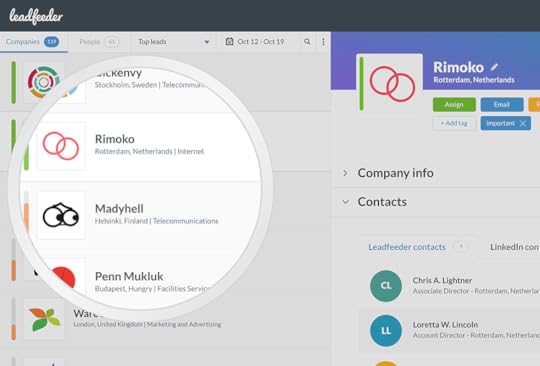
Key features:
Identify visitors: See which companies are visiting your website.Session insights: Learn which pages visitors are viewing to understand their interests.Automatic lead scoring: Your hottest leads are automatically placed at the top of your lead list so you know where to focus your attention next.Instant Lead Gen: Leadfeeder’s tracker pushes data every 5 minutes so you’re ready to work with leads as soon as they come in.Versatile filtering: Create and save all kinds of powerful feeds like companies from a certain country, an AdWords campaign or to a certain web page.Email alerts: Email notifications when a target company visits your website.CRM integration: Send leads to your CRM and automatically update when a lead revisits.
Leadfeeder isn’t a complete ABM platform or even a prospecting tool that helps you find unknown potential customers through third-party data. Instead, it’s a simple tool that shows you which companies are already visiting your website, how they found you and what they’re interested in – which allows you to identify and capture leads you might otherwise fail to identify.
In other words, Leadfeeder can’t compete with the other tools on this list from a pure ABM perspective. In fact, it’s a stretch to even call this an account-based marketing tool but it does help you identify target accounts, albeit the ones already visiting your website.
So these are leads that already know your business, to some extent, and you’re not exactly expanding your audience here. However, Leadfeeder gives you a better understanding of how your inbound marketing strategies are working and identifies the leads you’re generating.
You can then use this identification to follow up lost leads, particularly the most valuable ones.
While Leadfeeder is a simple tool, in comparison to the other ones we’re looked at in this article, it can add value to the most mature ABM strategies. It can also act as an entry into account-based marketing for business on a tight budget or startups that don’t yet have the funds for a more extensive tech stack.
With a free Lite version available and paid plans starting from $55/month, this is the only viable option for a lot of the smallest and micro-businesses out there.
#10: HubSpot: The all-in-one marketing, sales & ABM solution

Key features:
Prospecting: Use workflow templates to define your ideal customer profiles and identify good-fit target accounts.Prospect scoring: Identify the highest value accounts and help prioritise reachout with company scoring.Recommendations: AI-powered recommendations of target accounts ensure your sales team never misses a beat.CRM: Fully integrated with HubSpot’s customer relationship management software.Content personalisation: Turn more prospects into customers by creating personalised content and delivering it accurately.Track & measure: Track and measure key milestones throughout an account’s journey, continuously using data to adapt and iterate on your ABM strategy.
HubSpot’s account-based marketing software isn’t a standalone ABM tool. It comes packaged with the company’s Marketing Hub Professional and Sales Hub Professional solutions. So, if you like the look of HubSpot’s software and you want a fully integrated ABM tool that fits right in with your sales and marketing platform, this option allows you to manage everything from one system.
You also get some impressive personalisation features to make your messages more compelling for identified accounts, solid automation capabilities and a bunch of tools to help you manage inbound marketing campaigns alongside your ABM strategy.
In terms of an all-in-one marketing, sales and ABM platform, HubSpot is hard to beat.
Pricing for HubSpot’s Marketing Hub Professional starts at $9,600 per year and this covers you for 1,000 contacts. By the time you reach 10,000 contacts, you’re looking at annual fees of $15,000 and I should point out there’s a $3,000 onboarding fee, too.
Sales Hub Professional starts at $4,800 for up to five paid users (unlimited users can access free features and tools) and the onboarding fee is $250. Keep in mind that you’re really going to want both the marketing and sales platforms to align both strategies and make the most of account-based marketing.
Which is the best ABM tool?
All of the Account-based marketing tools we’ve looked at in this article are good options for the right kind of business. Features and pricing vary wildly across each platform and I’ve made a conscious effort to recommend tools at every price point.
The right tool for you also depends on your needs and expectations from account-based marketing. If you’ve already got a mature ABM strategy and you’re looking to upgrade your software, something like DiscoverOrg will give you one of the most reputable systems in the business.
If you’re new to ABM or looking to scale your strategy alongside business growth, then options like Vainu and Leadiro might be more compelling. For the tightest of budgets, Leadfeeder might provide the glimpse of ABM success you need to justify investing more in the strategy at a later date.
On the other hand, if you value simplicity and see the benefit in a single platform for managing your marketing, sales and ABM strategies, HubSpot is the ideal choice.
The post 10 Account-Based Marketing Tools to Improve Your ABM Performance appeared first on Venture Harbour.
July 2, 2020
Best Analytics & Business Intelligence Platforms
With a free tool like Google Analytics offering one of the best analytics platforms on the market, it’s easy to understand why so many businesses never explore alternatives or more powerful options.
According to data from W3Techs, Google Analytics has a whopping 84.1% market share of traffic analysis tools but this doesn’t mean it’s necessarily the best analytics platform on the market.
In fact, it’s not even Google’s most powerful option.
So, in this article, we’re looking at the best analytics and business intelligence tools available right now.
Which platforms are we looking at in this article?
We’re not going to look at Google Analytics or any free alternatives in this article. We’re only focusing on the very best analytics and business intelligence platforms in this article. And, while Google does earn a place on our list, we’re talking about an advanced suite of tools designed for enterprise businesses.
That said, if you’re looking for a free/affordable option, Google Analytics is the unanimous recommendation – it’s just not in the scope of this article.
Here’s a quick preview of the analytics and business intelligence platforms we’re looking at today:
Google Marketing Platform (Enterprise)Microsoft Power BIOracle Analytics CloudQlikTableauIBM Cognos AnalyticsSisenseSAP BusinessObjects BITIBCO SpotfireLookerYellowFin
So that gives you an idea of what we’re looking at in this article but let’s just take a moment to clarify the difference between an analytics and business intelligence platform – just so we’re 100% clear on what we’re talking about.
Analytics vs business intelligence – what’s the difference?
Strictly speaking, an analytics platform is a piece of software that collects analytical data and presents it in visual formats so that human users can make sense of the data, compare reports and spot trends.
The kind of analytics platforms we’re looking at in this article are web analytics tools that collect varying amounts of traffic and website performance data – anything from user location and device type to page visits and conversion rates.
If you’re reading this article, you’re probably already familiar with Google Analytics, so I’m not going to go into too much detail about this.
What might be less obvious is how a business intelligence platform differs from an analytics tool like Google Analytics. And the simple answer is that where an analytics tool collects and presents data for analysis, a business intelligence tool uses a broader range of business data to predict trends and outcomes.
This is an important distinction to understand but it’s also worth knowing that the line between analytics and business intelligence platforms has blurred a lot over the years and most enterprise options offer a certain amount of both – which is why we’re looking at analytics and business intelligence in this article.
Google Marketing Platform (Enterprise)
Google Marketing Platform is the complete suite of analytics and optimisation tools developed by Google to help you improve the performance of your website and Google Ads strategy.
This includes Google Analytics, Data Studio and a range of other tools – and many of these have highly-capable free versions, much like Google Analytics.
However, the enterprise version of Google Marketing Platform provides the fully-featured suite of marketing tools designed to give you a 360-degree view of your online presence.

Key features:
Google Analytics 360: Understand your customers to deliver better experiences.Data Studio: Bring your data to lie with engaging, customisable reports.Optimize 360: Test variations of your sites, pages and apps.Surveys 360: Get fast, reliable opinions from real people.Tag Manager 360: Manage all your tags without editing any code.Search Ads 360: Get real-time data and unified insights from your search campaigns.Display & Video 360: Reach today’s always-connected audiences wherever they are.
If you’re looking for something more capable than the free version of Google Analytics but already know the software well, the enterprise version of Google Marketing Platform is the obvious choice.
With Google Analytics 360, you get a serious upgrade in terms of features compared to the free version, including:
Advanced analysisAdvanced attribution modellingDedicated account manager24/7 emergency supportImplementation supportTraining from Google ExpertsGoogle Drive integrationDisplay & Video 360 integrationCustom funnel reportingUnlimited dataRaw data access“Real-time” dataFull data ownership
You can find a more detailed comparison on the Marketing Platform website and Google Analytics 360 is only part of the package. The enterprise version of Google’s marketing suite also gives you access to the tech giant’s most advanced CRO platform, Optimize 360, and unlocks all of your paid advertising data through Google Ads 360.
Meanwhile, Data Studio gives you complete control over your data visualisations, allowing you to build fully-customised reports to meet your business needs.
Microsoft Power BI
Microsoft Power BI brings us to our first business intelligence platform in this article and you don’t get any points for guessing what the “BI” stands for.
Where Google Marketing Platform focuses on website and marketing performance, Microsoft Power BI takes a more holistic look at business performance – whatever that means for your organisation.

Key features:
Real-time reporting: Monitor business and process performance as it happens with real-time reports.Predictive analytics: Predict trends and future performance using artificial intelligence.AI diagnostics: Diagnose performance issues faster, once again using artificial intelligence.Microsoft AI: Microsoft’s industry-leading AI technology is a constant presence throughout the Power BI platform.Machine learning: Build your own machine learning models using Power BI.Microsoft Azure: Clean big data and prep your datasets faster using Azure data lakes.Excel integration: Seamless Excel integration makes both Power BI and the spreadsheet application more powerful data tools.
Power BI pulls in data from all of your data tracking software (analytics, sales reports, accounting software, etc.) and brings them all together so you can compile reports with all of your data.
The Microsoft platform also pulls in data from third-party sources, which means you’re not only relying on your owned data to make business decisions. For example, you can compare financial performance against market trends to see if changes in revenue – whether positive or negative – are reflective of market shifts.
Microsoft’s industry leading AI technology spots patterns and trends that your in-house teams might miss – or, at least, spot them sooner. This allows you to react to insights faster and Power BI’s predictive analytics forecasts performance issues before they even arise.
For organisations overwhelmed by big data and unimpressed with the business decisions they’re currently making from all of their data sources, Power BI can provide the intelligence you need.
Oracle Analytics Cloud
Bringing us back to true analytics, Oracle Analytics Cloud offers up one of the most powerful AI-driven platforms on the market.
The company’s “augmented analytics” applies smart data preparation and provides a natural-language discovery system that allows you to ask conversational questions and get insightful answers.

Key features:
Augmented analytics: Powered by artificial intelligence and machine learning.Data discovery: Advanced data visualisations to make analysis easier and insights more obvious.Natural language processing: Ask Oracle conversational questions to gain insights faster.Data preparation: Prep your data for more relevant and accurate insights.Data publishing: Easily share and embed insights into documents and content for publishing.Predictive Analytics: Calculate future trends with greater accuracy with machine learning.
Thanks to Oracle’s AI prowess, you can also forecast future trends with greater accuracy using its predictive analytics models. You can use this to spot trends before they peak and diagnose performance issues before they start having a negative impact.
Another standout feature of Oracle Analytics Cloud is data publishing, which makes it easy to share and embed reports anywhere you want. So you can create reports and presentations for board members or investors to highlight the rewards of your team’s hard work or create data-journalism content by easily embedding insights into documents.
Qlik
Qlik is a data intelligence software provider that offers a range of tools for data analysis. The company offers two core products: QlikView, which is its standalone analytics tool and Qlik Sense as an integrated analytics and business intelligence platform.

Key features:
QlikView: This is Qlik’s advanced analytics platform with the company’s built-in Associative Engine technology.Qlik Sense: Qlik’s complete data analytics and business intelligence platform.Qlik Insight Bot: Conversational analytics via bots and popular chat platforms such as Skype.Associative Engine: Explore your data without being limited to predefined segments.Machine intelligence: AI and machine learning insights.Advanced data prep: Clean and prepare your data for reports and algorithms.Offline mode: Access data and reports offline.
QlikView is the company’s advanced standalone analytics tool, built around its innovative Associative Engine technology that gives you complete control over your data.
Qlik Sense is the newer platform of the two, building upon Qlik’s many years of experience in the analytics business to incorporate the latest AI technology to deliver an augmented intelligence system. The platform is capable of making context-aware suggestions, sending you alerts for emerging trends and making data-driven predictions using machine learning.
With conversational analytics, you can ask the platform questions in everyday language and get insightful responses.
Tableau
Tableau was one of the first companies to emerge with a self-service business intelligence and analytics platform. It remains one of the biggest names in the business and one of the most comprehensive, too, which means there’s a pretty solid learning curve to tackle if you want to get the best out of this platform.

Key features:
Analytics: Advanced analytics with an award-winning visual interface.VizQL: Tableau’s innovative drag-and-drop visualisation builder for creating custom reports, the way you want them to look.Collaboration: Securely share interactive dashboards, keep on top of data with alerts & subscriptions, and use storytelling to share insights clearly.Content discovery: Make it easy for everyone to find the right data. Organize resources by project, recommend relevant data, allow ‘go back’ with revision history, and enable search.Data prep: Get your data ready for analysis with the same interactive, visual interface as the analytics platform.
Tableau pulls in data from your analytics and marketing tools (eg: Google Analytics, Salesforce, etc.) and combines it all into a single database. You can then use the platform’s built-in data preparation tools to clean and refine your data to improve the quality of your analytics.
One of Tableau’s signature features is called VizQL, a drag-and-drop builder for creating visualisations on the fly – a great feature for team members who have problems with conceptualising data in visual formats.
Tableau also has great collaboration features for teams and a content discovery system that makes it easy for everyone to find the data they need.
IBM Cognos Analytics
IBM Cognos Analytics is the upgrade to Cognos Business Intelligence, bringing a new cloud option, web-based interface, cognitive guidance and new data visualisation features.
This AI-powered platform comes from a true leader in data intelligence and it shows throughout Cognos Analytics. You can feed in data from third-party analytics tools like Google Analytics and CRM platforms like ActiveCampaign, as well as external data from third-party sources such as market reports and government data.

Key features:
Custom dashboards: Create your own dashboards and prioritise data.Animated stories: Build animated reports to present your data.Conversational search: Explore data using conversational language.Pattern detection: Automatically detect patterns and anomalies in your data.Predictive analytics: Forecast trends and performance using artificial intelligence.
You can create your own dashboards and visualisations, use AI to detect hidden patterns, conversational search, collaborate with team members and share data/reports.
IMB offers a Cloud Edition and Enterprise Edition of Cognos Analytics. The Cloud Edition is designed for smaller businesses and there are Standard, Plus and Premium plans with prices starting at $15 per user, per month.
The Enterprise Edition provides a dedicated service, customised to meet your needs, and you can either host this on the cloud or on your own servers, on-premise.
Sisense
Formerly Periscope Data, Sisense is an API-first cloud technology that allows you to build your own analytics apps. So this isn’t a ready-to-use analytics platform but rather a toolset for building analytics software, whether it’s for your own business, clients or to sell as a product.
Key features:
Embed: Embed analytics anywhere with full customisations and white labelling that are secure and scalable.Mashup: Mash up a combination of live or cached data models to optimise performance and manage resource utilisation.Analyse: Analyse data from across your entire data landscape and transform it into powerful visualisations and actionable application components.Impact: Impact business decisions and drive change with deep insights and answers to complicated questions.Deploy: Deploy on the cloud, on-premise, or hybrid using Linux or Windows.Control: Control access at system, object, data, and process levels, including recovery and audit trails.
If you’re looking to build an analytics system to meet your own needs or create bespoke apps for your clients, Sisense provides the tools you need. The platform builder slashes the time it takes to create interactive dashboards, self-service analytics or white-labelled business intelligent apps – both cloud and on-premise solutions.
SAP Analytics Cloud
SAP Analytics Cloud is an advanced analytics and business intelligence system that helps you turn data into insights faster. This is one of the most comprehensive all-in-one analytics and BI solutions on the market right now and this does mean the platform takes some time to get used to.
It’s also surprisingly affordable for a platform of this calibre with prices starting at $17 per month, per user.

Key features:
Augmented Analytics: Powered by AI, machine learning, and natural language processing (NLP).Conversational analytics: Ask questions in a conversational way – and get instant answers, data visualisations, and explanations – with natural language processing and generation.Automated machine learning: Use machine learning algorithms to automatically reveal relationships, hidden patterns, and outliers in your data – and go from insight to action faster.Predictive analytics: Predict potential outcomes and generate forecasts you can trust with the push of a button – no data science skills required.Business Intelligence: Explore data across the organisation and deliver insights at the point of decision with intuitive self-service analytics.Enterprise Planning: Link and create financial and operational plans seamlessly in one solution to drive better decisions with integrated plans.Analytics applications: Create centrally governable analytic content – from guided analytics to sophisticated planning and smart applications.
SAP Analytics Cloud is a powerful system and its AI technology punches above the weight of its price tags. However, the platform’s data preparation features are a little flimsy and this is a good lesson in how important good data prep is.
The software will warn you that imported data needs to be sanitised when issues are detected but you have to dig into reports to find out what the issues are and often check a bunch of settings to diagnose the root of the problem, which can really slow you down.
Aside from that, SAP delivers impressive AI-driven insights, reliable predictive analytics and solid data visualisation options that compete with enterprise BI systems.
TIBCO Spotfire
TIBCO Spotfire is a search-orientated analytics platform that helps you visualise data and reports. The platform’s built-in artificial intelligence engine is capable of making recommendations, predictive analytics and performance forecasting.
Despite boasting some advanced features that earn TIBCO Spitfire a place in this article, the platform is much easier to use than most enterprise-level analytics and BI systems – thanks to intuitive UI design and an excellent drag-and-drop builder.
Key features:
Smart visual analytics: Explore and visualise data through rich, interactive dashboards and point-and-click data.Intelligent data wrangling: Helps you quickly spot data outliers, inconsistencies, and deficiencies, helping you quickly combine, clean, enrich, and transform it.Predictive analytics: Forecast trends and future performance.Real-time analytics: Stream reports and analysis live.Instant insights with AI: TIBCO’s artificial intelligence engine identifies relationships in data and instantly recommends visualisations for lightning-fast insights.
The biggest drawback with TIBCO Spotfire is a lack of documentation for the cloud version of the platform. This feels like a strange oversight, considering how well the software is designed and relatively easy-to-use the platform is compared to most alternatives at this level.
An extensive library of online documentation – user guides, how-tos, troubleshooting, FAQs, etc. – would solidify TIBCO Spotfire’s status as the best analytics tool for non-data scientists.
Looker
Looker is a 100% browser-based data discovery platform that integrates with any SQL database or data warehouse. This infrastructure means Looker is significantly faster to set up than local BI platforms that rely on desktop apps and, potentially, on-site servers.
Looker also has its own proprietary data modelling language, called LookML, which will make life easier for users with little or no experience of working with SQL databases.

Key features:
Modern BI & Analytics: Serve up real-time dashboards for more in-depth analysis. Easy access to trustworthy data enables fresh results for better reporting.Integrated Insights: Enhance the tools you’re already using by infusing new, relevant data. Unify and empower your teams to make more effective, data-informed decisions.Data-driven Workflows: Super-charge operational workflows with complete, near-real-time data. Save time and money by putting your data to work in every part of your business.Custom Applications: Provide a purpose-built tool that users need, while creating data experiences that people love.Looker Blocks®: Reuse the work others have already done rather than starting from scratch, then customize the blocks to your exact specifications.Looker Actions: Create data-driven automation workflows between your favourite apps.
Aside from its own modelling language, Looker also packs a number of innovative features into its platform. Looker Blocks allow users to save code snippets as blocks for others to reuse, which cuts out any unnecessary repetition. Then you’ve got Looker Actions that provide Zapier-like automation between your most important apps.
Yellowfin
Yellowfin is a truly modern analytics and business intelligence platform that delivers both powerful features and excellent UX. Where most enterprise analytics and BI systems are a bit of a let-down when it comes to design, Yellowfin feels like the kind of platform you would expect to be using in 2020.
The company’s aim is to make BI content creation, delivery and consumption as easy as possible for as many users as possible – and you can sense this while using the platform.

Key features:
Dashboards: Create AI-powered dashboards to monitor, analyse and make better decisions.Action Buttons: Take direct action within the dashboard and close the loop in decision-making.Assisted Insights: Ask Yellowfin questions and its AI technology will analyse your data to find the answer for you.Yellowfin Signals: Immediately see what your dashboards can’t find.Data Discovery: Visualize and share with industry-leading collaboration tools. Findings can be shared to many workflows and reused in Dashboards, Stories, and Storyboards.Data Storytelling: author data stories and presentations that give your data a voice while generating common, consistent understanding across your organisation.Data Prep: Prepare your data for analysis with built-in tools.
Yellowfin operates on a no-code/low-code infrastructure, allowing users to switch between visual and code modes when creating visualisations. Not only is this great for non-coders but it also saves a bunch of time for those used to creating visuals from scratch.
You can also add Action Buttons to dashboards, allowing users to take specified actions based on reports – for example, navigating to specific sub tabs, resetting dashboards or filters, jumping to a report or even an external link.
Take your analytics to the next level
If you’re looking to take your analytics game to the next level, the platforms we’ve covered in this article will help you get there. Each tool has its own strengths and weaknesses but these are the best analytics and business intelligence in the game right now – so these will help you narrow down your list of options.
If you feel any platforms are missing from this article, feel free to make any suggestions and let me know why you think they should be included.
The post Best Analytics & Business Intelligence Platforms appeared first on Venture Harbour.
June 22, 2020
Best website builders
A good website builder can put business ideas into action within days rather than months. With the coding taken out of the equation, anyone can start an online venture without programming expertise or thousands to spend on design and development.
Then again, a not-so-good builder can cause more problems than it solves and leave you wishing you’d just paid the right people to get the job done for you.
Needless to say, not all website builders are of equal quality and choosing a tool that’s genuinely going to save you time and money, in the long run, can be tricky. So this article takes a look at the best website builders on the market right now and what kind of projects each one of them is good for.
What are we looking at in this article?
The aim of this article is to help you choose the right website builder for your project and there are a few things that need to be clarified along the way. So we’re not just going to reel through a list of recommendations in this article.
Instead, we’re going to delve into the specifics of what a good website builder should have to offer. Here’s a quick breakdown of what we’ll be covering in this article:
What is a website builder?The pros and cons of website buildersWhat kind of business should use a website builder?What makes a good website builder?Which website builders are we looking at in this article?The top 10+ website builders on the market right now[Spoiler alert!] Why Wix doesn’t make it on our listSumming up
As with most software solutions, there’s no such thing as a perfect website builder and none of them are the best option for every type of project. So it’s worth taking some time to specify what you really need from a website builder before looking at the options available.
What is a website builder?
A website builder is a piece of software that allows you to build websites without manually writing the code yourself. The modern breed of website builders are cloud-based apps that run in the browser so you can create sites on the fly without any specialist native software.
Things sure have progressed since the early days of Adobe Dreamweaver.
Now, we’ve got drag-and-drop editors that allow us to visualise a concept, build in real-time and fine-tune the results in the browser. And, when these builders work well, it can be a genuine pleasure to put websites together and see progress develop right in front of your eyes.

You’ll often hear people call WordPress a website builder but this isn’t technically accurate. WordPress is a content management system (CMS) that allows you to publish content without manually writing the HTML markup yourself.
That being said, there’s a wide selection of WordPress themes and plugins that can turn the platform into a website builder, some of which feature in this article.
The pros and cons of using a website builder
First up, I should explain that I’ve tried most of the major website builders on the market – and many of them extensively – for personal and client projects.
I’m quite confident with HTML and CSS, plus some basic JavaScript and PHP, and I spent my early years as a freelancer designing and building websites from scratch – basically until I couldn’t keep up with the latest programming standards.
The reason I mention this is because my background allows me to scrutinise website builders with great detail. I’m not only interested in how easy these tools make it to build a website. I’m also looking at the code they create, the performance of the pages they create (loading times, crawlability, etc.) and the overall quality of the website you end up with.
It also means I have a solid understanding of the pros and cons that come with using a website builder.
Like most things in life, there are compromises.
The pros of using a website builder
If you’re interested in using a website builder, you probably don’t need me to tell you what the benefits are. Here’s a quick summary, just to be sure:
Code-free: You don’t need any coding skills (they still help, though)You don’t need to hire a developer.Visual editing: Drag-and-drop builders allow you to see the changes you make, as you make them.Cost: Using a website builder should be significantly cheaper than building one from scratch.Speed: A good website builder should allow you to create sites, pages and content much fasterFlexibility: Easy customisation allows you to stay flexible and adapt to changes quickly.Conversion rate optimisation: One of the biggest benefits of a website builder is being able to design and test variations for CRO.
Essentially, a good website builder stops coding expertise being a barrier to building online venture and this gives anyone with a good idea a fair shot of making it a reality – at least, in theory.
That said, there are some limitations that you really need to know about before you start investing time and money into a website builder.
The cons of using a website builder
The downsides of using a website builder aren’t so obvious and this is why they’re important to understand. Some builders are better than others but you’re going to face the following issues to some extent:
Bloated code: The code website builders generate is bloated and structurally inefficient.Performance: The performance of websites builders create can be poor.Loading times: Slow loading times are a common problem for sites built with a website builder.Lock-in: Some website builders make it difficult to export your website, meaning you have to build a new one from scratch if you stop using the software.Limited customisation: Convenience comes at the expense of creative freedom and even the most customisable tools are limited compared to custom builds.Ongoing fees: Most website builders charge you an ongoing monthly fee.Restricted plans: A lot of website builders limit features on their cheaper plans or the number of sites you can create.Inconsistent quality: The quality of website builders varies a lot and choosing one can be difficult.
Some of these drawbacks can be limited by choosing one of the better website builders on the market while others require you to know how to use them effectively – for example, loading times.
As for limited customisation, this can actually be a positive thing if you have limited design skills or want to create sites very quickly.
What kind of business should use a website builder?
Website builders definitely aren’t for every business, especially if you want the best possible performance or complete design freedom. In fact, if you’ve got the time and budget to afford a custom-built website, then this is always going to be the best approach to take.
That being said, there are a number of businesses that can gain a lot from website builders:
Small businesses with minimal budget for web design and development.New businesses that need a website until they have budget for a custom build.Small retailers that want to start selling online.Creatives that want to start selling online.Startups that simply need a website fast.Entrepreneurs who want to turn ideas into websites quickly.Affiliate marketers who want to build and manage a fleet of websites.Web designers who want to make sites for clients without writing the code.Freelancers who need a website for getting clients.
Basically, company or individual that needs a website without investing thousands of pounds up-front has the most to gain from using a website builder. You’re going to have to accept some compromises in terms of performance and the other drawbacks we looked at in the previous, but this is better than having no website at all.
Budget isn’t the only reason to use a website builder, though. There are plenty of designers who use these to turn to designs into websites for their clients and entrepreneurs that use them so they can turn their business ideas into live ventures.
So what makes a good website builder?
As I’ve already explained multiple times throughout the first half of this article, the quality of website builders varies greatly. Choosing the right builder for your needs will maximise the benefits they have to offer while minimising the potential drawbacks.
Obviously, every builder has its own strengths and weaknesses but there are certain characteristics you should demand from any good website builder.
Drag-and-drop builder
Most modern website builders include a drag-and-drop builder that allows you to visually create layouts and edit elements in the browser. It’s an incredible concept that transformed the role of website builders and, now, pretty much anyone can put a site together.
It’s not all good news, though. Web apps are always limited by browser performance and connection speeds and the worst part is that drag-and-drop builders are really demanding.
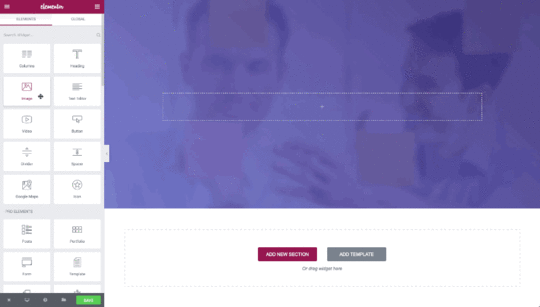
Even the best website builders can struggle with performance issues once you start building complex layouts or long pages – and you’ll likely run into some of these when putting a typical homepage together.
Thankfully, things have improved a lot over the past couple of years and the leading providers have had time to refine their products. So the best builders on the market are now able to offer decent experience, even if you are still going to run into occasional glitches and slowdowns.
Templates
The whole point of a website builder is to save time and money on development. So, while you want a good builder that makes it easy to create pages from scratch, a good library is a massive asset when you want to put relatively generic pages together.
Templates are even more important if you’re not too comfortable with layout design and the other fundamentals. Obviously, it’s helpful to get to grips with design principles if you’re going to use a website builder but it’s always good to have a solid library of templates to fall back on or even try to replicate and learn from while you’re getting up to pace.
Once again, the quality of templates varies a lot so pay close attention to what you’re getting if this is important to you.
Custom templates & elements
One of the most important features of a website builder is the ability to save your custom templates for later use. Let’s say you’ve put together a product page, for example. You want to be able to save this as a custom template so you can use this every time you need to add a new product page, rather than start from scratch.
Aside from full-page templates, you also want to be able to create and save custom elements and page sections – like hero sections and CTAs that you can insert wherever you need them.
Not only are you going to save time but you can develop a style and guarantee consistency across every page.
Available elements
Each website builder has a limited number of elements that you’re able to use on your pages. Elements include text, images and buttons but builders also often have dedicated elements for CTAs, forms, testimonials and larger elements that are commonly used on pages.
[image error]
These larger elements can save you a lot of time, allowing you to insert and edit a testimonial, for example, rather than manually putting the text, images and links together in a layout that works and then saving it for reuse.
So it’s worth looking at the available elements on each builder and comparing them with alternative options to get a good idea of what’s on offer.
Customisability
Customisation is important with any website builder but it’s important to understand that it’s always a compromise. The more customisable your builder is, the more complex it’s going to be as a piece of software and the stronger your web design skills need to be.
So you really have to know what you want from a website builder.
If you just want a tool that makes it fast and easy to create pages without needing a great deal of design knowledge, then you probably don’t want a great deal of customisation adding unnecessary complexity.
On the other hand, if you’ve got the design skills but simply don’t want to do the coding side of things, then you’re going to want as many customisation options as possible.
Website performance
Once your website is built and live, the only thing that really matters is how well it performs for users. Loading times, SEO-friendly code, conversion rates and KPIs become the long-term priority and the code your website builder generates could become an issue.
Page speed is the most common issue you’ll come across, due to the excess code builders often generate and the animations that are often built-in by default.
A good hosting package goes a long way in speeding up performance and you’ll want to pay attention to speed optimisation best practices.
That said, it always helps to have the best possible starting point with a website builder that generates relatively clean code and performance well in the wild. So check reviews from real customers, search forums for speed issues and what kind of resolutions might be found.
Also, make sure you’re checking up-to-date reviews and info because the best website builders are improving all the time.
Which website builders are we looking at in this article?
The overall quality of website builders varies immensely and even the best of them have a lot of pros and cons to consider. Which makes it difficult to recommend more than a handful of them and I’ve only managed to come up with eleven that I feel deserve a place in this article.
Here they are:
Divi: The best WordPress theme website builder.Elementor: The WordPress plugin that turns any theme into a website builder.Shopify vs BigCommerce: The top two platforms for eCommerce websites.Squarespace: The fast, easy website builder for creatives.MemberPress: The WordPress plugins for building membership websites.Voog: The best website builder designed for creating multilingual sites.Jimdo: An easy, affordable builder for single-person and micro-businesses.Duda: The best builder for designers and agencies that want to quickly create sites for clients.Launchaco: The easiest, affordable option for startups that want to create a website today.Carrd: The simple, responsive single-page website builder.
As you can see, I’ve grouped Shopify and BigCommerce into a a single recommendation and I’ll write that section and a head-to-head comparison because they’re suited to different types of eCommerce websites.
Something else worth noting is that I’m specifying why I recommend each builder and who I recommend them for. None of these builders are perfect but they all have strengths that make them solid options for certain use cases and I’ll be specifying these with each tool we look at in this article.
You might also notice some big names are missing from that list, such as Wix and some of the other platforms that advertise themselves quite aggressively.
I’m going to include a section about Wix and why it doesn’t make my list of recommendations towards the end of this article. On a similar note, there’s a common trend I would like to point out that might help you while choosing a website builder – and explain some of the other obvious commissions on this list.
Generally speaking, none of the website builder tools/services that heavily advertise themselves deliver a product that I would recommend. With the exception of Squarespace and possibly Shopify (both of which promote themselves to relevant niches), all of the builders I’m comfortable with recommending are pretty relaxed on advertising and focus their efforts on merit-based content marketing.
I’ve never seen a TV advert for Divi, let’s put it that way.
I’m not saying that software providers shouldn’t advertise on these channels or anything; it just so happens that the aggressive advertisers don’t really deliver, as far as I’m concerned. To me, it feels like they have to compensate for certain shortcomings with advertising dollars.
Any, let’s focus our attention on the website builders I would recommend.
#1: Divi – The best WordPress theme website builder
WordPress is the world’s most popular content management platform (CMS) and it’s an excellent tool for businesses that take content marketing seriously. The platform also transformed web design with its open-source library of themes, which have progressively offered greater customisation over the years.
Now, you have a suite of themes that come with built-in website builders and Divi is by far the best of these that I’ve tried.

Pros:
Excellent drag-and-drop editorInline text editingDecent range of templatesEasy to create pages from scratchSolid level of customisationGlobal elementsDivi Builder also works with other themesExcellent valueOne-time payment option
Cons:
ShortcodesBuilder suffers from glitches on complex pages
Divi has improved a lot since version 1.0 and by the third generation, this became a serious tool that designers and agencies can take seriously. Now, we’re on the fourth generation of Divi and the company has worked out most of the kinks it realistically can.
The website builder itself is up there with the best experiences you’ll find and the level of customisability is equally impressive. Divi is built with web designers and agencies in mind so the platform aims to be something professionals can use to build websites for their clients.
Best of all, you can use Divi’s website builder on basically any modern WordPress theme or use the built-in templates and elements to create pages your own way. Likewise, if you want a builder to create pages from scratch, this would be my top recommendation.
The only real issue I have with Divi is that it’s built around shortcodes that make it difficult to export your site or keep your designs if you move to another platform. Aside from that, the builder can get a little glitchy with complex or longer pages but this is pretty much true of any builder.
#2: Elementor – The WordPress plugin that turns any theme into a website builder
While Divi is a WordPress theme, Elementor is a plugin that turns any modern theme into a website builder. that said, there are a few themes that are generally accepted as working best with Elementor – namely Astra, Generate Press and Ocean WP.

Pros:
Solid front-end page editorWorks with most modern themesWorks very well with WooCommerce and other pluginsHuge library of elementsExtensive customisabilityBuilt-in personalisation featuresPopup builder
Cons:
Dated interfaceInconsistency between editor and live websiteUninspiring templates and blocksSupport could be betterQuite expensive
One key benefit of Elementor is that it works well with WooCommerce, which is important if you’re using WordPress for eCommerce. In fact, Elementor plays nicely with most major WordPress plugins so you can make the most of that library without worrying about conflicts too much.
As for the builder, the interface is kind of dated but it works pretty well. My biggest gripe is that you’ll sometimes find the page as it appears in the editor is different from the way it renders live in the browser, which leaves you fine-tuning half blind.
You get quite a lot of freedom in terms of customisability with Elementor but might be disappointed by the quality of the templates and default blocks, which are pretty uninspiring. If you’re happy to customise and put the work in, this might not be a major issue but don’t expect to pluck out templates that are ready to rock.
#3: Shopify vs BigCommerce – The top two platforms for eCommerce websites
If you’re looking for a fully-fledged eCommerce website builder, these are the two best platforms in the business. I’m not going to try and choose between these and recommend only one, though, because they’re both suited to slightly different types of online business.
Instead, I’m going to run through the pros and cons of each to explain what kind of eCommerce store is most suitable for both.

Shopify pros:
Easy to useBrilliant inventory systemExtensive customisabilityExcellent sales features and toolsGood customer support
BigCommerce pros:
Most feature-rich eCommerce solution on the marketScalable system that grows with your businessQuality templatesHighly customisableExcellent built-in SEO toolsReasonably priced for SME retailers
Basically, Shopify is the easier platform to use and it will have you set up with an online store much faster than BigCommerce. The downside of this is that you don’t get as many advanced features and, while BigCommerce is a more complex piece of software it offers the most advanced set of features for eCommerce brands on the market.
Shopify cons:
Switching templates breaks your siteNot very scalableNo built-in currency supportAdditional transaction fees unless you use Shopify PaymentsFeels a little pricey for smaller retailers
BigCommerce cons:
Steep learning curveAdvanced features make platform more difficult to useEditing interface not the most intuitiveNew users might struggle with complex terminology
The main downsides with BigCommerce are the complexity of the software, which comes with a steeper learning curve and simply takes more time to set up the way you want it. Parts of the software aren’t particularly intuitive either and this is most noticeable in the editing interface.
As for Shopify, there are a few key issues that stand out. One thing they still haven’t fixed is the fact that changing templates breaks your site so you’re pretty much locked into the template you start with. There are also some noticeable features missing, such as currency support, and you’re limited to two-tier navigations, which isn’t really suitable for large or complex online stores.
Basically, Shopify is the best option for smaller retailers who want an online store set up quickly and easily. That said, you do have to pay for this convenience and Shopify pricing doesn’t seem particularly affordable for the smallest of retailers.
Those transaction fees for not using Shopify Payments is a kick in the teeth, too.
Larger or more technically-minded retailers will find BigCommerce offers more of the features and tools they need in a single platform and this is one that will continue to meet your needs for quite some time as your business grows.
Don’t get me wrong, Shopify is a quality platform that makes it impressively easy to get an online store up and running quickly. I would just like to see the company ditch those transaction fees and offer a cheaper entry plan for micro-business and entrepreneur retailers.
#4: Squarespace – The fast, easy website builder for creatives
Squarespace is by far the most intuitive website builder I’ve ever use although it’s also one of the most basic. This is the perfect option for creatives such as photographers, graphic designers and individuals selling custom-made clothing or crafts items – that kind of thing.

Pros:
Easy to useBest templates on the marketGreat option for creatives and small online storesExcellent customer supportReasonable pricing on each plan
Cons:
Limited customisationEditor usability issuesNot suitable for large or complex sitesPage speed can be a concern
You really don’t need any web design or development experience to use Squarespace and anyone with relatively basic computer literacy can have a website up and running very quickly. Squarespace does allow you to sell products online but this isn’t a complete eCommerce platform like Shopify or BigCommerce.
Rather, it’s a platform designed for individuals who want to establish a business presence online and it offers up decent blogging features, too.
The templates are top-quality although you don’t have a great deal of freedom to customise – but this is all part of the easy-to-use experience. This is backed up with excellent support from Squarespace’s technical team, which is important considering the company’s target audience.
#5: MemberPress – The WordPress plugins for building membership websites
MemberPress is a WordPress plugin that makes it easy to create membership websites. The plugin allows you to instantly gate your best content and charge users to access it – all from within the WordPress interface.
Pros:
Easily create membership websites on WordPressEasily create pricing pagesCoupon and email campaignsMultiple membership levelsContent drippingSupport for multiple payment processorsEmail autoresponder integrationAffiliate features on priciest planCompatible with most modern themes
Cons:
Dated interfacePricy“Limited time offers” are clearly fake
I should clarify that MemberPress isn’t a page builder and it won’t help you create an entire website from scratch. This is a plugin that will turn your existing theme into a membership website, allowing you to charge a monthly fee for access to your gated content.
With support for Stripe and PayPal, MemberPress integrates with payment solutions so you can accept card payments on your website without any fuss. It also integrates with marketing tools like MailChimp and ActiveCampaign so you can create advanced email marketing strategies to keep your subscribers engaged and upsell your customers.
#6: Voog – The website builder for creating multilingual sites
Voog is a relatively simple website builder and the editor itself feels a little basic but the platform is structured for creating multilingual websites. The software even has 10 different language options and it allows you to deliver content in multiple languages in simple layouts that are designed to maintain consistency after translation.

Pros:
Multilingual websites made easyImpressive localisation featuresSimple, clean templatesEditor is easy to useBuilt-in eCommerce support
Cons:
Limited SEO toolsTemplates all feel quite similarRequires custom code for extensive customisationTransaction fees on cheaper plans
One of the biggest problems you’ll come across with translating content is that text contracts or expands and this breaks up your layouts. Voog’s simple templates are designed using layouts that leave space for text expansion to preserve designs in each language.
You’ll still need to invest in some good translation services but Voog takes the pain out of building the multilingual website structure.
The builder itself is very easy to use but somewhat limited and the templates are all quite similar. Even still, if convenience is your priority, Voog can make the usually-complex task of building a multilingual websites as easy as possible.
#7: Jimdo -An easy, affordable builder for single-person and micro-businesses
The easiest way to describe Jimdo is that it’s a simpler version of Squarespace. It’s designed for single-person and micro-businesses with a plan that allows you to sell a small number of products online – just like Squarespace.

Pros:
Easy to useAffordable plansGood support
Cons:
Editor feels clunkyUninspiring templatesLimited customisation
Jimdo’s software is simpler than Squarespace but feels a little clunky in comparison. The key selling point of Jimdo, though, is that it’s one of the most affordable website builders on the market. The cheaper plans are priced slightly lower than Squarespace but Jimdo limits features less so it feels like you’re getting more for your money – at least on the cheaper plans.
#8: Duda – For designers and agencies who want to create sites for clients
Duda offers a website builder aimed at freelancers, designers and agencies that want to create websites for their clients. This puts it in similar territory as Divi but Duda isn’t going to win that head-to-head battle.
That said, Duda strikes a good balance in offering a simpler platform and builder while providing a good set of templates that allows you to create decent-looking sites with ease. So, if tools like Divi are too complex or bloated with features for your taste, Duda could be a solid alternative.

Pros:
Easy to useClean, simple editorDecent templatesApp store expands functionalityBuilt-in website personalisation
Cons:
A touch expensiveLimited customisationBuilder can be sluggish
Given the more simplistic nature of Duda, I would like to see some lower prices on its plans. Prices start at $14 per month if you pay annually and this already puts you in Divi territory, which offers a lot more for similar money.
#9: Launchaco – The easiest, affordable option for startups
Launchaco is unlike any of the other website builders we’re looking at in this article. Instead of the drag-and-drop interface that most builders offer these days, Launchaco uses a very basic interface that’s more like a multistep form than a website builder.
You start by choosing a name for your startup, select a colour scheme and a font style, and then put your content into a basic template.

Pros:
Easy to useBuild unlimited websitesReasonable pricingFree versionHTTPS includedExcellent for basic startups sites
Cons:
Limited customisationBasic websitesNo templates
You don’t get a lot of room for customisation but this is probably the only website builder in this article that anyone with zero design knowledge could still create a half-decent site with – simply because it takes 99% of the design choices out of the equation for you.
Launchaco also offers a free version but your site will show small ads for Launchaco on this plan. The premium plan costs a reasonable $49.99 per year and this removes the ads while allowing you to creat unlimited websites with free HTTPS encryption and the option to host with your own URL.
For startups on a shoestring budget or entrepreneurs that want to build a series of websites with no fuss whatsoever, Launchaco is an interesting option.
#10: Carrd – The simple, responsive single-page website builder
If you thought website builders couldn’t get any more simplistic than Launchaco, let me introduce you to Carrd. The tool only builds single-page websites so this is one designed for people who basically want an online business card or a single-page site for an app.

Pros:
Easy to useAttractive templatesSolid builderMobile optimisation is very strongFree version available
Cons:
You can only build single-page sitesObviously, limited customisation
Although Carrd is highly limited, the quality of the templates is impressively high and they’re perfectly optimised for cross-device experiences. Thanks to this simplicity, loading times are much faster than sites built using more conventional website builders, too.
Once again, there’s a free version that allows you to build up to three sites and a Pro version that will cost you $19 per year.
Why isn’t Wix recommended in this list?
One thing that’s going to be quite obvious, if you’ve looked at any other website builder list articles, is that Wix hasn’t made it onto our list of recommendations in this article. This might seem strange, considering Wix tends to take the top spot in most lists like these so I feel like I should take a moment to explain the omission.
Actually, there are a bunch of big names I haven’t included in this list and the honest reason is I don’t feel they deserve a place. I mentioned earlier that, as a general rule/coincidence, the big names that advertise heavily aren’t particularly impressive website builders.
In fairness, Wix has improved a lot since I first used it, more than half a decade ago. It was an absolute horror show. Things are much better in 2020 but it still doesn’t live up to the hype I find in reviews – most of which seem to be affiliate articles.
I’m not saying Wix is a particularly bad choice in 2020 and I’m glad the company has fixed the biggest issues related to Flash, URL structure and nightmarishly bloated code that used to be so problematic back in the day. There are still issues that remain, though, such as poor loading times and weak integration with third-party analytics platforms – not to mention some odd integration issues with Google Ads tracking codes.
The themes are also poor but Wix’s builder is very good at allowing you to build pages from scratch using its “blank canvas” editor. So, if you want complete freedom, this builder could be a satisfying choice, as long as you’re aware of the issues it comes with.

My biggest concern in 2020 are the reviews left by Wix customers themselves. Considering how easy it is to game platforms like Trustpilot and fake a profile of high scores, you’ve got to be worried by a score of 1.5 from more than 1,750 reviews.
Let’s at least credit Wix for not gaming Trustpilot’s system, though. Credit where it’s due.
Which is the right website builder for you?
In all honesty, website builders still have a lot of progress to make and there aren’t that many I could comfortably recommend for business purposes. There’s no way I could have written an article like this with dozens of builders because there simply aren’t enough of them that are good enough to use for commercial websites.
The benefit of this is that choosing a website builder is relatively easy, as long as you understand the pros and cons of using one to begin with.
Each of the builders we’ve looked at in this article are suited to different types of businesses and I don’t feel there are any builders missing from this list that genuinely deserve to be there – maybe you can tell me otherwise in the comments.
If you’re looking for an all-purpose website builder for WordPress, Divi is the obvious option to try. likewise, if you’re a designer looking to build sites for clients, Divi is the best all-round option. Creatives like photographers and interior designers will want to go with Squarespace and eCommerce brands are looking at either Shopify or BigCommerce.
The post Best website builders appeared first on Venture Harbour.
June 15, 2020
10 Lead Generation Trends to Watch in 2020
If you look back at the previous decade in marketing, you can get an idea of how quickly things are moving these days. Trends have come and gone, some of them have transformed the way lead generation works (eg: automation) and others have flopped harder than Google Glass (remember the beacon revolution?).
In fact, my favourite thing about trends is how many of them are doomed to fail and I think I’ve developed a pretty good eye for spotting the ones that are going to stick around – although, I’m not sure it’s all that difficult.
So, in this article, I’m looking at lead generation trends that actually matter in 2020 and I promise there’s no mention of this being the year of voice search, VR marketing or chatbots (again).
Which lead generation trends matter in 2020?
The thing with trends is they come and go and the lifecycle of these things seems to be getting shorter every year. I count this as something positive because bogus trends are called out sooner and the hype dies down faster.
What we’re left with is lead generation strategies that are actually going to make a positive impact on the volume and quality of leads you’re able to capture.
Here are ten good examples:
Account-based marketing is the new normal for B2B brands.Hyper-personalisation might sound like a buzzword but I’ll explain why this is the real deal.On-page lead qualification.Automated marketing and sales integration.Community-based marketing.Multimedia thought leadership.Featured snippets are where the SEO battles are won and lost.Page experience as a ranking signal makes UX all the more important.Making GDPR compliance usable.Maximising customer lifetime value.
My basic formula for assessing marketing trends is to look at the technology currently available, how users actually used said technology and what problems this combination could potentially solve.
For example, if people aren’t using voice search to buy products in significant numbers, there’s no way for tech giants like Google to successfully implement ads and users can’t somehow view images or compare prices, voice search clearly isn’t ready to change the way people shop online.
So let’s move on to some lead generation trends that do matter in 2020.
#1: Account-based marketing is the new normal for B2B brands
In the 2019 ABM Benchmark Survey Report from Demand Gen Report, 94% of B2B marketers questioned in the survey said they’re engaged in account-based marketing, up from 47% in the 2016 version of the same report.
Half of respondents said their AMB strategies have been in place for more than a year while another 25% have been engaged in ABM between 6-12 months.

Interestingly, 46% of those asked in the survey said they’re confident they have identified their target customer profiles while admitting there’s still room for improvement, particularly in terms of coverage.
These stats tell us that account-based marketing is the new normal for B2B brands. There’s been a lot of talk about this over the past few years but AMB is a genuine growth tactic – one that’s not going to fade away like dozens of buzzwords that crop up every year.
So what are B2B brands actually buying into with account-based marketing?
According to HubSpot, “Account-based Marketing (ABM) is a focused growth strategy in which Marketing and Sales collaborate to create personalised buying experiences for a mutually-identified set of high-value accounts.”
The key phrases in that definition are growth, marketing and sales, personalised experiences and high-value accounts.
AMB exists because B2B businesses have a long history of casting wide nets with their marketing efforts, launching campaigns with broad, anonymous target audiences and then simply passing leads over to sales teams.
There are a number of problems with this:
Lead quality varies greatlyCustomer value also varies (many simply aren’t worth pursuing)Your marketing and sales goals are misalignedYour sales team has to work incredibly hard to close dealsYou invest a lot in leads that never materialiseSome of the leads that do materialise don’t generate enough ROI
With account-based marketing, you define a list of target customers and profiles, based on the value they will add to your business. You then focus your resources on capturing these prospects as leads, knowing that every success will achieve your ROI targets.
By targeting high-value prospects, your marketing and sales teams are both working towards the same goal: securing customers that will generate the most profit for your business. You’re no longer running campaigns that aim to generate the highest amount of leads; you’re running campaigns to generate the most profitable leads.
Best of all, you’ve already qualified these leads so your sales team only puts resources into potential customers that are truly worth the investment.
#2: Hyper-personalisation drives customer experiences
Crossing over into B2C marketing for a moment, one of the most significant trends making traction right now is hyper-personalisation. While this is a relatively new trend for consumer-focused brands, it’s a strategy that B2B businesses should take a serious look at, too, especially with the greater emphasis on personalisation that comes with account-based marketing.
In fact, towards the end of 2019, I wrote a previous article looking at B2C hyper-personalisation examples that B2B brands should learn from.
 Source: Ascend2
Source: Ascend2Take a look at the top priorities marketers cite for their hyper-personalisation strategies and you’ll perfectly align with the concepts of account-based marketing, customer experience (CX) and effective lead nurturing.

Examples of B2C hyper-personalisation range from the likes of Stitch Fix, which delivers personalised clothing and outfit packages to customers based on their style preferences, to software platforms like Spotify that not only offers personal recommendations but also encourages deep account customisation to keep users locked in.

Now, let me take a moment to acknowledge how much hype there is around personalisation. This is a buzzword concept marketers love talking about without actually providing any useful examples, data, implementations or strategies.
When I first heard the phrase hyper-personalisation I actually laughed out loud (genuine lols) because it just sounds like a poor attempt of making personalisation sound new and exciting.
I mean it’s even got the word “hype” in it, for crying out loud.
So I’m not a fan of the phrase itself but, when you analyse what the strategy actually involves, things start to make a lot of sense.
Last year, a report from SmarterHQ revealed that 72% of consumers now only engage with personalised marketing messages that are tailored to their interests. The same report also found that 86% of consumers are concerned about their data privacy.
Previous studies have also found that, despite security concerns, people are willing to exchange their personal data for personalised offers. In one study, 90% of respondents said they were willing to share their behavioural data if it results in cheaper prices and easier shopping experiences.
The message is clear: people want personalisation and they’re willing to hand over their data in exchange for it – as long as the reward and experience justify it.
Hyper-personalisation provides a truly individual experience that improves as users provide more of their behavioural data. The result is more relevant clothing recommendations, suggested playlists, movie recommendations and purchase advice.
 Marketingautomationinsider.com provides personalised software recommendations based on the information business owners provide.
Marketingautomationinsider.com provides personalised software recommendations based on the information business owners provide.In the case of a brand like Stitch Fix, users receive a 100% personalised experience and they understand all of the data they submit contributes to improved experiences. There’s no issue here with data privacy issues because the entire business model revolves around data exchange and people uncomfortable with this would never sign up in the first place.
Software brands can learn a lot from the likes of Spotify, too, which encourages heavy account customisation, to the point where it becomes difficult to imagine leaving. The thought of losing all those playlists you’ve created, albums you’ve saved and artists you’ve followed makes $9.99 feel like a measly fee.
In contrast, it’s easy to ditch the Netflix subscription because you haven’t invested hours upon hours into customising the platform. You lose nothing by hitting the pause button or cancelling your subscription entirely.
SaaS and software companies, take note.
#3: On-page lead qualification
Going back to a concept we touched on in this first section, marketing strategies always generate a percentage of “leads” that don’t have any value to your business. There are all kinds of reasons you might end up with unwanted prospects on your lists, for example:
They don’t match any of your target buyer personasThey don’t live in a country your business operates in.They don’t have the authority to make purchase decisions.They won’t spend enough to generate a reasonable ROI.They were never interested in buying from you in the first place – eg: someone who downloads your content for research purposes only.
The list could go on. It all depends on what you require from a lead for it to be worth pursuing.
Lead qualification is the process of vetting prospects to determine which ones deserve a place on your list of leads. I’ve discussed this topic in detail in previous blog posts but the point I want to make here is that effective lead qualification can be tricky.
Manually qualifying leads is unworkable and even automated solutions rely on collecting enough data to make informed decisions. Capturing this data is a challenge and you have to find the right balance between positive UX and data capture through your lead generation strategies.
One solution is to create a friction-free signup process and push leads for more information after they’ve signed up. The problem is, this relies on users actually providing the follow-up data you need before you can determine whether they’re worth your time and effort.
The other option is to forget about friction and demand the data you need upon signup, knowing that some prospects will refuse to sign up as a result.
Luckily, there is a third option that allows you to capture the data you need for qualifying leads while maintaining a positive user experience.

We use Leadformly to create multi-step forms that capture user information while prospects sign up and send this data to our CRM platform (ActiveCampaign), which automatically qualifies leads, as soon as they hit the submit button.
Our forms use a technology called conditional logic, which filters out irrelevant questions based on the information users provide. So users only answer see the questions that matter to them and we’re able to ask all of the questions we need without hurting UX.
We also reduce typing load with image buttons and a range of other techniques to reduce negative friction but the key point here is lead qualification.
This implementation allows us to automatically qualify leads on our website so our lists are filled with high-value leads and nothing else.
#4: Automated marketing and sales integration
Going back to the 2019 ABM Benchmark Survey Report we looked at earlier, respondents say their biggest challenge with account-based marketing is aligning their marketing and sales efforts.
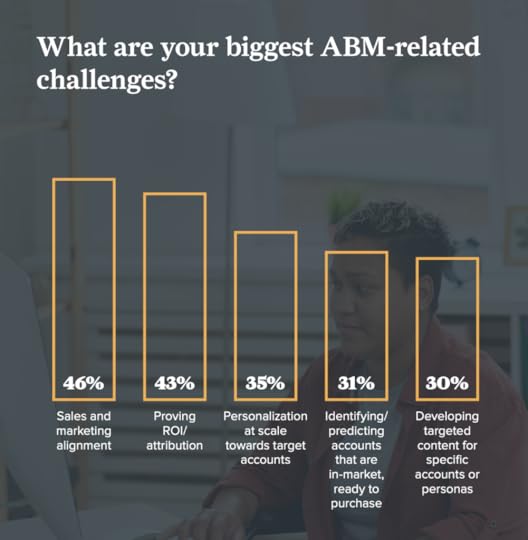
Of course, this challenge doesn’t only affect account-based marketing, either. Any company with dedicated marketing and sales teams faces this challenge and we’ve already addressed a number of the difficulties this poses.
One benefit of account-based marketing is that it forces you to align marketing and sales (as they should be) but many companies simply never address their mismatched marketing and sales efforts.
This means your marketing strategies are going to generate a higher volume of leads that never materialise and your sales team is going to spend significantly more time trying to close deals.
First, you’re going to need a software system that allows you to integrate your marketing and sales processes. This means a customer relationship management (CMS) system with integrated email marketing, sales and marketing automation.
This automation will bring your marketing and sales efforts together.
Take a look at our in-depth guide to the best CRM platforms for every business type to find the right platform for your business.
In the last section, we looked at how you can use Leadformly to qualify leads as they complete your forms by feeding this data into a CRM platform like ActiveCampaign which will automatically viable leads to relevant lists for your sales team – no manual action is needed at all.

This means your sales team only receives leads that have genuine potential, which means less time wasted on prospects that will never convert or simply aren’t worthwhile. As you can see from the sample workflow above, you can also automate lead statuses for sales reps, send instant and timed email responses and send notifications to sales teams so they’re always up-to-date.
One of the biggest challenges with aligning marketing and sales processes is knowing where one ends and the other begins. Most of your leads aren’t ready to buy at the first interactions and require some nurturing until they’re ready to make the purchase and you’re confident the purchase is worth enough to pursue.
At this point, your sales team needs to know when to jump in at the right moment and take over.
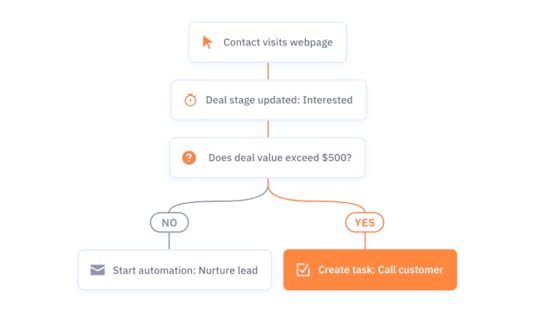
With the right workflow, you can automate this process, too – as illustrated above. So when prospects complete an action that signifies purchase intent, the status of the lead/deal is updated automatically. You can also apply qualifiers to ensure the deal is worth a certain amount before your sales team is notified and told to step in.
If the deal isn’t worth enough yet, your automated lead nurturing campaigns will continue to work the lead until the deal hits your value target.
#5: Community marketing
Community marketing as a concept has been around for years but few brands have really taken the lead with this strategy. Sure, you could argue LinkedIn, Quora and Facebook groups are forms of community marketing but the brand presence is all-too-often overshadowed by discussion.
According to AdRoll, “Community marketing is a brand growth strategy centred around bringing customers together over a topic that is aligned with, or directly related to, a brand in an engaging and non-intrusive way that puts customers first.”
So how do implement a community marketing strategy that puts customers first while still putting the brand in a position of influence?
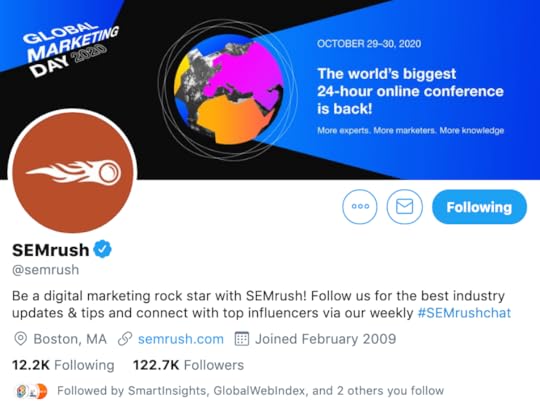
SEMrush is currently my favourite example of a company that nails community marketing. This is noticeably the most active account I follow on Twitter and it seems like the company engages with every tweet, retweet and mention of its brand.
It doesn’t matter how influential you are in the industry or how many followers you’ve got, SEMrush will engage with you.
 This tweet mentioning SEMrush has just two likes – one of which is from SEMrush itself.
This tweet mentioning SEMrush has just two likes – one of which is from SEMrush itself.Now, a lot of these tweets are superficial mentions of the company’s software or its content and I’m sure these likes are automated. But, the point is, SEMrush engages with people and this encourages people to interact with its brand. After all, people like me who follow SEMrush are going to see these liked tweets and everybody benefits from the exposure.
SEMrush has built its own engagement community on Twitter and the reach is impressive.

SEMrush feeds this reach back into its community and you can see the results when it holds one of its weekly #SEMrushchat sessions on Twitter. Once a week, my feed is filled with people answering the questions posed by SEMrush with experts and community members weighing in with their advice and experiences.
The community clearly comes first and SEMrush works hard to engage with every member but it also manages to keep its brand centre stage without ever pushing its product.
Everyone knows what its software platform has to offer and the company simply keeps the product at the forefront of everyone’s mind while providing genuine advice and insights for its community.
#6: Multimedia thought leadership
According to the 2020 B2B Thought Leadership Impact Study, published by Edelman and LinkedIn, 89% of business decision-makers say thought leadership is effective at improving their perception of a brand.

To add a little more context, 90% of respondents said thought leadership increases their respect for organisations while 89% said their perception of the brand’s capabilities increase and 89% also said they trust brands more that produce convincing thought leadership content.
So thought leadership is an important strategy in 2020 but publishing content on LinkedIn isn’t enough to demonstrate your authority.
Thought leadership in 2020 is a multimedia strategy and you have to think bigger than LinkedIn, SlideShare and infographics (these are all still viable options, though).

Some of the most impressive thought leadership content right now is being published on YouTube where people like Bryan Elliot (Behind the Brand) and Marie Forleo have built their own personal communities.
Major names like Google and TED have their own YouTube channels for sharing insights and thought leadership content, too.

Podcasts are gaining a lot of traction right now, too, with a 51% increase in listeners since 2019 in the US alone.
It’s important to understand the benefits and limits of each content type, too, and diversify your efforts. For example, videos are great for times where you want to sit down and concentrate on something but they’re not ideal when you’re on the move and listening to a podcast can be more suitable.
At the same time, there are moments where simply reading an article is more useful or information is easier to scan, reread and take notes from. So consider the role your content aims to play and which format is most useful to your audience.
#7: Featured snippets are where the SEO battles are won and lost
There’s been a lot of talk in recent years about Google killing organic search by placing more ads in the SERPs and pushing organic links further down the page with products like Google Shopping, Google Flights, local listings and all kinds of other stuff.
In 2018, Smart Insights called it the incredible shrinking organic SERPs and last year WordStream published data showing a 5.5% overall reduction in the presence of organic listings.
To make matters worse, Moz data shows that featured snippets display for 23% of all searches – a 165% increase since 2016. Which means almost a quarter of all results pages are dominated by a single-answer result.
Add this to all the searches that show ads and other Google products above organic results and you can see that featured snippets are where SEO lead generation is won and lost in 2020.

Now, the problem with featured snippets is there’s only space for one result and everyone’s fighting for it. So competition is intense and there are no guarantees you’re going to stay in the top spot, even once you get there.
The first thing you need to do is create a list of featured snippets that have business potential because searches for the weather in London and who the first British prime minister was probably aren’t important to you.
Start by drawing up a list of informational queries related to your target keywords – for example:
“conversion rate optimisation”“best conversion rate optimisation tools”“conversion rate optimisation techniques”“conversion rate optimisation best practices”“what is conversion rate optimisation”
The results page for each of those queries shows a featured snippet and all but one of them includes a “People also ask” section displaying related queries.

Click on any query in the “People also ask” section and you’ll see a preview of the featured snippet it generates. You’ll also notice that more related questions have been added to the list and they keep coming every time you click on another query.
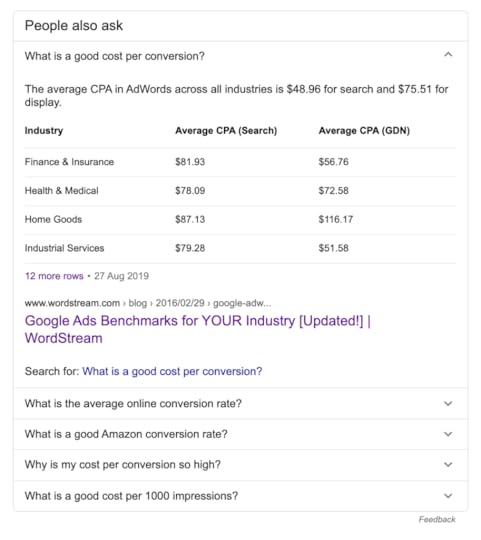
You can also click on the “Search for” link at the bottom of any query you expand to click through to the results page for that query and start the whole process again.
This gives you an infinite featured snippet research tool that reveals opportunity after opportunity until you can’t stand looking anymore. Better yet, you can use a tool like Screaming Frog to scrape the data and automate this huge keyword research process.
Once you’ve got your list of opportunities, you can start to prioritise them in terms of search volumes, CTRs and other KPIs to calculate the value of each featured snippet.
Finally, you have the task of producing content that’s going to knock the current occupier out of your target featured snippets and make it difficult for anyone to replace you in the future. Some featured snippets are harder to get than others so it’s worth finding a balance between the highest-value opportunities and the most achievable.
#8: Page experience makes UX all the more important
In May 2020, Google announced a new ranking signal called “page experience” that will roll out at some point in 2021. The algorithm update was delayed due to the coronavirus outbreak and this means businesses have more time to optimise their websites.
Page experience is a ranking signal in Google’s search algorithm that combines a number of pre-existing signals related to different UX factors with some recently-introduced signals called Core Web Vitals.
Basically, after launching Core Web Vitals in early May, Google has a lot of UX-related signals to consider and page experience will condense them into one signal, allowing its algorithm to calculate a single page experience score for each web page.

The pre-existing signals that will be included in page experience are:
Mobile-friendlinessSafe browsingHTTPsInterstitials/popups
In 2018, Google also introduced a page speed signal but this is being incorporated into Core Web Vitals that includes three key factors:
Loading times: Google sets the benchmark of 2.5 seconds for the largest element in the viewport to fully load, using a new measurement standard called Largest Contentful Paint (LCP).Interactivity: How quickly interactive elements respond to user actions and Google wants to see responses of 100ms or under, measured using First Input Delay (FID).Visual stability: This determines whether elements on the page move after loading, causing instability and a range of UX issues, measured using Cumulative Layout Shift (CLS).

As you can see, there are some technical terms thrown in there and page experience marks Google’s most technical and detailed approach to grading the usability of web pages.
The search giant has confirmed page experience will be one of the most important signals in its algorithm and will often serve as the tie breaker when content quality is deemed to be equal. So this is a big deal and brands need to make sure they deliver a positive experience on every page – especially if you’re trying to win those featured snippet battles.
#9: Making GDPR compliance usable
GDPR has been a somewhat unwelcome trend since the regulations were introduced in May 2018. Personally, I welcome privacy regulations but the guidelines themselves and how they’ve been implemented is an absolute mess.
Every UX guideline tells us that intrusive popups are bad for user experience and Google even penalises brands for blocking content or the majority of the screen with interstitials. Yet every website serving users in Europe now blasts visitors with consent popups that basically make the entire web unusable – especially if you actually want to decline any of the cookies or tracking that GDPR is supposed to make easy.
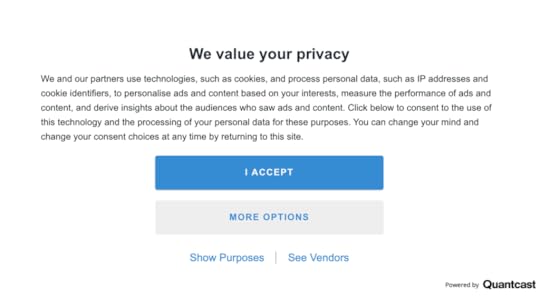
Now, it feels like every website I visit wants to tell me how much they value my privacy (I mean, why even lie about it?) and force me to opt in/out before actually getting to the content I’ve clicked through to read.
Of course, I can click More Options to manually opt in/out of each data tracking method used by said website and sometimes I can even click a Reject All button and then click Save & Exit to finally access the content.
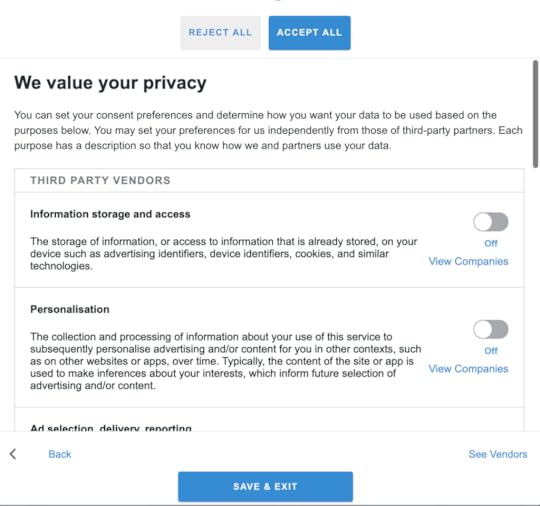
In many cases, you can’t opt out of “essential” cookies anyway and plenty of websites still prevent you from accessing content or redirect you to the homepage if you opt out – who ever came up with that idea?
But the worst part of most GDPR implementations is that you have to go through this process on almost every site you visit and repeat the same process every time you visit the same site again or accidentally reload the page.
That’s what you get for being a data scrooge.
Some brands are at least making an effort to design consent processes that minimise the negative effect on user experience and the first thing you can do is humanise the process. Don’t use some generic GDPR consent template that lies about valuing privacy and then tramples all over them.
 RSPB thanks visitors for their support, reminds them of the shared goal they have and then asks them to choose communication channels “on your terms”.
RSPB thanks visitors for their support, reminds them of the shared goal they have and then asks them to choose communication channels “on your terms”.Be genuine and show visitors that you’re trying to address the very real issue of data privacy in the best way you can.
Wherever possible, avoid blocking access to content, even if this means delaying data collection until consent is given. And, remember, you only need consent for personal data that can be attributed to individuals, such as addresses, names, email addresses and tracking IDs.
You don’t need consent for broad audience tracking (general location, referral source, etc.) or basic analytics like time spent on page, pages visited, etc – as long as there’s no individual identification or tracking ID created.
Now, the water does get a little murky once you start using third-party tools like Google Analytics (and a lot depends on how you set them up) but it is possible to run basic analytics without blocking content and then asking for consent with a banner, for example.
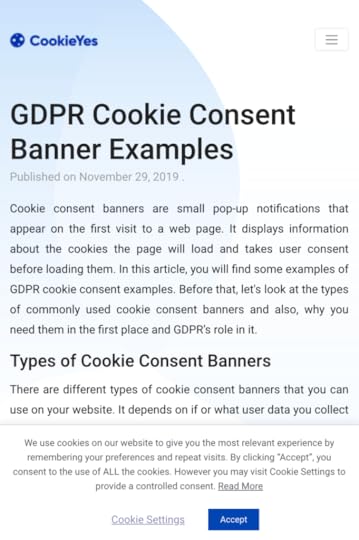 CookieYes allows users to access content and uses a small banner to allow opt in/out of all cookies.
CookieYes allows users to access content and uses a small banner to allow opt in/out of all cookies.Don’t let me or any other glorified blog writer tell you about the legal specifics of GDPR compliance, though – protect yourself with real legal advice. And don’t think simply signing up to GDPR consent software tools guarantees legal safety, either.
The point is, the current implementation of consent really isn’t working and brands are increasingly turning to alternatives and custom-built consent forms. And let’s be clear: you can generate leads from traffic that bounces because your consent forms drive them away.
#10: Maximising customer lifetime value
One problem with lead generation as a marketing strategy is that it suggests that attracting new prospects is the top priority – or, at least, this seems to be how most businesses interpret it.
And, if you rely on a marketing funnel that looks like this, lead generation ends up being a linear process that ends once a new prospect is brought on board.
 Source
Source
However, we know the customer journey isn’t linear and, as good as the marketing funnel principle is for visualising the different stages of the buying process, it doesn’t represent the cyclical customer journey brands need to aim for.
You don’t give up on leads once they make a purchase; you continue to nurture relationships and encourage them to buy from you again in the future.

There are plenty of alternatives to the funnel that try to visualise the customer cycle but, to be honest, none of them have ever matched the funnel in terms of mapping out the consumer journey – as long as you understand that customers go back into the funnel again after making the purchase.
 Source
Source
As long as you understand this journey, you have everything you need to run customer retention campaigns through email marketing and other channels to keep your customers engaged, build loyalty and welcome them back to make further purchases when the time is right.
If you want more insights into how the entire funnel works, we’ve got a comprehensive analysis in our guide to marketing funnel strategies.
Need some email marketing ideas? Then, check out these 7 B2B email marketing strategies for customer retention.
Throw in some quality customer service with your customer retention efforts and you shouldn’t have any real problems with maximising the lifetime value of every customer. Which means increased ROI on every lead you convert and higher profit margins all round.
Not only that but happy customers will help you generate new leads when they leave positive reviews, engage with you on social media, recommend you to their friends and industry sources cite you as one of the best brands in your niche.
Bringing it all together in 2020
With the start of a new decade, it’s time to step up to the mark with the core essentials. Things like mobile optimisation, loading times and UX-friendly consent aren’t concepts brands can continue to coax their way through.
Google is getting serious about user experience as a major ranking factor, users are demanding positive experiences and brands are having to work harder to generate leads across a growing list of channels and multimedia formats.
Brands need to start bringing this all together in 2020 or they’ll get left behind before we’re even a third of the way through this next decade. The good news is that a lot of the trends we’ve looked at in this article are kind of fine-tuning key essentials.
I mean, the iPhone is 13 years old this year, for crying out loud. If brands are still struggling with fundamentals like mobile loading times and conversion rates, what have they been doing for the past decade or so?
For the next ten years, the focus is on getting the details right. If you’re 90% there with UX on your website, now is the time to push hard and get as close to 100% as you possibly can. If your SEO and social media strategies have matured, now is the time to branch out into other multimedia channels – like self-hosted video, podcasts or streaming.
If your marketing funnel campaigns are nurturing leads across the buying journey, now is the time to start maximising repeat purchases and customer lifetime value. This is the year to start becoming the brand you want to be for the next decade or more.
The post 10 Lead Generation Trends to Watch in 2020 appeared first on Venture Harbour.
May 28, 2020
30 Best Chrome Extensions for Productivity in 2020
Chrome is the world’s most popular web browser, powering almost 70% of internet sessions, according to data from StatCounter (February 2020).
One of the biggest strengths of Google’s browser is its extensive library of extensions that allow you to add extra functionality and make the web a more powerful tool.
In this article, we’re looking at some of the best Chrome extensions for productivity so you can complete a whole bunch of tasks without leaving the browser.
Which tools are we looking at in this article?
In this article, we’ve got 30 of the best chrome extensions that will help you boost your productivity. And, as this is a fairly long list to scroll through, I’m breaking these extensions up into the following four categories.
Improving focus:
Serene: Combine dozens of productivity tools using a single platform.Rescue Time: Block websites and apps that are getting in the way of your workflow.News Feed Eradicator: Block your Facebook News Feed.Todobook: Replace your Facebook News Feed with a Todo list. Forest: Gamify productivity by growing digital trees every time you complete a task.TimeWarp: Block websites with redirects, quotes or timers.Noisli: Play
Task management:
Todoist: Create and manage tasks in-browser.
Win the Day: Set goals, track habits and use focus tools in Chrome.
Any.do Extension: Manage tasks as you browse the web.
ClickUp: Five productivity features rolled into one extension.
Toggl Button: Integrate Toggl with Chrome and activate in-browser.
TrackingTime: Manage projects, track working times and measure productivity.
Clockify: Track time from anywhere on the web with one click.
Content creation/planning:
Pocket: Save web pages for viewing later with a single click.
Evernote Web Clipper: Clip, annotate, highlight and store parts of a webpage.
Grammarly: Automatic spelling and grammar corrections/suggestions.
Airstory: Capture text and images from web pages to use as research or sources for your own content.
Diigo Web Collector: Bookmark pages, capture text, screenshot and annotate content.
Just Read Premium: Turn web pages into text-only documents with a single click.
Google Dictionary: Instant definitions for words you highlight.
Panda 5: Replace the new tab page with all your favourite websites.
Save to Google Drive: Does exactly what it says.
Pixlr Editor: A free, in-browser alternative to Photoshop.
Faster browsing:
OneTab: Save open tabs into a list for later to save memory.
Adblock Plus: Block obtrusive ads.
The Great Suspender: Suspend open tabs after a set period of time to save memory.
LastPass: A free password manager extension.
Pushbullet: Connect all of your devices and manage messages inside Chrome.
Chrome Remote Desktop: Access other computers and allow others to access your machine securely.
Some of the extensions listed in this article are standalone add-ons and most of these are completely free. Others integrate third-party apps with Chrome and you’ll have to pay for the third-party app for the extension to function.
All of this will be stated as we look at each extension.
Improve your focus with these Chrome extensions
First up, we’ve got some of the best Chrome extensions that will help you improve your focus and get more done in the working day.
#1: Serene
Serene is designed specifically for remote teams that combines some of the most proven productivity features into a single tool – all of which are a click away with the official Chrome extension.
You can block distracting websites/apps, plan your daily tasks, work in short power sessions and automatically silence your phone during focus sessions.
Serene aims to give you all the tools you need to improve focus, increase productivity and get more done with a single piece of software.
#2: RescueTime
RescueTime is a lot like Serene’s website and app blocker feature that stops you accessing distractions like Facebook and emails that interrupt your workflow.

RescueTime’s extension means you can activate the tool with a single click and update your block list form within the Chrome browser.
One thing that sets RescueTime apart is that it tracks your behaviour and scores your productivity. This data is presented in reports, which you can use to see where your productivity is suffering and put fixes in place – a great feature, as long as you’re happy with the app tracking your actions.
#3: News Feed Eradicator
The News Feed Eradicator plugin is a simple tool that blocks the News Feed in Facebook and replaces it with an inspirational quote.

You can still access the social network and use key functionality, such as sending messages or searching for contacts – something that can be important for many remote workers (journalists, for example).
But you won’t find yourself getting lost in your News Feed for hours when you should be replying to that work message instead.
#4: Todobook
Todobook is a lot like the News Feed Eradicator in concept, except it replaces your Facebook News Feed with a to-do list.

Once again, you keep all of the core functionality of Facebook but you won’t get stuck looking at your friends’ holiday pictures and wondering why everyone else seems so satisfied with their lives (they’re not anyway).
#5: Forest
Forest is unlike any other productivity app you’ll come across. Instead of blocking access to your most distracting websites, it encourages you to choose to stay away from them.

Every time you plant a seed in Forest, a digital tree starts to grow over the next 30 minutes. If you resist the urge to visit the websites on your blacklist, your tree will thrive; if you give in to the temptation, your tree will wither.
The more you avoid the websites on your list, the larger your digital forest will grow.
#6: Timewarp
Timewarp is another website blocker extension for Chrome and it uses a concept called wormholes to restrict your access.
There are three types of “wormholes” you can create using Timewarp:
Redirect: Takes you to a more productive site which you specify. Quote: Shows your most motivational quote. Timer: Displays the time you’ve spent on the site today.
When you try to access any of the sites on your lists, you’ll be kindly reminded that there are more important things to be getting on with.
#7: Noilsi
Noisli allows you to listen to playlists designed to increase focus while you work.

You can listen to existing playlists on the platform or create your own by choosing from an archive of sounds that includes rain, waves, birds and an extensive collection of soothing sounds.
You can even create your mix by layering sounds together.
Manage tasks with these Chrome extensions
Next, we’re looking at the best Chrome extensions for managing tasks and projects.
#8: Todoist
Todoist is one of the most popular task management apps, turning the classic to-do list concept into a work management tool.

With the Chrome extensions, you can access Todoists key features within a few clicks, checking off tasks as completed, creating new tasks and managing existing ones, for example.
If you’re looking to manage your workdays on a task-by-task basis, Todoist is definitely worth a look.
#9: Win the Day
Win the Day turns your Chrome browser into a task management and productivity platform.

The visual design might be a little crude but the functionality of this extension is solid. You can create goals, add deadlines, set daily targets and measure progress – all from within the browser.
#10: Any.do Extension
Any.do is another impressive task management app and one of the best mobile experiences I’ve come across in this niche.
The web app creates a seamless cross-device experience and the Chrome extension provides access to key functionality without ever needing to open the app.
This is how cross-device experiences are meant to feel.
#11: ClickUp
ClickUp’s Chrome extension primarily acts as a task management tool but it also packs in a few extra productivity features to help you get more done.

Aside from creating tasks, you can also save websites, take and edit screenshots, email tasks to contacts and use the built-in notepad to jot down anything important.
You can also use the extension to activate ClickUp’s time tracking feature from within Chrome.
#12: Toggl Button
Speaking of time tracking, it wouldn’t be right to ignore Toggl and its Toggl Button extension.
With Toggl Button, you can activate Toggle’s timer and productivity tracking with a single click.
Now, there are plenty of tools available that will track your productivity in Chrome but Toggl’s integration with apps like Trello, Asana, Todoist and hundreds of other tools gives you advanced insights into where you’re spending your time.
#13: TrackingTime
TrackingTime is primarily a task management tool with integrated time tracking features.

Using the Chrome extension, you can create tasks and sub-tasks, activate time tracking, and leave comments on tasks without navigating to the web app.
#14: Clockify
Clockify is the most direct rival to Toggl among these productivity tools and its Chrome extension also brings key functionality to your browser.

If you’re a fan of the Pomodoro Technique (working in 25-minute sessions followed by a five-minute break), you might be interested to know that Clockify comes with a built-in Pomodoro timer, which you can activate via the Chrome extension.
One of my favourite features of this extension, though, is that you can start/stop the timer from anywhere with the shortcut Ctrl+Shift+U on Windows or Cmd+Shift+U on Mac.
Create content faster with these Chrome extensions
In the digital age, most of us are content creators to some extent and producing quality content takes time. So you could use all the help you can get with these productivity tools to create content faster.
#15: Pocket
Pocket allows you to save web pages for viewing at a later date and this is still one of my favourite content research and planning tools.

Whenever you come across a piece of content that might be useful later, simply click the Pocket icon in your browser and save it for the right time.
I can’t tell you how many searches produce content that’s not quite relevant to what I’m looking for in the moment but will clearly be of use later – and Pocket keeps useful content one click away.
#16: Evernote Web Clipper
Evernote Web Clipper allows you to screenshot any page or snippet of a page and highlight sections or annotate with notes.

Rather than saving content for later, this is a great tool for active research when you’re trying to compile a body of information and resources to build your own content around.
This is especially useful for larger pieces of content that require a lot of citations, evidence, examples or stats.
#17: Grammarly
Grammarly is the first automated spelling and grammar checker that I’ve ever considered good enough to recommend using.

Don’t get me wrong, it’s not going to fix all of your writing problems but it is good enough at catching basic spelling and grammar mistakes (not to mention typos) that it does reduce the amount of time you (or, ideally, someone else) spends on proofreading and editing.
#18: Airstory
Airstory is a research tool that allows you to highlight text and save it notes for later use.

All you need to do is highlight text in the browser, right-click on the highlighted text and then save it as a note in Airstory. You can also highlight multiple pieces of text as you scroll down the page and save them as a single note, including any images that are relevant.
Within a few clicks, you’ve created notes that only include the information you need.
#19: Diigo
Diigo combines a lot of the features we’ve seen from the other productivity extensions we’ve looked at in this section.
Much like Pocket, you can save web pages for viewing later. You can also take screenshots and annotate them in a similar way to Evernote Web Clipper.
Something else you can do with Diigo is share pages and resources, making this a great tool for content teams that need to collaborate on pieces.
#20: Just Read Premium
Just Read Premium is a Chrome Extension that turns web pages into plain text files in the browser.
If you ever find yourself trying to read web pages overloaded with ads and crappy layouts, Just Read removes all the distractions for you.
Simply click the extension button and the page will be converted into a simple text format so you can focus on actually reading the content.
#21: Google Dictionary
The Google Dictionary Chrome extension allows you to highlight words in the browser and get instant definitions.
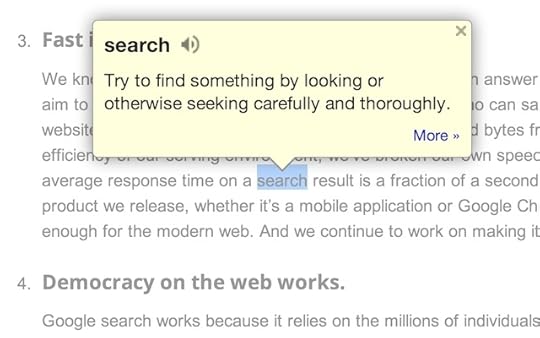
Dictionaries are important for any serious research project and having an extension that automates the looking-up process is a major time saver.
This is probably the simplest Chrome extension in this article but also one of the most useful.
#22: Panda 5
Panda 5 turns the new tab page into a portal of all your favourite websites.
If you constantly find yourself accessing the same bunch of websites for work, research or projects, Panda 5 makes these accessible every time you open a new tab.
Once again, simple but very useful.
#23: Save to Google Drive
Save to Google Drive is a Chrome extension built by the Google Drive team itself.

As the name suggests, this extension allows you to save web content to Google Drive with a single click. You can save documents and images, as well as HTML 5 video and audio.
#24: Pixlr Editor
Pixlr Editor is a free photo editor that opens in the browser. Essentially, it’s like a simple version of Photoshop that you can use in Chrome without any native software.

Pixlr might not match Photoshop’s native desktop app in terms of functionality but it is a capable tool for most photo editing needs. Crucially, you can create and edit layers in Pixlr, which opens up a lot of possibilities for advanced photo editing.
For a free, in-browser tool, I have no complaints at all.
Browse faster with these Chrome extensions
One of the biggest technical problems with the Chrome browser is that it suffers from some speed and CPU issues. I’ve switched browsers in the past due to this but ended up turning back to Chrome as my default browser every time.
Luckily, there are a number of extensions that will help you speed up Chrome and relieve CPU stress.
#25: OneTab
The OneTab Chrome extension allows you to save all of the tabs within a browser window into a list, which you can access and reopen at a later date.

If you’re anything like me, you could have dozens of Chrome tabs open at any time and this is a serious performance killer. OneTab is a great solution if you find yourself leaving a bunch of tabs open that you don’t need now but you want to keep them accessible for later.
#26: Adblock Plus
I think Adblock Plus was the first Chrome extension I ever downloaded and it was the first one re-downloaded when I came back to Chrome.

There is a genuine issue with the web in terms of how websites are able to monetise and a lack of options outside of advertising, especially for publishers.
Unfortunately, though, the vast majority of ad implementations are highly intrusive and, until this changes, ad blockers are going to remain highly popular.
#27: The Great Suspender
The Great Suspender was an extension I only discovered while I was researching for this article but it has remained installed and activated ever since.

Earlier, we looked at OneTab, which allows you to save open tabs as a list and temporarily close them. Now, The Great Suspender automatically kills pages after they’ve been inactive for a set period and automatically reloads them once you navigate to them again (you can also turn aromatic reloading off).
Chrome becomes a much faster browser and so does your computer without so much of its CPU being hogged up by active tabs.
#28: LastPass
We all know we should have unique and equally complex passwords every platform we sign into but who on this planet is going to remember all of these?
It’s not as if a notebook or online document filled with all of your passwords is any better for security.
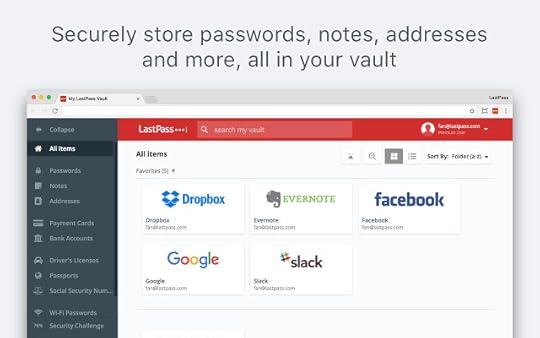
With LastPass, you don’t need to remember your passwords or find a way to securely store and access them.
Essentially, LastPass allows you to store all of your usernames and passwords securely and access everything with a single password via LastPass.
Problem solved.
#29: Pushbullet
Pushbullet brings all of your messaging into Chrome so you can keep the conversations going without navigating between different apps.

You can send and receive SMS messages from your computer and chat via popular apps like WhatsApp, Kik and Facebook Messenger.
If streamlined communication is important for your workflow, then Pushbullet could be a crucial tool. For me, personally, messaging tends to get in the way of my progress but I understand this doesn’t apply to everyone.
#30: Chrome Remote Desktop
Chrome Remote Desktop allows you to access other devices securely over the internet.

With this extension, you can access other people’s devices, allowing them to access your own. This can be crucial for remote teams when you need technical support to fix a problem with your computer or help someone else who’s having problems with their own.
The last thing you want is these issues bringing a remote team to a standstill.
Which are your favourite Chrome extensions?
Having used all of the Chrome extensions in this article, I’ve currently got around half a dozen of them active in my browser right now and probably another half a dozen or so installed for use when I need them.
For the ultimate productivity extension, I would have to recommend Serene because it packs so many scientifically-backed productivity features into a single tool.
That being said, some of my favourite Chrome extensions are the simple ones like Pocket, Toggl Button and The Great Suspender.
The post 30 Best Chrome Extensions for Productivity in 2020 appeared first on Venture Harbour.



